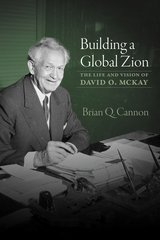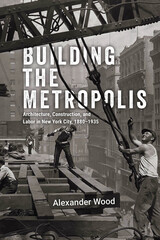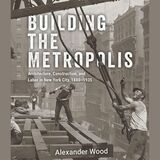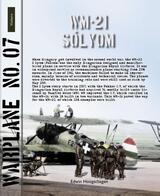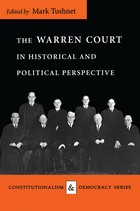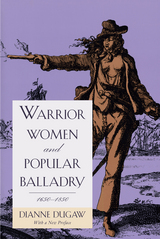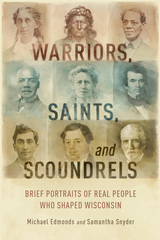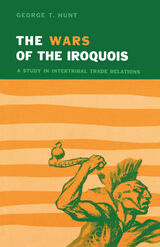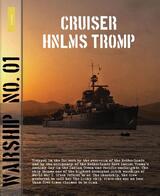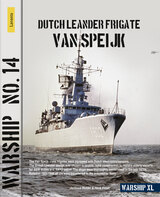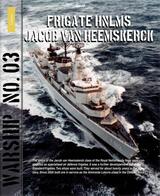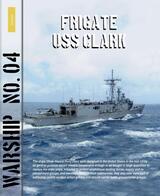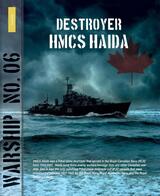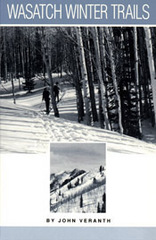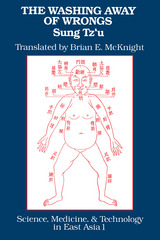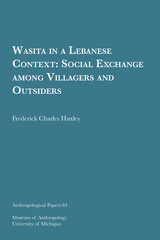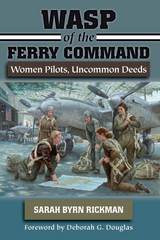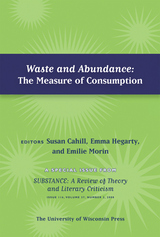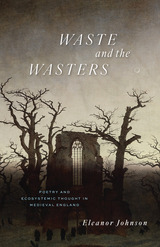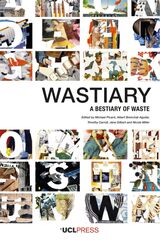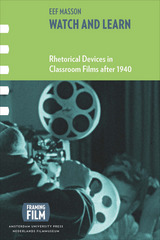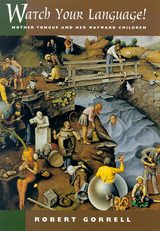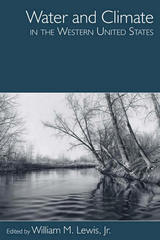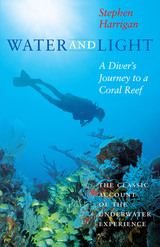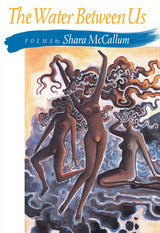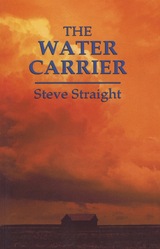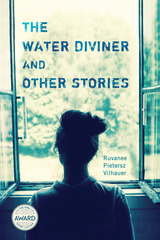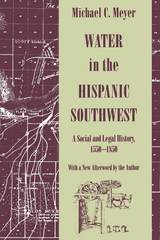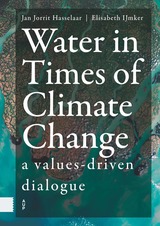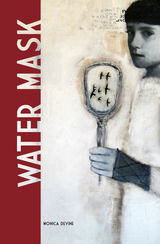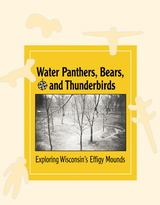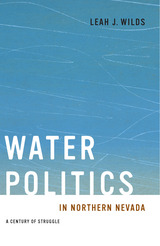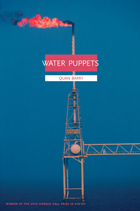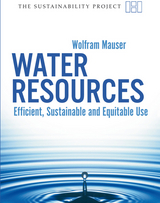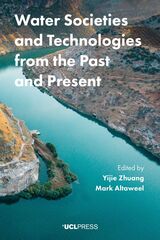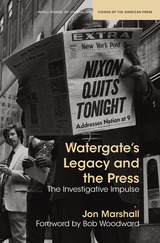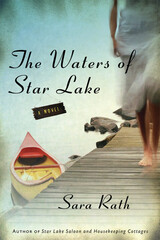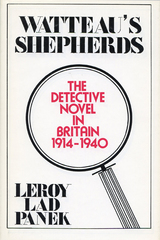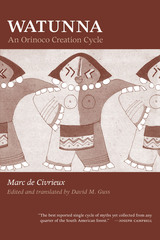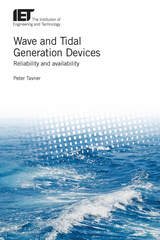Warplane 07: Weis WM.21 Sólyom
Edwin Hoogschagen
Amsterdam University Press, 2017 When Hungary got involved in World War II, the WM-21 Sólyom (Falcon) was the only Hungarian designed and manufactured plane in service with the Hungarian Royal Airforce. It was in widespread service as reconnaissance plane starting from 1938 onwards. In June of 1941, the machines failed to make an impression, mainly because of accidents and technical issues. The planes were diverted to the training role and were still used as such by May 1945.
The Sólyom story starts in 1927, with the Fokker C.V, of which the Hungarian Royal Airforce had acquired 76, mostly built under license by Manfred Weiss (WM). WM improved the C.V, which resulted in the WM-16, with 18 built in two variants. This WM-16 paved the way for the WM-21, of which 128 examples were built.
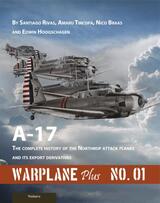 Warplane Plus 01: A17 - The Complete History of the Northrop Attack Planes and Its Export Derivatives
Santiago Rivas
Amsterdam University Press, 2023 The Northrop Corporation offered the single engined Gamma 2F attack plane to the US Army Air Corps in October 1934. After modification work this type evolved into the highly innovative A-17 attack aircraft of which 110 aircraft were ordered. Northrop integrated all modern aircraft technologies of the day, such as all metal monocoque construction, two pitch propeller, flaps and dive brakes into the design, combined with forward firing machine guns fitted in the wings, a respectable bomb load, high speeds and admirable flying range. It eclipsed all other attack types then in service.
This book offers an overview of an iconic aeroplane. The authors, all specialists in their field, have compiled a comprehensive story and gathered more than 350 photographs, colour profiles and maps, thus offering a fascinating view at an aircraft type linking the ‘Golden Age of aviation’ days with the dark years of World War Two.
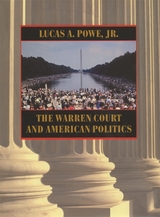 The Warren Court and American Politics
Lucas A. Powe Jr.
Harvard University Press, 2000 The Supreme Court under Chief Justice Earl Warren was the most revolutionary and controversial Supreme Court in American history. But in what sense? Challenging the reigning consensus that the Warren Court, fundamentally, was protecting minorities, Lucas A. Powe, Jr. revives the valuable tradition of looking at the Supreme Court in the wide political environment to find the Warren Court a functioning partner in Kennedy–Johnson liberalism. Thus the Court helped to impose national liberal-elite values on groups that were outliers to that tradition: the white South, rural America, and areas of Roman Catholic dominance.In a learned and lively narrative, Powe discusses over 200 significant rulings: the explosive Brown decision, which fundamentally challenged the Southern way of life; reapportionment (one person, one vote), which changed the political balance of American legislatures; the gradual elimination of anti-Communist domestic security programs; the reform of criminal procedures (Mapp, Gideon, Miranda); the ban on school-sponsored prayer; and a new law on pornography.Most of these decisions date from 1962, when those who shaped the dominant ideology of the Warren Court of storied fame gained a fifth secure liberal vote. The Justices of the majority were prominent individuals, brimming with confidence, willing to help shape a revolution and see if it would last.
 The Warren Court: Constitutional Decision as an Instrument of Reform
Archibald Cox
Harvard University Press The appointment of Earl Warren as Chief Justice of the United States in 1953 marked the opening of a new era in the nation’s constitutional development. As Archibald Cox points out in his Preface, during the next fifteen years the Supreme Court rewrote, with profound social consequences, major constitutional doctrines governing race relations, the administration of criminal justice, and the operation of the political process. The extent and the rapidity of these changes raise grave questions concerning the nature and function of constitutional adjudication and the proper role of the Supreme Court in the national life.In these lectures, originally given in somewhat shorter form in Honolulu in the summer of 1967 under the joint auspices of Harvard Law School and the University of Hawaii, Mr. Cox describes the main lines of constitutional development under the Warren Court. He analyzes the underlying pressures involved and the long-range institutional consequences in terms of the distribution of governmental power. The central theme of Mr. Cox’s book is embodied in his examination of the American paradox that invests the judicial branch with the responsibility of deciding “according to law” our most pressing and divisive social, economic, and political questions.Although not uncritical of the grounds on which several of the court’s crucial decisions have been reached, Mr. Cox comes to the conclusion that the trend of the rulings has been “in keeping with the mainstream of American history—a bit progressive but also moderate, a bit humane but not sentimental, a bit idealistic but seldom doctrinaire, and in the long run essentially pragmatic—in short, in keeping with the true genius of our institutions.”
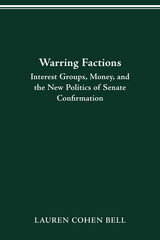 WARRING FACTIONS: INTEREST GROUPS, MONEY, SENATE CONFIRMATION
LAUREN COHEN BELL
Ohio State University Press, 2002 Warring Factions focuses on the United States Senate’s confirmation process, the constitutional process the Senate uses to approve or reject the president’s choices to fill federal government positions. It is a book about history, the evolution, and, arguably, the decline of the process. Most significantly, it is a book that demonstrates the extent to which interest groups and money have transformed the Senate’s confirmation process into a virtual circus. Based on in-depth research, including two dozen original interviews with United States senators, former senators and Senate staff members and interest group leaders, this volume demonstrates that today’s confirmation process is nothing more than an extension of the Senate’s legislative work. Changes to internal Senate norms in the 1960s and 1970s, coupled with changes to the external political environment, have allowed interest groups to dominate the Senate confirmation process.
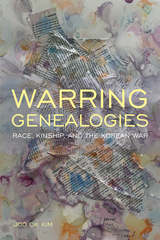 Warring Genealogies: Race, Kinship, and the Korean War
Joo Ok Kim
Temple University Press, 2022 Warring Genealogies examines the elaboration of kinships between Chicano/a and Asian American cultural production, such as the 1954 proxy adoption of a Korean boy by Leavenworth prisoners. Joo Ok Kim considers white supremacist expressions of kinship—in prison magazines, memorials, U.S. military songbooks—as well as critiques of such expressions in Chicana/o and Korean diasporic works to conceptualize racialized formations of kinship emerging from the Korean War. Warring Genealogies unpacks writings by Rolando Hinojosa (Korean Love Songs, The Useless Servants) and Luis Valdez (I Don’t Have to Show You No Stinking Badges, Zoot Suit) to show the counter-representations of the Korean War and the problematic depiction of the United States as a benevolent savior. Kim also analyzes Susan Choi’s The Foreign Student as a novel that proposes alternative temporalities to dominant Korean War narratives. In addition, she examines Chicano military police procedurals, white supremacist women’s organizations, and the politics of funding Korean War archives. Kim’s comparative study Asian American and Latinx Studies makes insightful connections about race, politics, and citizenship to critique the Cold War conception of the “national family.”
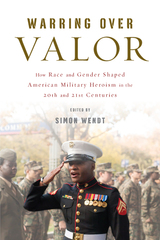 Warring over Valor: How Race and Gender Shaped American Military Heroism in the Twentieth and Twenty-First Centuries
Wendt, Simon
Rutgers University Press, 2019 By focusing on how the idea of heroism on the battlefield helped construct, perpetuate, and challenge racial and gender hierarchies in the United States between World War I and the present, Warring over Valor provides fresh perspectives on the history of American military heroism. The book offers two major insights into the history of military heroism. First, it reveals a precarious ambiguity in the efforts of minorities such as African Americans, Asian Americans, Native Americans, women, and gay men to be recognized as heroic soldiers. Paradoxically, America’s heroism discourse allowed them to press their case for full membership in the nation, but doing so simultaneously validated the dichotomous interpretations of race and gender they repudiated. The ambiguous role of marginalized groups in war-related hero-making processes also testifies to this volume’s second general insight: the durability and tenacity of the masculine warrior hero in U.S. society and culture. Warring over Valor bridges a gap in the historiography of heroism and military affairs.
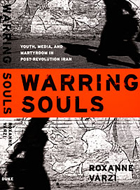 Warring Souls: Youth, Media, and Martyrdom in Post-Revolution Iran
Roxanne Varzi
Duke University Press, 2006 With the first Fulbright grant for research in Iran to be awarded since the Iranian revolution in 1979, Roxanne Varzi returned to the country her family left before the Iran-Iraq war. Drawing on ethnographic research she conducted in Tehran between 1991 and 2000, she provides an eloquent account of the beliefs and experiences of young, middle-class, urban Iranians. As the first generation to have come of age entirely in the period since the founding of the Islamic Republic of Iran, twenty-something Iranians comprise a vital index of the success of the nation’s Islamic Revolution. Varzi describes how, since 1979, the Iranian state has attempted to produce and enforce an Islamic public sphere by governing behavior and by manipulating images—particularly images related to religious martyrdom and the bloody war with Iraq during the 1980s—through films, murals, and television shows. Yet many of the young Iranians Varzi studied quietly resist the government’s conflation of religious faith and political identity. Highlighting trends that belie the government’s claim that Islamic values have taken hold—including rising rates of suicide, drug use, and sex outside of marriage—Varzi argues that by concentrating on images and the performance of proper behavior, the government’s campaign to produce model Islamic citizens has affected only the appearance of religious orthodoxy, and that the strictly religious public sphere is partly a mirage masking a profound crisis of faith among many Iranians. Warring Souls is a powerful account of contemporary Iran made more vivid by Varzi’s inclusion of excerpts from the diaries she maintained during her research and from journal entries written by Iranian university students with whom she formed a study group.
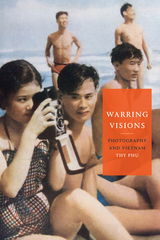 Warring Visions: Photography and Vietnam
Thy Phu
Duke University Press, 2021 In Warring Visions, Thy Phu explores photography from dispersed communities throughout Vietnam and the Vietnamese diaspora, both during and after the Vietnam War, to complicate narratives of conflict and memory. While the visual history of the Vietnam War has been dominated by American documentaries and war photography, Phu turns to photographs circulated by the Vietnamese themselves, capturing a range of subjects, occasions, and perspectives. Phu's concept of warring visions refers to contrasts in the use of war photos in North Vietnam, which highlighted national liberation and aligned themselves with an international audience, and those in South Vietnam, which focused on family and everyday survival. Phu also uses warring visions to enlarge the category of war photography, a genre that usually consists of images illustrating the immediacy of combat and the spectacle of violence, pain, and wounded bodies. She pushes this genre beyond such definitions by analyzing pictures of family life, weddings, and other quotidian scenes of life during the war. Phu thus expands our understanding of how war is waged, experienced, and resolved.
 The Warrior and the Priest: Woodrow Wilson and Theodore Roosevelt
John Milton Cooper Jr.
Harvard University Press, 1983 The colossal figures who shaped the politics of industrial America emerge in full scale in this engrossing comparative biography. In both the depth and sophistication of intellect that they brought to politics and in the titanic conflict they waged with each other, Roosevelt and Wilson were, like Hamilton and Jefferson before them, the political architects for an entire century.
All previous efforts to treat the philosophies and programs of Roosevelt’s New Nationalism and Wilson’s New Freedom have been partial and episodic. Now John Milton Cooper reconstructs in parallel lines the entire range of their ideologies and their struggles—their social identification in terms of class, education, and regional roots; the origins and evolution of their political thought; their party leadership roles; and their psychological characters.
After tracking the shared identities of young manhood, Cooper explains the conflict of their mature years that developed from opposing philosophies of government. Not until 1912, when Wilson ran for president, did they come together partially and briefly on common practical grounds of reform of the political process and efforts to curb big business in the public interest. Later, foreign policy in particular pitted them in a deeper conflict that consumed the rest of their lives.
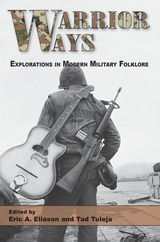 Warrior Ways: Explorations in Modern Military Folklore
Eric Eliason and Tad Tuleja
Utah State University Press, 2012 Warrior Ways is one of the first book-length explorations of military folklife, and focuses on the lore produced by modern American warriors, illuminating the ways in which members of the armed services creatively express the complex experience of military life. In short, lively essays, contributors to the volume, all of whom have close personal or professional relationships to the military, examine battlefield talismans, personal narrative (storytelling), “Jody calls” (marching and running cadences), slang, homophobia and transgressive humor, music, and photography, among other cultural expressions.
Military folklore does not remain in an isolated subculture; it reveals our common humanity by delighting, disturbing, infuriating, and inspiring both those deeply invested in and those peripherally touched by military life. Highlighting the contemporary and historical importance of the military in American life, Warrior Ways will be of interest to scholars and students of folklore, anthropology, and popular culture; those involved in veteran services and education; and general readers interested in military culture.
Warrior Women and Popular Balladry, 1650-1850
Dianne Dugaw
University of Chicago Press, 1995 This interdisciplinary study uncovers a fascination with women cross dressers in the popular literature of early modern Britain, in a wide range of texts from popular ballads and chapbook life histories to the comedies and tragedies of aristocratic literature. Dugaw demonstrates the extent to which gender and sexuality are enacted as constructs of history.
Warriors, Saints, and Scoundrels: Brief Portraits of Real People Who Shaped Wisconsin
Michael Edmonds
Wisconsin Historical Society Press, 2017 A governor who saw ghosts, an incorrigible horse thief, a husband and wife who each stood over seven feet tall, an American Indian chief who defied forced removal, and the first woman to practice law before the Supreme Court: these are just some of the remarkable characters whose lives influenced and defined the state of Wisconsin. Authors Michael Edmonds and Samantha Snyder plumbed the depths of the Wisconsin Historical Society’s collections to research and compose lively portraits of eighty of these notable individuals: mayors, ministers, mystics, murderers, and everything in between. Each story is followed by recommended sources for readers’ continued exploration. Whether read on the fly or all in one sitting, these short, colorful narratives will intrigue and inform as you delve into Wisconsin’s diverse and diverting history.
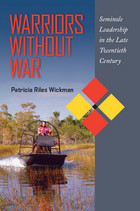 Warriors Without War: Seminole Leadership in the Late Twentieth Century
Patricia Riles Wickman
University of Alabama Press, 2012
Warriors Without War takes readers beneath the placid waters of the Seminole’s public image and into the fascinating depths of Seminole society and politics.
For the entire last quarter of the twentieth century, the Seminole Tribe of Florida, a federally recognized American Indian Tribe, struggled as it transitioned from a tiny group of warriors into one of the best-known tribes on the world’s economic stage through their gaming enterprises. Caught between a desperate desire for continued cultural survival and the mounting pressures of the non-Indian world—especially, the increasing requirements of the United States government— the Seminoles took a warriorlike approach to financial risk management. Their leader was the sometimes charming, sometimes crass and explosive, always warriorlike James Billie, who twice led the tribe in fights with the State of Florida that led all the way to the US Supreme Court. Patricia Riles Wickman, who lived and worked for fifteen years with the Seminole people, chronicles the near-meteoric rise of the tribe and its leader to the pinnacle of international fame, and Billie’s ultimate fall after twenty-four years in power. Based partly on her own personal experiences working with the Seminole Tribe of Florida, Wickman has produced an in-depth study of the rise of one of the largest Indian gaming operations in the United States that reads almost like a Capote nonfiction novel.
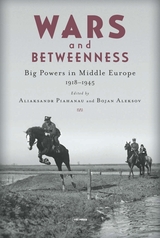 Wars and Betweenness: Big Powers and Middle Europe, 1918-1945
Aliaksandr Piahanau
Central European University Press, 2020 The region between the Baltic and the Black Sea was marked by a set of crises and conflicts in the 1920s and 1930s, demonstrating the diplomatic, military, economic or cultural engagement of France, Germany, Russia, Britain, Italy and Japan in this highly volatile region, and critically damaging the fragile post-Versailles political arrangement. The editors, in naming this region as "Middle Europe" seek to revive the symbolic geography of the time and accentuate its position, situated between Big Powers and two World Wars. The ten case studies in this book combine traditional diplomatic history with a broader emphasis on the geopolitical aspects of Big-Power rivalry to understand the interwar period. The essays claim that the European Big Powers played a key role in regional affairs by keeping the local conflicts and national movements under control and by exploiting the region's natural resources and military dependencies, while at the same time strengthening their prestige through cultural penetration and the cultivation of client networks. The authors, however, want to avoid the simplistic view that the Big Powers fully dominated the lesser players on the European stage. The relationship was indeed hierarchical, but the essays also reveal how the "small states" manipulated Big-Power disagreements, highlighting the limits of the latters' leverage throughout the 1920s and the 1930s.
 War's Ends: Human Rights, International Order, and the Ethics of Peace
James G. Murphy
Georgetown University Press, 2016 Before military action, and even before mobilization, the decision on whether to go to war is debated by politicians, pundits, and the public. As they address the right or wrong of such action, it is also a time when, in the language of the just war tradition, the wise would deeply investigate their true claim to jus ad bellum (“the right of war”). Wars have negative consequences, not the least impinging on human life, and offer infrequent and uncertain benefits, yet war is part of the human condition. James G. Murphy’s insightful analysis of the jus ad bellum criteria—competent authority, just cause, right intention, probability of success, last resort, and proportionality—is grounded in a variety of contemporary examples from World War I through Vietnam, the "soccer war" between Honduras and El Salvador, Afghanistan, and the Middle East conflict. Murphy argues persuasively that understanding jus ad bellum requires a primary focus on the international common good and the good of peace. Only secondarily should the argument about going to war hinge on the right of self-defense; in fact, pursuing the common good requires political action, given that peace is not simply the absence of violence. He moves on to demonstrate the interconnectedness of the jus ad bellum criteria, contending that some criteria depend logically on others—and that competent authority, not just cause, is ultimately the most significant criterion in an analysis of going to war. This timely study will be of special interest to scholars and students in ethics, war and peace, and international affairs.
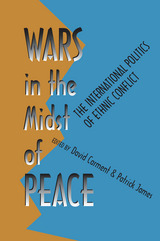 Wars in the Midst of Peace: The International Politics of Ethnic Conflict
David Carment
University of Pittsburgh Press, 1997
Violent conflicts rooted in ethnicity have erupted all over the world. Since the Cold War ended and a new world order has failed to emerge, political leaders in countries long repressed by authoritarianism, such as Yugoslavia, have found it easy to mobilize populations with the ethnic rallying cry. Thus, the worldwide shift to democratization has often resulted in something quite different from effective pluralism.
This volume of essays assembles a diverse array of approaches to the problems of ethnic conflict, with researchers and scholars using pure theory, comparative case studies, and aggregate data analysis to approach the complex questions facing today’s leaders. How do we keep communal conflicts from deteriorating into sustained violence? What models can we follow to promote peaceful secession? What effect does--or should--ethnic conflict have on foreign policy?
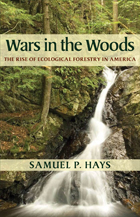 Wars in the Woods: The Rise of Ecological Forestry in America
Samuel P. Hays
University of Pittsburgh Press, 2006
Wars in the Woods examines the conflicts that have developed over the preservation of forests in America, and how government agencies and advocacy groups have influenced the management of forests and their resources for more than a century. Samuel Hays provides an astute analysis of manipulations of conservation law that have touched off a battle between what he terms “ecological forestry” and “commodity forestry.” Hays also reveals the pervading influence of the wood products industry, and the training of U.S. Forest Service to value tree species marketable as wood products, as the primary forces behind forestry policy since the Forest Management Act of 1897.
Wars in the Woods gives a comprehensive account of the many grassroots and scientific organizations that have emerged since then to combat the lumber industry and other special interest groups and work to promote legislation to protect forests, parks, and wildlife habitats. It also offers a review of current forestry practices, citing the recent Federal easing of protections as a challenge to the progress made in the last third of the twentieth century.
Hays describes an increased focus on ecological forestry in areas such as biodiversity, wildlife habitat, structural diversity, soil conservation, watershed management, native forests, and old growth. He provides a valuable framework for the critical assessment of forest management policies and the future study and protection of forest resources.
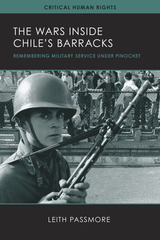 The Wars inside Chile's Barracks: Remembering Military Service under Pinochet
Leith Passmore
University of Wisconsin Press, 2020 From 1973 to 1990 in Chile, approximately 370,000 young men—mostly from impoverished backgrounds—were conscripted to serve as soldiers in Augusto Pinochet's violent regime. Some were brutal enforcers, but many themselves endured physical and psychological abuse, survival and torture training, arbitrary punishments, political persecution, and forced labor. Leith Passmore examines the emergence, in the early twenty-first century, of a movement of ex-conscripts seeking reparations. The former soldiers challenged the politics of memory that had shaped Chile's truth and reconciliation efforts, demanding recognition of their own broken families, ill health and incapacity to work, and damaged sense of self.
Relying on unpublished material, testimony, interviews, and field notes, Passmore locates these individuals' narratives of victimhood at the intersection of long-term histories of patriotism, masculinity, and cyclical poverty. These accounts reveal in detail how Pinochet's war against his own citizens—as well as the "almost-wars" with neighboring Peru, Bolivia, and Argentina—were also waged inside Chile's army barracks.
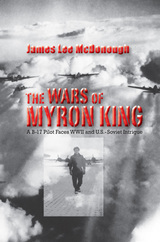 The Wars of Myron King: A B-17 Pilot Faces WW II and U.S.-Soviet Intrigue
James Lee Mcdonough
University of Tennessee Press, 2009 “McDonough brings such passionate perspective to this amazing and heretofore largely unknown story that it’s nearly impossible to put down.”
—James R. Hansen, prizewinning aerospace historian and bestselling author of First Man: The Life of Neil A. Armstrong
When Myron King of the U.S. Army Air Corps arrived in England in 1944, he fully expected to fly dangerous bombing missions over Nazi Germany. What the twenty-three-year-old lieutenant had no way of predicting, however, was that he would spend his last months in Europe entangled in a bizarre affair born of the mounting tensions between the United States and the Soviet Union. Ultimately, King faced three wars: the monumental conflict between the Allies and the Third Reich, the nascent Cold War, and a personal battle with the military brass to clear his name after enduring a grossly unjust court-martial.
This book presents an engrossing account of King’s early life and wartime service as part of the 401st Bombardment Group, U.S. Eighth Air Force. As a child growing up in New York and Tennessee, he was thoroughly captivated by the young field of aviation and dreamed of becoming a pilot. Attending college when Pearl Harbor was attacked, he realized his boyhood ambition by enlisting as an Air Corps cadet. After completing flight training two years later, King and his crew flew a B-17 bomber across the Atlantic to join their fellow airmen at a base near the English village of Deenethorpe—doing their first battle not with German fighters but with a raging storm during the Greenland-to-Iceland leg of the journey.
Once settled in Great Britain, the King Crew flew twenty missions from November 1944 through February 1945. It was on their last flight to Berlin that enemy fire crippled their plane and forced them to land in Poland amid the Russian forces that were advancing on Germany from the east. There events took a decidedly strange turn as King became embroiled in an incident involving a young stowaway and the increasingly complicated relations between the United States and Stalin’s regime. Scapegoated in the episode, King would leave the Air Corps with his honorable record severely soiled—a wrong that would take years to undo.
The Wars of Myron King is more than just a rattling good true-life adventure story. Based on a wide array of published and primary sources, including trial transcripts and interviews with King, the book offers a unique view of the experience of air combat, the intertwining of politics and military justice, and the complex circumstances that inaugurated the Cold War.
James Lee McDonough is professor emeritus of history at Auburn University. He is the author of ten books, including Shiloh—In Hell Before Night, Stones River—Bloody Winter in Tennessee, Chattanooga—A Death Grip on the Confederacy, War in Kentucky: From Shiloh to Perryville, and Nashville: The Western Confederacy’s Final Gamble. This is his second book on a World War II subject.
Wars of the Iroquois: A Study in Intertribal Trade Relations
George T. Hunt
University of Wisconsin Press, 1960 Back in print.
George T. Hunt’s classic 1940 study of the Iroquois during the middle and late seventeenth century presents warfare as a result of depletion of natural resources in the Iroquois homeland and tribal efforts to assume the role of middlemen in the fur trade between the Indians to the west and the Europeans.
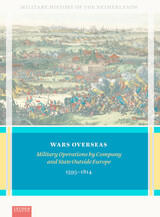 Wars Overseas: Military Operations by Company and State Outside Europe 1595-1814
Gerrit Knaap
Leiden University Press, 2024 "Wars Overseas focuses on Dutch military actions outside Europe in the early-modern period. Those actions were rooted in the Eighty Years’ War, the conflict between Spain and the northern Netherlands that led to the creation of the independent Dutch Republic. The Republic was determined to trade in tropical products from Asia, Africa and the Americas, commodities on which the Iberians had had a monopoly for a century or more. To do so, however, it would have to fight. The fledgling State did not itself have the resources for such an undertaking and effectively left it to two monopolistic trading companies, the Dutch East India Company or VOC and the Dutch West India Company or WIC. In Asia, through an adroit policy of war and diplomacy, the VOC built a powerful trade-based empire that lasted for almost two centuries. The WIC began with a large-scale offensive in the Atlantic area, operating in both Africa and the Americas, albeit with less success than its sister company in Asia. In those conflicts overseas, empire builders like Jan Pietersz Coen and Johan Maurits of Nassau played crucial roles. How did they act? What resources did they have? And how did the military revolution in Europe impact the process of Dutch expansion overseas? Wars Overseas, the first comprehensive overview of Dutch military action in Asia, Africa, and the Americas, examines these and many other questions in detail, while thematic chapters focus on the deployment of sailors, soldiers and ships, on weapons and fortification-building, and on the confrontation with non-European allies and adversaries."
Wars, Parties and Nationalism: Essays on the Politics and Society of Nineteenth-century Latin America
Edited by Eduardo Posada-Carbo
University of London Press, 1995 The five papers presented in this volume discuss various aspects of the politics of Latin America during the nineteenth century. Although the scope of the essays is wide - including topics such as civil wars, political parties and the use of travel narratives for partisan purposes - the overriding concern is with nationalism and the role of the state.
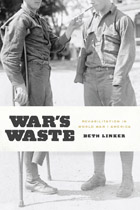 War's Waste: Rehabilitation in World War I America
Beth Linker
University of Chicago Press, 2011 With US soldiers stationed around the world and engaged in multiple conflicts, Americans will be forced for the foreseeable future to come to terms with those permanently disabled in battle. At the moment, we accept rehabilitation as the proper social and cultural response to the wounded, swiftly returning injured combatants to their civilian lives. But this was not always the case, as Beth Linker reveals in her provocative new book, War’s Waste. Linker explains how, before entering World War I, the United States sought a way to avoid the enormous cost of providing injured soldiers with pensions, which it had done since the Revolutionary War. Emboldened by their faith in the new social and medical sciences, reformers pushed rehabilitation as a means to “rebuild” disabled soldiers, relieving the nation of a monetary burden and easing the decision to enter the Great War. Linker’s narrative moves from the professional development of orthopedic surgeons and physical therapists to the curative workshops, or hospital spaces where disabled soldiers learned how to repair automobiles as well as their own artificial limbs. The story culminates in the postwar establishment of the Veterans Administration, one of the greatest legacies to come out of the First World War.
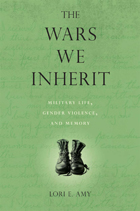 The Wars We Inherit: Military Life, Gender Violence, and Memory
Authored by Lori E. Amy
Temple University Press, 2010 By combining personal memoir and critical analysis, Lori Amy links the violence we live in our homes to the violence that structures our larger culture. The Wars We Inherit brings insights from memory and trauma studies to the story of violence in the author’s own family. In this brave, fascinating and compelling book, Amyconcerns herself with the violence associated with the military, and how this institution of public, cultural violence, with its hypermasculinity, pervades society with physical, verbal, emotional and sexual aggression. She uses her war-veteran father to represent the chaotic and dehumanizing impact of war to show how violence is experienced and remembered. Amy provides examples that support the relationship between military structures and domestic violence, or how the sexual violence that permeates her family prompts debates about the nature of trauma and memory. In addition, Amy employs feminist psychoanalytic theory, cultural and trauma studies, and narrative theory, to explain how torture in Abu Ghraib is on a direct continuum with the ordinary violence inherent in our current systems of gender and nation. Placing individual experience in cultural context, Amy argues that “if we can begin, in our own lives, to transform the destructive ways that we have been shaped by violence, then we might begin to transform the cultural conditions that breed violence.”
 The Warsaw Ghetto's Little Nurse: The Memoirs of Alina Margolis-Edelman
Irena Grudzińska Gross
Central European University Press, 2025 The memoirs of the Polish-Jewish writer, physician and humanitarian aid activist, Alina Margolis-Edelman (1922–2008), presents the life of its author from her childhood in Łódź, Poland till the end of the World War II. Soon after the beginning of the war her father was shot by the Gestapo, and her mother moved to Warsaw Ghetto with Alina and her younger brother. Alina enrolled in the Jewish School of Nursing and worked as a nurse and a courier for the Resistance movement. In a rescue action she describes in the book, she saved the life of Marek Edelman – one of the leaders of the Ghetto Uprising (1943), and he later became her husband. The stories told in her book illuminate issues of anti-Semitism, Holocaust, and Jewish resistance to oppression. She writes about solidarity in times of great danger, resilience in dire situations, dignity of love and care.
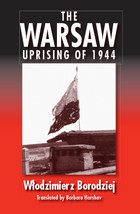 The Warsaw Uprising of 1944
Wlodzimierz Borodziej
University of Wisconsin Press, 2006 The Warsaw Uprising of 1944 dramatically tells the largely unknown story of the Warsaw resistance movement during World War II. Desperate to free themselves from German military oppression but also hoping to show the advancing Soviets that they could not impose easy rule upon the citizens of Warsaw, the Poles launched an almost hopeless attack against the Germans on August 1, 1944. Wlodzimierz Borodziej presents an evenhanded account of what is commonly considered the darkest chapter in Polish history during World War II. In only sixty-three days, the Germans razed Warsaw to the ground and 200,000 people, mostly civilians, lost their lives. The result—a heroic and historically pivotal turning point—meant that the Poles would lose both their capital and an entire generation. This concise account of the trauma—little known to English-speaking readers—will appeal to anyone interested in the history of World War II in general and is a must-read for students of Polish history in particular.
Warship 1: Cruiser HNLMS Tromp
Jantinus Mulder
Amsterdam University Press, 2012 Trapped in the Far East by the over-run of the Netherlands and by the occupancy of the Netherlands East Indies, Tromp's destiny lay in the Indian Ocean and Pacific onslaughts. The ship became one of the highest decorated Dutch warships of World War II. Often referred to as 'The Ghost Ship', the crew preferred to call her 'The Lucky Ship', since she was no less than five times claimed to be sunk.
Warship 14: Dutch Leander Frigate Van Speijk
Jantinus Mulder
Amsterdam University Press, 2023 The Van Speijk class frigates were equipped with Dutch electronics/sensors. The British Leander design was chosen to enable rapid construction to replace elderly escorts for ASW duties and NATO patrol. The ships were thoroughly modernised in the late 1970s. Between 1986-1990 all six were transferred to the Indonesian Navy.
Warship 4: Frigate USS Clark
Rindert van Zinderen Bakker
Amsterdam University Press The ships of the Oliver Hazard Perry-class were designed in the United States in the mid-1970’s as general-purpose escort vessels. They were inexpensive enough to be bought in large quantities and replace older ships. Meant to protect amphibious landing forces, supply and replenishment groups, and merchant convoys from submarines, they also became part of battleship-centric groups and aircraft battle/strike groups.
Warship 5: Protected Cruiser Gelderland
Jantinus Mulder
Amsterdam University Press Protected cruiser (Pantserdekschip) HNLMS Gelderland was a Holland-class cruiser of the Royal Netherlands Navy. This class, of six ships, was considered a modest, but well thought-out design. At a speed of 10 knots the radius of action would have been 8000 miles, while the two triple expansion engines could generate a maximum speed of 19,5 knots.
Warship 6: Destroyer HMCS Haida
Rindert van Zinderen Bakker
Amsterdam University Press HMCS Haida was a destroyer of the Tribal-class serving in the Royal Canadian Navy (RCN) from 1943-1963. During World War II, Haida sank more enemy surface tonnage than any other Canadian warship. In the Korean War the ship did two tours of duty.
Nowadays she is the only surviving Tribal-class destroyer out of 27 units that were constructed between 1937-1945 for the Royal Navy, Royal Australian Navy, and the Royal Canadian Navy.
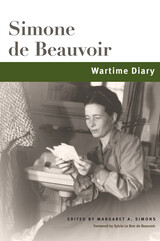 Wartime Diary
Simone de Beauvoir; Translation and Notes by Anne Deing Cordero; Edited by Margaret A. Simons and Sylvie Le Bon de Beauvoir; Foreword by Sylvie Le Bon de Beauvoir
University of Illinois Press, 2021 Provocative insights into Beauvoir's philosophical and personal development during wartime
Written from September 1939 to January 1941, Simone de Beauvoir’s Wartime Diary gives English readers unabridged access to a scandalous text that threatened to overturn traditional views of Beauvoir’s life and work. Beauvoir's clandestine affair with Jacques Bost and sexual relationships with various young women challenge the conventional picture of Beauvoir as the devoted companion of Jean-Paul Sartre. At the same time, her account of completing her novel She Came to Stay at a time when Sartre had just begun Being and Nothingness questions the traditional view of Beauvoir’s novel as merely illustrating Sartre’s philosophy. Wartime Diary also traces Beauvoir's philosophical transformation as she broke from the prewar solipsism of She Came to Stay in favor of the postwar political engagement of The Second Sex. Beauvoir's emerging existentialist ethics reflect the dramatic collective experiences of refugees fleeing German invasion and life under Nazi occupation. The evolution of her thought also reveals the courageous reaffirmation of her individuality in constructing a humanist ethics of freedom and solidarity. This edition also features previously unpublished material, including her musings about consciousness and order, recommended reading lists, and notes on labor unions. In providing new insights into Beauvoir’s philosophical development, the Wartime Diary promises to rewrite a crucial chapter of Western philosophy and intellectual history.
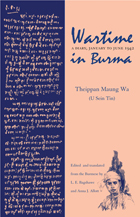 Wartime in Burma: A Diary, January to June 1942
Theippan Maung Wa
Ohio University Press, 2009 This diary, begun after the Japanese attack on Pearl Harbor and covering the invasion of Burma up to June 1942, is a moving account of the dilemmas faced by the well-loved and prolific Burmese author Theippan Maung Wa (a pseudonym of U Sein Tin) and his family. At the time of the Japanese invasion, U Sein Tin was deputy secretary in the Ministry of Home and Defense Affairs. An Oxford-trained member of the Indian Civil Service, working for the British administration on the eve of the invasion, he lived with his wife and three small children in Rangoon. Wartime in Burma is a stirring memoir that presents a personal account of U Sein Tin’s feelings about the war, his anxiety for the safety of his family, the bombing of Rangoon, and what happened to them during the next six chaotic months of the British retreat. The author and his family leave Rangoon to live in a remote forest in Upper Burma with several other Burmese civil servants, their staff, and valuable possessions—rich pickings for robbers. His diary ends abruptly on June 5, his forty-second birthday; U Sein Tin was murdered on June 6 by a gang of Burmese bandits. The diary pages, scattered on the floor of the house, were rescued by his wife and eventually published in Burma in 1966. What survives is a unique account that shines new light on the military retreat from Burma.
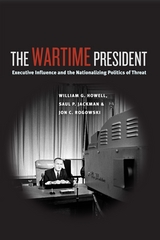 The Wartime President: Executive Influence and the Nationalizing Politics of Threat
William G. Howell, Saul P. Jackman, and Jon C. Rogowski
University of Chicago Press, 2013 “It is the nature of war to increase the executive at the expense of the legislative authority,” wrote Alexander Hamilton in the Federalist Papers. The balance of power between Congress and the president has been a powerful thread throughout American political thought since the time of the Founding Fathers. And yet, for all that has been written on the topic, we still lack a solid empirical or theoretical justification for Hamilton’s proposition.
For the first time, William G. Howell, Saul P. Jackman, and Jon C. Rogowski systematically analyze the question. Congress, they show, is more likely to defer to the president’s policy preferences when political debates center on national rather than local considerations. Thus, World War II and the post-9/11 wars in Afghanistan and Iraq significantly augmented presidential power, allowing the president to enact foreign and domestic policies that would have been unattainable in times of peace. But, contrary to popular belief, there are also times when war has little effect on a president’s influence in Congress. The Vietnam and Gulf Wars, for instance, did not nationalize our politics nearly so much, and presidential influence expanded only moderately.
Built on groundbreaking research, The Wartime President offers one of the most significant works ever written on the wartime powers presidents wield at home.
 Wartime Sexual Violence: From Silence to Condemnation of a Weapon of War
Kerry F. Crawford
Georgetown University Press, 2017 Reports of sexual violence in armed conflict frequently appear in political discussions and news media, presenting a stark contrast to a long history of silence and nonrecognition. Conflict-related sexual violence has transitioned rapidly from a neglected human rights issue to an unambiguous security concern on the agendas of powerful states and the United Nations Security Council. Through interviews and primary-source evidence, Kerry F. Crawford investigates the reasons for this dramatic change and the implications of the securitization of sexual violence. Views about wartime sexual violence began changing in the 1990s as a result of the conflicts in the former Yugoslavia and Rwanda and then accelerated in the 2000s. Three case studies—the United States' response to sexual violence in the Democratic Republic of Congo, the adoption of UN Security Council Resolution 1820 in 2008, and the development of the United Kingdom’s Preventing Sexual Violence in Conflict Initiative—illustrate that use of the weapon of war frame does not represent pure co-optation by the security sector. Rather, well-placed advocates have used this frame to advance the antisexual violence agenda while simultaneously working to move beyond the frame’s constraints. This book is a groundbreaking account of the transformation of international efforts to end wartime sexual violence.
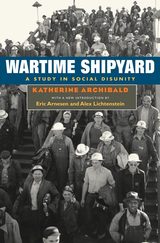 Wartime Shipyard: A STUDY IN SOCIAL DISUNITY
Katherine Archibald
University of Illinois Press, 2006 An eye-opening first-hand account of life in a WWII shipyard from a woman's perspective In 1942, Katherine Archibald, a graduate student at Berkeley, left the halls of academe to spend two years working in a nearby Oakland shipyard. She arrived with a host of preconceptions about the American working class, race relations and the prospect for their improvement, and wartime unity. Her experience working in a shipyard where women were seen as intruders, where "Okies" and black migrants from the South were regarded with barely-disguised hatred, and where trade unions preferred protecting their turf to defending workers' rights, threw much of her liberal faith into doubt. Archibald's 1947 book about her experiences, Wartime Shipyard: A Study in Social Disunity, remains a classic account of life and labor on the home front. This new edition includes an introduction written by historians Eric Arnesen and Alex Lichtenstein, who explore Archibald's work in light of recent scholarship on women and African Americans in the wartime workplace.
Wartime Washington: The Civil War Letters of Elizabeth Blair Lee
Edited by Virginia Jeans Laas
University of Illinois Press, 1991 Elizabeth Blair Lee was raised in Washington's political circles, and her husband, Samuel Phillips Lee, third cousin to Robert E. Lee, commanded the North Atlantic Blockading Squadron during the Civil War. When they married, Elizabeth promised to write every day they were apart. Of the hundreds of letters with which she kept her promise, Virginia Jeans Laas has edited a choice selection that illuminates the functioning of a nineteenth-century family and the Mrs. Lee's unique perspective on the political and military affairs of the nation's beleaguered capital.
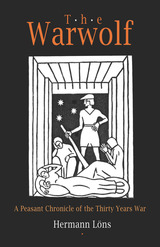 The Warwolf: A Peasant Chronicle of the Thirty Years War
Hermann Lons
Westholme Publishing, 2006 The conflict that ravaged seventeeth-century Europe, as seen in a classic German novel—freshly translated
The Thirty Years War, fought between 1618 and 1648, was a ruthless struggle for political and religious control of central Europe. Engulfing most of present-day Germany, the war claimed at least ten million lives. The lengthy conflict was particularly hard on the general population, as thousands of undisciplined mercenaries serving Sweden, Spain, France, the Netherlands, and various German principalities, robbed, murdered, and pillaged communities; disease spread out of control and starvation became commonplace. In The Warwolf, Hermann Löns's acclaimed historical novel, the tragedy and horrors of war in general, and these times in particular are revealed. The Warwolf, based on the author's careful research, traces the life of Harm Wulf, a land-owning peasant farmer of the northern German heath who realizes after witnessing the murder of neighbours and family at the hands of marauding troops that he has a choice between compromising his morals or succumbing to inevitable torture and death. Despite his desire for peace, Wulf decides to band with his fellow farmers and live like "wolves," fiercely protecting their isolated communities from all intruders. Löns's brilliant portrayal of the two sides faced by any person in a moral crisis—in Harm Wulf's case, whether to kill or be killed—continues to resonate. Originally published in 1910 and still in print in Germany, The Warwolf is available for first time in English.
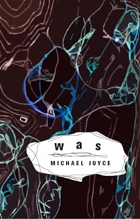 Was: Annales Nomadique: A Novel Of Internet
Michael Joyce
University of Alabama Press, 2007 A post-cyber “Pilgrim’s Progress. Was is half-poem, half-narrative, a nomadic history whose main character is the fleetingness of information itself. The novel’s title figure, the word was, marks that instant of utterance outside the present; neither past nor future but rather the interstitial space of any telling. Like Ariel in flight, Was takes place before you can say ‘come’ and ‘go,'" slipping away before you can "breath twice and cry ‘so, so." The nomadic lovers here, as any lovers, attempt to linger in the afterglow of what was, but it slips away like mist. Story begets story as if without author, events gathering into one another, as much memory as dream, their locales literally moving across the face of the globe. Continent to continent, from hemisphere to hemisphere, synaptic episodes strobe across the earth’s surface like thunderstorms seen from a satellite. Yet in these brief flashes a memorable and deeply moving procession of characters passes in vignette: lovers and children, parents and refugees, sailors, missionaries, clowns, mourners, forlorn warriors, sweet singers. Was is a brilliant new work by the author of afternoon, a story which the New York Times calls "the granddaddy of hypertext fictions"and the Toronto Globe and Mail describes as being "to the hypertext interactive novel what the Gutenberg bible is to publishing."
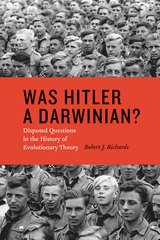 Was Hitler a Darwinian?: Disputed Questions in the History of Evolutionary Theory
Robert J. Richards
University of Chicago Press, 2013 In tracing the history of Darwin’s accomplishment and the trajectory of evolutionary theory during the late nineteenth and early twentieth centuries, most scholars agree that Darwin introduced blind mechanism into biology, thus banishing moral values from the understanding of nature. According to the standard interpretation, the principle of survival of the fittest has rendered human behavior, including moral behavior, ultimately selfish. Few doubt that Darwinian theory, especially as construed by the master’s German disciple, Ernst Haeckel, inspired Hitler and led to Nazi atrocities. In this collection of essays, Robert J. Richards argues that this orthodox view is wrongheaded. A close historical examination reveals that Darwin, in more traditional fashion, constructed nature with a moral spine and provided it with a goal: man as a moral creature. The book takes up many other topics—including the character of Darwin’s chief principles of natural selection and divergence, his dispute with Alfred Russel Wallace over man’s big brain, the role of language in human development, his relationship to Herbert Spencer, how much his views had in common with Haeckel’s, and the general problem of progress in evolution. Moreover, Richards takes a forceful stand on the timely issue of whether Darwin is to blame for Hitler’s atrocities. Was Hitler a Darwinian? is intellectual history at its boldest.
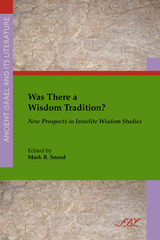 Was There a Wisdom Tradition: New Prospects in Israelite Wisdom Studies
Mark R. Sneed
SBL Press, 2015 Essential reading for scholars and students in wisdom studies
This collection of essays explores questions that challenge the traditional notion of a wisdom tradition among the Israelite literati, such as: Is the wisdom literature a genre or mode of literature or do we need new terminology? Who were the tradents? Is there such a thing as a “wisdom scribe” and what would that look like? Did the scribes who composed wisdom literature also have a hand in producing the other “traditions,” such as the priestly, prophetic, and apocalyptic, as well as other non-sapiential works? Were Israelite sages open to non-sapiential forms of knowledge in their conceptualization of wisdom?
Features:
- Recent genre theory in distinction from traditional form criticism
- Ancient Near Eastern comparative material
- A balanced collection that includes essays that seriously challenge and affirm the consensus view, as well as those that reconfigure it
Was This Heaven?: A Self-Portrait of Iowa on Early Postcards
Lyell D. Jr. Henry
University of Iowa Press, 1995 In the early decades of the twentieth century, Iowans all across the Hawkeye State succumbed to the nationwide craze for exchanging photographic postcards, mailing each other thousands of images—serious and whimsical—of Uncle Bob and Baby Dora, the Sunday school outing, train wrecks, the Fourth of July celebration, the merchants' carnival, the record-setting blizzard following the bin-busting harvest, the new courthouse, Ackley's Sauer-Kraut Band. Now, thanks to the generosity of David A. Wilson, whose ample collection of photographic cards would be the envy of those early Iowans, Lyell Henry has organized more than two hundred postcards into eight reflective chapters that create a beguiling collective portrait of Iowa life and culture from 1905 to 1919.
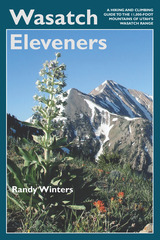 Wasatch Eleveners: A Hiking and Climbing Guide to the 11,000 foot Mountains of Utah's Wasatch Range
Winters, Randy
University of Utah Press, 2006 The Wasatch Mountains sit on the western edge of the Rockies. Stretching south through Utah from Bear River in the north to Mount Nebo in the central part of the state, their peaks dominate the skyline of Salt Lake City and nearby urban areas. Elevations range from 9,000 to almost 12,000 feet, with eighteen peaks above 11,000 feet. All of the 11ers can be summited as a day-hike, without the use of climbing gear.
This guide provides information on trailhead access, approaches, and routes for every 11,000-foot peak. It includes overview maps of major roads, topographical overview maps, and detailed route maps for each peak. There are also total roundtrip mileages, elevation-gain (or loss) figures, and alternate routes to help hikers plan their adventures.
Featured peaks include North Mount Nebo, South Mount Nebo, Middle Mount Nebo, Mount Timpanogos, 'South' Timpanogos, West American Fork Twin Peak, 'North' Timpanogos, 'South' American Fork Twin Peak, Unnamed 11,383, Unnamed 11,347, East Broads Fork Twin Peak, West Broads Fork Twin Peak, Pfeifferhorn, White Baldy, Sunrise Peak, Unnamed 11,288, Lone Peak, North Peak, Red Baldy, Red Top Mountain, South Thunder, North Thunder, Unnamed 11,137, Monte Cristo Peak, Dromedary Peak, Box Elder Peak, Mount Baldy, Provo Peak, Sugarloaf Mountain, 'East' Provo Peak, Mount Superior, and 'East' American Fork Twin Peak.
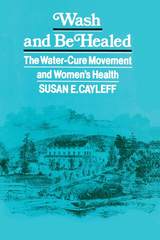 Wash and Be Healed: The Water-Cure Movement and Women's Health
Susan E. Cayleff
Temple University Press, 1991 In a century characterized by dramatic health-care remedies—bloodletting, purging, and leeching, for example—hydropathy was one of the most celebrated alternative forms of medical care. Unlike these other cures, however, hydropathy, which entailed various applications of cold water, also staunchly advocated the reformation of such personal habits as diet, exercise, dress, and way of life. Susan E. Cayleff explores the relationship between this fascinating sect of nineteenth-century medicine and the women who took the cure.
Wash and Be Healed investigates the theories, practices, medical and social philosophies, institutions, and the most prominent proponents of the water-cure movement and studies them in relation to the diverse reform networks of the nineteenth century. Documenting the popularity and importance of hydropathy among female activists, Cayleff argues that the water-cure movement was overpowered by allopathic (or orthodox) medicine which viewed hydropathy as a crackpot therapeutic largely because of its close association with nineteenth-century social activism. The book gives us an alternative view of social and sexual relationships which should contribute to the growing awareness among scholars that the history of health and healing must be more than the history of allopathic medicine.
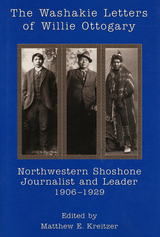 Washakie Letters Of Willie Ottogary
Matthew Kreitzer
Utah State University Press, 2000 Writings by American Indians from the early twentieth century or earlier are rare. Willie Ottogary's letters have the distinction of being firsthand reports of an Indian community's ongoing social life by a community member and leader. The Northwestern Shoshone residing at the Washakie colony in northern Utah descended from survivors of the Bear River Massacre. Most had converted to the Mormon Church and remained in northern Utah rather than moving to a federal Indian reservation. For over twenty years, local newspapers in Utah and southern Idaho regularly published letters from Ottogary reporting happenings-personal milestones and health crises, comings and goings, social events, economic conditions and activities, efforts at political redress-at Washakie and other Shoshone communities in the intermountain West. Matthew Kreitzer compiled and edited the letters of Ottogary and added historical commentary and appendices, biographical data on individuals Ottogary mentioned, and eighty-five rare historical photographs. Written in a vernacular English and printed unedited in the newspapers, the letters describe a society in cultural transition and present Ottogary's distinctively Shoshone point of view on anything affecting his people. Thus, they provide an unusual picture of Shoshone life through a critical period, a time when many Indian communities reached a historical nadir. While the letters unflinchingly report the many difficulties and challenges the Shoshone faced, they portray a vital and dynamic society, whose members led full lives and actively pursued their own interests. Ottogary lobbied constantly for Shoshone rights, forging alliances with Shoshone throughout the region, visiting Washington D.C., advocating legislation, and participating in Goshute-Western Shoshone draft resistance during World War I.
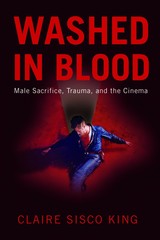 Washed in Blood: Male Sacrifice, Trauma, and the Cinema
King, Claire S
Rutgers University Press, 2012 Will Smith in I Am Legend. Leonardo DiCaprio in Titanic. Charlton Heston in just about everything. Viewers of Hollywood action films are no doubt familiar with the sacrificial victim-hero, the male protagonist who nobly gives up his life so that others may be saved. Washed in Blood argues that such sacrificial films are especially prominent in eras when the nation—and American manhood—is thought to be in crisis. The sacrificial victim-hero, continually imperiled and frequently exhibiting classic symptoms of post-traumatic stress disorder, thus bears the trauma of the nation. Claire Sisco King offers an in-depth study of three prominent cycles of Hollywood films that follow the sacrificial narrative: the early–to–mid 1970s, the mid–to–late 1990s, and the mid–to–late 2000s. From Vietnam-era disaster movies to post-9/11 apocalyptic thrillers, she examines how each film represents traumatized American masculinity and national identity. What she uncovers is a cinematic tendency to position straight white men as America’s most valuable citizens—and its noblest victims.
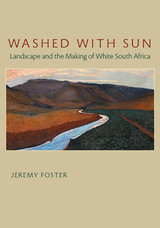 Washed with Sun: Landscape and the Making of White South Africa
Jeremy Foster
University of Pittsburgh Press, 2008 South Africa is recognized as a site of both political turmoil and natural beauty, and yet little work has been done in connecting these defining national characteristics. Washed with Sun achieves this conjunction in its multidisciplinary study of South Africa as a space at once natural and constructed. Weaving together practical, aesthetic, and ideological analyses, Jeremy Foster examines the role of landscape in forming the cultural iconographies and spatialities that shaped the imaginary geography of emerging nationhood. Looking in particular at the years following the British victory in the second Boer War, from 1902 to 1930, Foster discusses the influence of painting, writing, architecture, and photography on the construction of a shared, romanticized landscape subjectivity that was perceived as inseparable from “being South African,” and thus helped forge the imagined community of white South Africa.
In its innovative approach to South Africa's history, Washed with Sun breaks important new ground, combining the persuasive theory of cultural geography with the material specificity of landscape history.
The Washing Away of Wrongs: Forensic Medicine in Thirteenth-Century China
Sung Tz’u; Translated by Brian E. McKnight
University of Michigan Press, 1981 T'zu's The Washing Away of Wrongs (Hsi yüan chi lu), printed in 1247, is the oldest extant book on forensic medicine in the world. Written as a guide for magistrates in conducting inquests, the book is a major source on early Chinese knowledge of pathology and morbid anatomy. Includes a lengthy introductory essay by the translator.
 Washing Silk: The Life and Selected Poetry of Wei Chuang
Robin D. S. Yates
Harvard University Press, 1988 Wei Chuang was a prolific Tang dynasty poet. He not only wrote in the shih form (poems in the old and new styles, the latter having strict rules of meter, rhyme, and euphony), but also was one of two literati founders of the tz'u (lyric) tradition, based on a popular song form. This tripartite study provides a thoroughgoing picture of his life and work.
The book begins with the first detailed biography of Wei Chuang in a Western language, drawn both from historical sources and Wei's poetry. The shih poems are intensely autobiographical and provide insight into Wei's own experience and into the situation in China at the end of the ninth century. A second section analyzes the poetry, demonstrating that Wei's tz'u cannot be understood without reference to his shih compositions, a new approach to the totality of Wei's work. Finally, this volume presents translations, briefly annotated, of 110 shih poems, including his major narrative poem, The Lament of the Lady of Chin, and almost all the tz'u attributed to him, constituting more than a third of Wei Chuang's extant poetry. The translations, while hewing close in meaning to their Chinese originals, have considerable value as poems in English.
This work offers information that is useful to those interested in the literature, history, and general culture of medieval China. The translations bring to modern readers of English poetry the pleasures of becoming acquainted with a complex and innovative voice from the Chinese past.
 Washington and Rome: Catholicism in American Culture
Michael Zöller
University of Notre Dame Press, 1999 To an outside observer, the religious culture of the United States might seem astonishing. For German sociologist Michael Zöller, American Catholicism is more than that; it is a contradiction in terms. With its historical consciousness, emphasis on institutionalized structures, and combination of skepticism and assurance of grace, Catholicism seems to embody the very opposite of the American cultural principle. Zöller here reexamines widely held notions about secularization and the role of religion in civil society to show how Catholicism was integrated into the Protestant, egalitarian, and populist American culture and to determine what distinguishes American Catholics from both European Catholics and other Americans.
Zöller traces the progress of Catholicism in the New World from earliest European settlement through the "Great Crisis" of the late nineteenth and early twentieth century to its acceptance in the mainstream of modern America. He tells how, despite the anti-Catholic sentiments of the founding fathers and Americans' deep suspicion of institutions, the Church has fared better in this religiously neutral republic than in the so-called Catholic countries where it was both privileged and persecuted. Because American Catholicism was preoccupied for so long with having to justify itself in both Rome and Washington while fighting internally for a proper balance between these loyalties, it acquired abilities that had never been necessary in the countries where it first flourished.
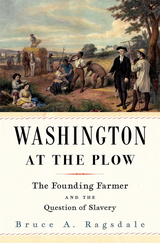 Washington at the Plow: The Founding Farmer and the Question of Slavery
Bruce A. Ragsdale
Harvard University Press, 2021 Winner of the George Washington Prize
A fresh, original look at George Washington as an innovative land manager whose singular passion for farming would unexpectedly lead him to reject slavery.
George Washington spent more of his working life farming than he did at war or in political office. For over forty years, he devoted himself to the improvement of agriculture, which he saw as the means by which the American people would attain the “respectability & importance which we ought to hold in the world.”
Washington at the Plow depicts the “first farmer of America” as a leading practitioner of the New Husbandry, a transatlantic movement that spearheaded advancements in crop rotation. A tireless experimentalist, Washington pulled up his tobacco and switched to wheat production, leading the way for the rest of the country. He filled his library with the latest agricultural treatises and pioneered land-management techniques that he hoped would guide small farmers, strengthen agrarian society, and ensure the prosperity of the nation.
Slavery was a key part of Washington’s pursuits. He saw enslaved field workers and artisans as means of agricultural development and tried repeatedly to adapt slave labor to new kinds of farming. To this end, he devised an original and exacting system of slave supervision. But Washington eventually found that forced labor could not achieve the productivity he desired. His inability to reconcile ideals of scientific farming and rural order with race-based slavery led him to reconsider the traditional foundations of the Virginia plantation. As Bruce Ragsdale shows, it was the inefficacy of chattel slavery, as much as moral revulsion at the practice, that informed Washington’s famous decision to free his slaves after his death.
 The Washington Dissensus: A Privileged Observer's Perspective on US-Brazil Relations
Rubens Barbosa
Vanderbilt University Press, 2014 During the five years that he represented Brazil in the United States (under both the Cardoso and Lula presidencies), Ambassador Barbosa witnessed presidential elections that brought opposition parties to power in both the United States and Brazil, the 9/11 terrorist attacks, the outbreak of war in Afghanistan and Iraq, and the election of Luiz Inacio Lula da Silva.
In this memoir, translated from the Portuguese, Barbosa recounts the most significant regional and global issues that arose, alongside the domestic political conflicts within a divided North American society. Barbosa provides sophisticated analysis of economic relations during these changing times, and also explores the many US misconceptions about Brazil and the Latin American region.
From the privileged post of observation that an ambassadorship in the American capital represents, Barbosa had the exceptional opportunity over a considerable length of time to closely follow relations between Brazil and the United States. He witnessed relations evolve under two governments as they developed distinct foreign policies, which at times led to a breakdown in understanding between the two countries.
 Washington from the Ground Up
James H. S. McGregor
Harvard University Press, 2007 At the confluence of the Potomac and Anacostia rivers, President Washington chose a diamond-shaped site for the city that would bear his name, along with the burdens and blessings of democracy. Situated midway between North and South, the capital was also a gateway to the West--a contested wilderness where rough frontiersmen were already carving a divided nation.
With Indians on their borders and black slaves in their midst, the country's white founders struggled to embody, in bricks and stone, the paradoxical republic they had invented. Inspired by Greek and Roman models, city planners and designers scoured the Western world--from Hadrian's Pantheon to Palladio's Vicenza to the French Royal Academy--for an architectural language to capture the elusive principles of liberty, equality, and union.
Washington from the Ground Up tells the story of a nation whose Enlightenment ideals were tested in the fires of rebellion, removal, and resistance. It is also a tale of two cities: official Washington, whose stately neoclassical buildings expressed the government's power and global reach; and DC, whose minority communities, especially African Americans, lived in the shadows of poverty. Moving chronologically and geographically throughout the District, James McGregor reads this complex history from monuments and museums, libraries and churches, squares and neighborhoods that can still be seen today. His lucid narrative, accompanied by detailed maps and copious illustrations, doubles as a visitor's guide to this uniquely American city.
 Washington Gladden: Prophet of the Social Gospel
Jacob H. Dorn
Ohio State University Press, 1966 It has long been recognized that the much loved and widely revered Congregational minister, the Reverend Washington Gladden, pursued a career that embodied the salient features of what was probably the most dynamic period in the history of religion in America. For Gladden was one of the principal actors in those episodes that constitute the often violent but always exhilarating transition from orthodoxy to a more flexible faith based on principles of social justice and service to mankind that took place between the Civil War and World War I.
Gladden was one of the first among clergymen to respond to the intellectual and social currents that arose to challenge traditional modes of Protestant thought and social action. By the end of the nineteenth century, when both liberal theology and the Social Gospel had, in a sense, triumphed as the dominant forces in American Protestantism, he had achieved recognition as one of the earliest, most constant, and most influential exponents of both movements. He was, in addition, one of their chief popularizers; and his copious writings—some forty books and hundreds of articles—represent classic examples of the liberal, socially-conscious Protestantism that distinguished his age.
Mr. Dorn has provided the first comprehensive study of Gladden’s spectacular career. He traces his life and its influences from his birth in Pennsylvania to his long and successful pastorate at the First Congregational Church in Columbus, Ohio, where he gained national fame in stormy encounters with such prominent figures as the redoubtable Billy Sunday and his wife “Ma,” and for his lucid and vigorous positions on national issues such as the “tainted money” controversy that brought him into conflict with Standard Oil.
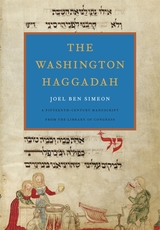 The Washington Haggadah
by Joel ben Simeon Translated by David SternIntroduction by David SternIntroduction by Katrin Kogman-Appel
Harvard University Press, 2011 After the Bible, the Passover haggadah is the most widely read classic text in the Jewish tradition. More than four thousand editions have been published since the late fifteenth century, but few are as exquisite as the Washington Haggadah, which resides in the Library of Congress. Now, a stunning facsimile edition meticulously reproduced in full color brings this beautiful illuminated manuscript to a new generation.
Joel ben Simeon, the creator of this unusually well-preserved codex, was among the most gifted and prolific scribe-artists in the history of the Jewish book. David Stern’s introduction reconstructs his professional biography and situates this masterwork within the historical development of the haggadah, tracing the different forms the text took in the Jewish centers of Europe at the dawn of modernity.
Katrin Kogman-Appel shows how ben Simeon, more than just a copyist, was an active agent of cultural exchange. As he traveled between Jewish communities, he brought elements of Ashkenazi haggadah illustration to Italy and returned with stylistic devices acquired during his journeys. In addition to traditional Passover images, realistic illustrations of day-to-day life provide a rare window into the world of late fifteenth-century Europe.
This edition faithfully preserves the original text, with the Hebrew facsimile appearing in the original right-to-left orientation. It will be read and treasured by anyone interested in Jewish history, medieval illuminated manuscripts, and the history of the haggadah.
Washington Irving and the Storrows: Letters from England and the Continent, 1821-1828
Washington Irving
Harvard University Press In the decade prior to Washington Irving’s return to America in 1832 to receive his public welcome as his country’s first man of letters, he travelled widely in England, France, Germany, Austria, and Spain. During these wanderings he regarded the Paris fireside of the Storrow family, next to his sister’s house in Birmingham, as his European home. To the Storrow children he wrote of the legends of Germany; to Mrs Storrow, of his travels; to Thomas Wentworth Storrow, his capable and cultivated friend, of his disappointments and of his literary projects, notably The Life and Voyages of Christopher Columbus. This group of personal letters, no one of which has previously been published, gives a singularly illuminating record of Irving's discouragements as he attempted to sustain his fame as the author of The Sketch Book.
 Washington Irving’s Contributions to the Corrector
Martin Roth, EditorIntroduction by Martin Roth
University of Minnesota Press, 1968
Washington Irving's Contributions to the Corrector was first published in 1968. Minnesota Archive Editions uses digital technology to make long-unavailable books once again accessible, and are published unaltered from the original University of Minnesota Press editions.
This volume makes available, for the first time in collected form, a series of sketches by Washington Irving which were published anonymously in a political newspaper, The Corrector, in 1804. The Corrector, a short-lived political sheet, was published in New York City by Washington Irving's brother Peter Irving. While it has been assumed that Washington Irving contributed to the periodical, the present collection represents the first attempt to identify his contributions.
The collection contains forty-five pieces by Washington Irving. In addition, Professor Roth provides a literary and historical background in a lengthy introduction, as well as annotations for each selection, giving the documentary evidence on which the attribution of authorship is based.
Washington Irving's sketches for The Corrector were written as campaign literature for Aaron Burr in the New York gubernatorial election of 1804. As Professor Roth points out, they are filled with low and indecent abuse, and they contradict accepted notions of Irving's literary character. The view of Irving from the nineteenth century onward has been that of a gentle, genial, and dignified personality, and his excursions in low invective or slapstick have generally been dismissed as accidents or exceptions to his read nature. The editor places this body of Irving's work in the perspective of traditional invective and traces its relationship to other comic and satiric writing of the eighteenth century.
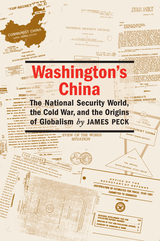 Washington's China: The National Security World, the Cold War, and the Origins of Globalism
James L. Peck
University of Massachusetts Press, 2006 This book addresses a central question about the Cold War that has never been adequately resolved. Why did the United States go to such lengths not merely to "contain" the People's Republic of China but to isolate it from all diplomatic, cultural, and economic ties to other nations? Why, in other words, was American policy more hostile to China than to the Soviet Union, at least until President Nixon visited China in 1972?The answer, as set out here, lies in the fear of China's emergence as a power capable of challenging the new Asian order the United States sought to shape in the wake of World War II. To meet this threat, American policymakers fashioned an ideology that was not simply or exclusively anticommunist, but one that aimed at creating an integrated, cooperative world capitalism under U.S. leadership—an ideology, in short, designed to outlive the Cold War.In building his argument, James Peck draws on a wide variety of little-known documents from the archives of the National Security Council and the CIA. He shows how American ofï¬cials initially viewed China as a "puppet" of the Soviet Union, then as "independent junior partner" in a Sino-Soviet bloc, andï¬nally as "revolutionary model" and sponsor of social upheaval in the Third World. Each of these constructs revealed more about U.S. perceptions and strategic priorities than about actual shifts in Chinese thought and conduct. All were based on the assumption that China posed a direct threat not just to speciï¬c U.S. interests and objectives abroad but to the larger vision of a new global order dominated by American economic and military power. Although the nature of "Washington's China" may have changed over the years, Peck contends that the ideology behind it remains unchanged, even today.
 Washington's War 1779
Benjamin Lee Huggins
Westholme Publishing, 2018 While Attacking the Irish at Stony Point and Paulus Hook, George Washington Prepared a Bold Plan to End the War in New York City
Despite great limits of money and manpower, George Washington sought to wage an aggressive war in 1779. He launched the Sullivan–Clinton campaign against Britain’s Iroquois allies in upstate New York, and in response to British attacks up the Hudson River and against coastal Connecticut, he authorized raids on British outposts at Stony Point and Paulus Hook. But given power by Congress to plan and execute operations with the French on a continental scale, Washington planned his boldest campaign. When it appeared that the French would bring a fleet and an army to America, and supported by intelligence from his famed “Culper” spy network, the American commander proposed a joint Franco-American attack on the bastion of British power in North America—New York City—to capture its garrison. Such a blow, he hoped, would end the war in 1779.
Based on extensive primary source material, Washington’s War 1779, by historian Benjamin Lee Huggins, describes Washington’s highly detailed plans and extensive preparations for his potentially decisive Franco-American campaign to defeat the British at New York in the fall of 1779. With an emphasis on Washington's generalship in that year—from strategic and operational planning to logistics to diplomacy—and how it had evolved since the early years of the war, the book also details the other offensive operations in 1779, including the attacks in upstate New York, Stony Point, and Paulus Hook. Although the American and French defeat at Savannah, Georgia, prevented Washington from carrying out his New York offensive, Washington gained valuable experience in planning for joint operations that would help him win at Yorktown two years later.
 Washtenaw County Bike Rides: A Guide to Road Rides in and around Ann Arbor
Joel D. Howell
University of Michigan Press, 2009 Washtenaw County Bike Rides is ideal for people who are new to the county, are new to bike riding, or simply want to expand their repertoire of rides. All routes described in the book start or end in Washtenaw County and have been selected with a preference for rides outside of the city. All the routes are paved. Joel Howell details the roads, the areas that require caution, the difficulty of the rides, and routes that can be extended for longer rides. Includes routes and maps for Dixboro, Dexter-Chelsea, Gallup Park, Hell, Huron River Drive, Manchester, Waterloo, East Lansing, and more, as well as an overview map and ride log. Joel D. Howell is a physician, medical historian, and avid biker who has personally ridden all of the trails featured in the book. He lives in Ann Arbor. "Two of the strongest predictors of an active lifestyle are convenient access to exercise opportunities, and pleasant and beautiful exercise environments. Joel Howell's book has solved both of these factors with a collection of some of the most beautiful and accessible biking (and running!) routes in the upper Midwest."
---Thomas L. Schwenk, M.D., Chair of Family Medicine, University of Michigan "This book includes all the main biking routes making it a 'must have' for any cyclist new to the Ann Arbor area. There are also great tidbits of local lore and super photographs that make it a welcome addition to the libraries of cyclists who have ridden these roads countless times."
---Mark Lovejoy, President, Ann Arbor Velo Club "Howell has performed a genuine service for county residents and visitors. Get moving, Washtenaw!"
---Kenneth Warner, Dean, University of Michigan School of Public Health
Wasita in a Lebanese Context: Social Exchange among Villagers and Outsiders
Frederick Charles Huxley
University of Michigan Press, 1978 In the 1970s, Frederick Charles Huxley conducted fieldwork in the Lebanese village of Barouk to investigate the social process called wasita: a term that means, roughly, intermediary or mediation. He explains the geography and history of Lebanon as they relate to the country’s social diversity, and argues for further examination of wasita as a process that operates on and between levels of society in economic, political, and social contexts. Following a detailed description of his ethnographic research, he discusses the importance of a better understanding of wasita in the context of the Lebanese civil war.
Waste and Abundance: The Measure of Consumption: Special Issue of SubStance, Issue 116, 37:2 (2008)
Susan Cahill
University of Wisconsin Press, 2008 This collection of articles relates to a research area currently developing in the Humanities, which calls for philosophical and historical approaches to questions of sustainable development and waste management. The title of the issue reflects the central questions raised by all contributors: how are waste and abundance represented, how may we conceptualize these representations, and what ethical problems do they raise?
Particular attention is paid to the cultural and moral factors that condition our attitudes to waste and the ways in which literature addresses the problematic relationship that binds production, consumption and waste to social and political systems.
Waste and the Wasters: Poetry and Ecosystemic Thought in Medieval England
Eleanor Johnson
University of Chicago Press, 2023 A groundbreaking examination of ecological thought in medieval England.
While the scale of today’s crisis is unprecedented, environmental catastrophe is nothing new. Waste and the Wasters studies the late Middle Ages, when a convergence of land contraction, soil depletion, climate change, pollution, and plague subsumed Western Europe. In a culture lacking formal scientific methods, the task of explaining and coming to grips with what was happening fell to medieval poets. The poems they wrote used the terms “waste” or “wasters” to anchor trenchant critiques of people’s unsustainable relationships with the world around them and with each other. In this book, Eleanor Johnson shows how poetry helped medieval people understand and navigate the ecosystemic crises—both material and spiritual—of their time.
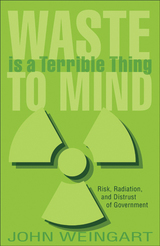 Waste is a Terrible Thing to Mind: Risk, Radiation, and Distrust of Government
Weingart, John
Rutgers University Press, 2007 It is an unenviable task, but one that all state governments face: finding a final “resting place” for low-level nuclear waste from power plants, hospitals, university laboratories, and other industries. John Weingart was the official in New Jersey who for many years led this onerous charge. This book is the story of how he and a commission appointed by the governor, instead of imposing a top-down solution, designed an approach that would confront public fears by seeking a community that would volunteer to host a disposal facility. Initially, this novel approach was surprisingly successful, as leaders in a dozen municipalities stepped forward to say they might be interested. Once their interest became known, however, the process in each town derailed. Residents demanded assurances of zero-percent risk and expressed profound distrust of government assertions and promises.
Waste Is a Terrible Thing to Mind is a compelling, suspenseful, and amusing insider’s account of New Jersey policy and politics, but it is also a larger saga of the challenges facing society in the post–9/11 era when the public’s distrust of government is increasing at the same time that its sensitivity to health and safety threats is heightened.
For more information, see: http://wasteisaterriblethingtomind.com/ "Written with a wry sense of humor, it is a pleasure to read and could provide the blueprint for future efforts to find locations for controversial land uses."
- Marie Curtis, Executive Director, New Jersey Environmental Lobby "A penetrating look at one state's struggle with radioactive waste ... offering some tantalizing reflections on the public understanding of science and how we, in a democratic society, deal with complexity and uncertainty."
- Jay Kaufman, State Senator, Massachusetts State Legislature "A provocative story, laced with humor, demonstrates how public distrust of government can make it impotent. It should be read by anyone working on public policy issues, especially planning, growth, and the environment."
- Harriet Keyserling, Former Energy Committee Chair, South Carolina State Legislature "Readers interested in environmental policy, land use and how governments make decisions will learn much from this fine reflective insider's account. It's also a primer on how to survive and thrive in state government."
- David N. Kinsey, Visiting Professor, Woodrow Wilson School Princeton University "... a fascinating case study of how a government agency creatively tried to solve an intractable public issue. Although the agency failed in its quest to recruit a town to host a low-level radioactive waste site, Weingart's detailed and often humorous narrative of the agency's efforts is a clear winner."
- Jack Sabatino, Judge, New Jersey Superior Court "... a very engaging and sometimes discouraging case study about the pitfalls and perils of trying to site a controversial facility the right way."
- Gregg Larson, Administrator, Center for Biometric Research, University of Minnesota
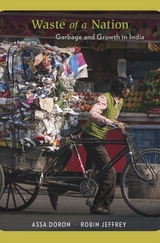 Waste of a Nation: Garbage and Growth in India
Assa Doron and Robin Jeffrey
Harvard University Press, 2018 In India, you can still find the kabaadiwala, the rag-and-bone man. He wanders from house to house buying old newspapers, broken utensils, plastic bottles—anything for which he can get a little cash. This custom persists and recreates itself alongside the new economies and ecologies of consumer capitalism. Waste of a Nation offers an anthropological and historical account of India’s complex relationship with garbage.
Countries around the world struggle to achieve sustainable futures. Assa Doron and Robin Jeffrey argue that in India the removal of waste and efforts to reuse it also lay waste to the lives of human beings. At the bottom of the pyramid, people who work with waste are injured and stigmatized as they deal with sewage, toxic chemicals, and rotting garbage.
Terrifying events, such as atmospheric pollution and childhood stunting, that touch even the wealthy and powerful may lead to substantial changes in practices and attitudes toward sanitation. And innovative technology along with more effective local government may bring about limited improvements. But if a clean new India is to emerge as a model for other parts of the world, a “binding morality” that reaches beyond the current environmental crisis will be required. Empathy for marginalized underclasses—Dalits, poor Muslims, landless migrants—who live, almost invisibly, amid waste produced predominantly for the comfort of the better-off will be the critical element in India’s relationship with waste. Solutions will arise at the intersection of the traditional and the cutting edge, policy and practice, science and spirituality.
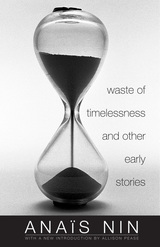 Waste of Timelessness and Other Early Stories
Anaïs Nin
Ohio University Press, 2017 Written when Anaïs Nin was in her twenties and living in France, the stories collected in Waste of Timelessness contain many elements familiar to those who know her later work as well as revelatory, early clues to themes developed in those more mature stories and novels. Seeded with details remembered from childhood and from life in Paris, the wistful tales portray artists, writers, strangers who meet in the night, and above all, women and their desires. These experimental and deeply introspective missives lay out a central theme of Nin’s writing: the contrast between the public and private self. The stories are taut with unrealized sexual tension and articulate the ways that language and art can shape reality. Nin’s deft humor, ironic wit, and ecstatic prose display not only superb craftsmanship but also the author’s own constant balancing act between feeling and rationality, vulnerability and strength. Perhaps more than any other writer of the twentieth century, she mastered that act and wrote about it on her own terms, defying the literary and social norms of the time.
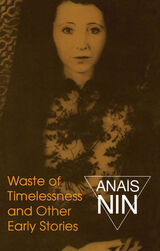 Waste of Timelessness and Other Early Stories: And Other Early Stories
Anaïs Nin
Ohio University Press, 1993
These stories precede all of Nin’s published work to date. In them are many sources of the more mature work that collectors and growing writers can appreciate.
Written when Anaïs Nin was in her twenties and living in Louveciennes, France, these stories contain many elements that will delight her readers: details remembered from childhood, of life in Paris, the cafés, theatres; characters including dancers, artists, writers, women who devote themselves to their work and visions as well as romance, strangers met in the night; themes such as the scruples of lovers, the search for brilliant, imaginative living; the writer’s experimentation with exotic words like “sybaritic” and “violaceous”. In the craft of these stories readers are treated to a deft sense of humor, ironic wit, much conversation as well as ecstatic prose, and surprise endings. Throughout all, the Nin personality shines, a wonderful mixture of feeling and rationality, of vulnerability and strength.
 Waste Works: Vital Politics in Urban Ghana
Brenda Chalfin
Duke University Press, 2023 In Waste Works, Brenda Chalfin examines Ghana’s planned city of Tema, theorizing about the formative role of waste infrastructure in urban politics and public life. Chalfin argues that at Tema’s midcentury founding, a prime objective of governing authorities was to cultivate self-contained citizens by means of tightly orchestrated domestic infrastructure and centralized control of bodily excrement to both develop and depoliticize the new nation. Comparing infrastructural innovations across the city, Chalfin excavates how Tema residents pursue novel approaches to urban waste and sanitation built on the ruins of the inherited order, profoundly altering the urban public sphere. Once decreed a private matter to be guaranteed by state authorities, excrement becomes a public issue, collectively managed by private persons. Pushing self-care into public space and extending domestic responsibility for public well-being and bodily outputs, popularly devised waste infrastructures are a decisive arena to make claims, build coalitions, and cultivate status. Confounding high-modernist ideals, excremental infrastructures unlock bodily waste’s diverse political potentials.
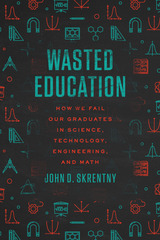 Wasted Education: How We Fail Our Graduates in Science, Technology, Engineering, and Math
John D. Skrentny
University of Chicago Press, 2023 An urgent reality check for America’s blinkered fixation on STEM education. We live in an era of STEM obsession. Not only do tech companies dominate American enterprise and economic growth while complaining of STEM shortages, but we also need scientific solutions to impending crises. As a society, we have poured enormous resources—including billions of dollars—into cultivating young minds for well-paid STEM careers. Yet despite it all, we are facing a worker exodus, with as many as 70% of STEM graduates opting out of STEM work. Sociologist John D. Skrentny investigates why, and the answer, he shows, is simple: the failure of STEM jobs. Wasted Education reveals how STEM work drives away bright graduates as a result of “burn and churn” management practices, lack of job security, constant training for a neverending stream of new—and often socially harmful—technologies, and the exclusion of women, people of color, and older workers. Wasted Education shows that if we have any hope of improving the return on our STEM education investments, we have to change the way we’re treating the workers on whom our future depends.
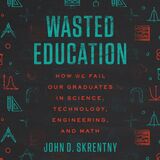 Wasted Education: How We Fail Our Graduates in Science, Technology, Engineering, and Math
John D. Skrentny
University of Chicago Press, 2023 This is an auto-narrated audiobook version of this book.
An urgent reality check for America’s blinkered fixation on STEM education. We live in an era of STEM obsession. Not only do tech companies dominate American enterprise and economic growth while complaining of STEM shortages, but we also need scientific solutions to impending crises. As a society, we have poured enormous resources—including billions of dollars—into cultivating young minds for well-paid STEM careers. Yet despite it all, we are facing a worker exodus, with as many as 70% of STEM graduates opting out of STEM work. Sociologist John D. Skrentny investigates why, and the answer, he shows, is simple: the failure of STEM jobs. Wasted Education reveals how STEM work drives away bright graduates as a result of “burn and churn” management practices, lack of job security, constant training for a neverending stream of new—and often socially harmful—technologies, and the exclusion of women, people of color, and older workers. Wasted Education shows that if we have any hope of improving the return on our STEM education investments, we have to change the way we’re treating the workers on whom our future depends.
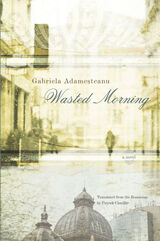 Wasted Morning: A Novel
Gabriela Adamesteanu
Northwestern University Press, 2011 Upon its original publication in 1983, Wasted Morning catapulted Gabriela Adamesteanu to the first rank of Romanian novelists. She has since been translated into many languages, and now her most famous novel is available in English for the first time. At the center of Wasted Morning is Vica Delca, a simple, poor woman in her seventies who has endured the endless series of trials and tribulations that was Romanian history from WWI to the end of the twentieth century.
She's a born storyteller, chatting and gossiping tirelessly. But she also listens, so it is through her that Adamesteanu is able to show us a panoramic portrait of Romanian society as the fortunes of its various strata shift violently. Rich or poor, honest (more or less) or deceitful, all of the characters in this polyphonic novel are brought vividly to life. From Bucharest's aspirations to be the Paris of Eastern Europe to the darkest days of dictatorship, the novel presents a sweeping vision of the personal and collective costs of a turbulent century.
 Wasted Wombs: Navigating Reproductive Interruptions in Cameroon
Erica van der Sijpt
Vanderbilt University Press, 2017 Central to this book are Gbigbil women's experiences with different "reproductive interruptions": miscarriages, stillbirths, child deaths, induced abortions, and infertility. Rather than consider these events as inherently dissimilar as women do in Western countries, the Gbigbil women of eastern Cameroon see them all as instances of "wasted wombs" that leave their reproductive trajectories hanging in the balance. The women must navigate this uncertainty while negotiating their social positions, aspirations for the future, and the current workings of their bodies.
Providing an intimate look into these processes, Wasted Wombs shows how Gbigbil women constantly shift their interpretations of when a pregnancy starts, what it contains, and what is lost in case of a reproductive interruption, in contrast to Western conceptions of fertility and loss. Depending on the context and on their life aspirations—be it marriage and motherhood, or an educational trajectory and employment, or profitable sexual affairs with so-called "big fish"—women negotiate and manipulate the meanings and effects of reproductive interruptions. Paradoxically, they often do so while portraying themselves as powerless. Wasted Wombs carefully analyzes such tactics in relation to the various social predicaments that emerge around reproductive interruptions, as well as the capricious workings of women's physical bodies.
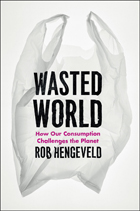 Wasted World: How Our Consumption Challenges the Planet
Rob Hengeveld
University of Chicago Press, 2012 All systems produce waste as part of a cycle—bacteria, humans, combustion engines, even one as large and complex as a city. To some extent, this waste can be absorbed, processed, or recycled—though never completely. In Wasted World, Rob Hengeveld reveals how a long history of human consumption has left our world drowning in this waste. This is a compelling and urgent work that traces the related histories of population growth and resource consumption. As Hengeveld explains, human life (and population growth) depends not only on mineral resources but also on energy. People first obtained energy from food and later supplemented this with energy from water, wind, and animals as one source after another fell short of our ever-growing needs. Finally, we turned to fossil energy, which generates atmospheric waste that is the key driver of global climate change. The effects of this climate change are already leading to food shortages and social collapse in some parts of the world. Because all of these problems are interconnected, Hengeveld argues strenuously that measures to counter individual problems cannot work. Instead, we need to tackle their common cause—our staggering population growth. While many scientists agree that population growth is one of the most critical issues pressuring the environment, Hengeveld is unique in his insistence on turning our attention to the waste such growth leaves in its wake and to the increasing demands of our global society. A practical look at the sustainability of our planet from the perspective of a biologist whose expertise is in the abundances and distributions of species, Wasted World presents a fascinating picture of the whole process of using, wasting, and exhausting energy and material resources. And by elucidating the complexity of the causes of our current global state, Hengeveld offers us a way forward.
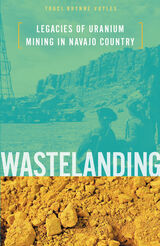 Wastelanding: Legacies of Uranium Mining in Navajo Country
Traci Brynne Voyles
University of Minnesota Press, 2015 Wastelanding tells the history of the uranium industry on Navajo land in the U.S. Southwest, asking why certain landscapes and the peoples who inhabit them come to be targeted for disproportionate exposure to environmental harm. Uranium mines and mills on the Navajo Nation land have long supplied U.S. nuclear weapons and energy programs. By 1942, mines on the reservation were the main source of uranium for the top-secret Manhattan Project. Today, the Navajo Nation is home to more than a thousand abandoned uranium sites. Radiation-related diseases are endemic, claiming the health and lives of former miners and nonminers alike. Traci Brynne Voyles argues that the presence of uranium mining on Diné (Navajo) land constitutes a clear case of environmental racism. Looking at discursive constructions of landscapes, she explores how environmental racism develops over time. For Voyles, the “wasteland,” where toxic materials are excavated, exploited, and dumped, is both a racial and a spatial signifier that renders an environment and the bodies that inhabit it pollutable. Because environmental inequality is inherent in the way industrialism operates, the wasteland is the “other” through which modern industrialism is established. In examining the history of wastelanding in Navajo country, Voyles provides “an environmental justice history” of uranium mining, revealing how just as “civilization” has been defined on and through “savagery,” environmental privilege is produced by portraying other landscapes as marginal, worthless, and pollutable.
Wastiary: A Bestiary of Waste
Edited by Michael Picard, Albert Brenchat-Aguilar, Timothy Carroll, Jane Gilbert, and Nicola Miller
University College London, 2023 A heterodox compendium of “beasts of waste,” playfully re-imagining the medieval treatise on various kinds of animals.
Wastiary: A Bestiary of Waste is a creative exercise that occupies letters, numbers, and symbols of Western academic language to compose a list of thirty-five short entries on the uncomfortable but pressing topic of waste in the contemporary world. The collection is richly illustrated with artwork, photography, collage, and mixed media and conveys the message that various forms of waste and pollution have achieved a beast-like or untamable quality, at times pungently transferring to considerations of “the human,” or humans treated as waste.
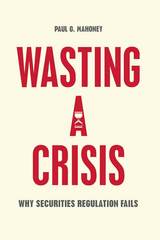 Wasting a Crisis: Why Securities Regulation Fails
Paul G. Mahoney
University of Chicago Press, 2015 The recent financial crisis led to sweeping reforms that inspired countless references to the financial reforms of the New Deal. Comparable to the reforms of the New Deal in both scope and scale, the 2,300-page Dodd-Frank Act of 2010—the main regulatory reform package introduced in the United States—also shared with New Deal reforms the assumption that the underlying cause of the crisis was misbehavior by securities market participants, exacerbated by lax regulatory oversight.
With Wasting a Crisis, Paul G. Mahoney offers persuasive research to show that this now almost universally accepted narrative of market failure—broadly similar across financial crises—is formulated by political actors hoping to deflect blame from prior policy errors. Drawing on a cache of data, from congressional investigations, litigation, regulatory reports, and filings to stock quotes from the 1920s and ’30s, Mahoney moves beyond the received wisdom about the financial reforms of the New Deal, showing that lax regulation was not a substantial cause of the financial problems of the Great Depression. As new regulations were formed around this narrative of market failure, not only were the majority largely ineffective, they were also often counterproductive, consolidating market share in the hands of leading financial firms. An overview of twenty-first-century securities reforms from the same analytic perspective, including Dodd-Frank and the Sarbanes-Oxley Act of 2002, shows a similar pattern and suggests that they too may offer little benefit to investors and some measurable harm.
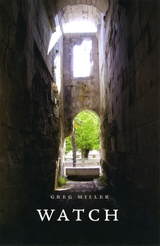 Watch
Greg Miller
University of Chicago Press, 2009 Strasbourg The yellow and green rose, and the pink rock, The chestnuts blooming, the cobblestone square, Our Lady’s tower rising everywhere, Dark timbered fronts; the mechanical clock Whose rooster crows three times for Peter’s flock, The Apostles, the old man’s and the child’s share Of time—aspire I’d say to make me stare And stop. I praise what I might otherwise mock, The locked contingencies, the stock of losses, Bright liquidity everywhere channeled, A storied cityscape of destinies Averted as when, turning, a young Turk tosses His hands in the air and my chest’s pummeled, “My brother, forgive me!” and my thoughts freeze. In Watch, Greg Miller describes a fresh purposefulness in his life and achieves a new level of poetic thinking and composition in his writing. Artfully combining the religious and secular worldviews in his own sense of human culture, Miller complicates our understanding of all three. The poems in Watch sift layers of natural and human history across several continents, observing paintings, archeological digs, cityscapes, seascapes, landscapes—all in an attempt to envision a clear, grounded spiritual life. Employing an impressive array of traditional meters and various kinds of free verse, Miller’s poems celebrate communities both invented and real. Praise for Iron Wheel “Miller demonstrates that what Eliot said about reading a poem may be equally true of writing them: the best thing ‘is to be very, very intelligent’ and intelligence is not the same as erudition. Whether the world is made, found, or named, Miller offers an engaging portrait of things as they are.’’—David Orr, Poetry
Watch and Learn: Rhetorical Devices in Classroom Films after 1940
Eef Masson
Amsterdam University Press, 2012 Instructional films of the twentieth century, used to teach, train, inform, or advertise to their viewers, can provide historians and scholars of cinema studies with a wealth of information about both their creators and intended consumers. Watch and Learn focuses on the rhetoric used in these films, particularly the way in which the films used in the classroom relate to their audience, casting them both as film viewers and students. Providing the outline for a new methodology for interpreting and understanding the scripts and visuals of this peculiar brand of cinema, this book approaches the study of instructional films from a novel and illuminating perspective.
 A Watch of Nightingales
Liza Wieland
University of Michigan Press, 2010 A modest, quiet woman, Mara Raynor never dreamed she'd one day find herself in charge of the small private school in Washington, D.C., where for many years she taught music and choir. But after the unexpected death of her husband, the school's headmaster, Mara finds herself thrust into the public eye, burdened not just with the responsibilities of acting headmaster---a role she never wanted---but also with a potentially explosive political and religious controversy that tests parents' and school administrators' spirit of tolerance. When a Sikh student is caught wearing a ceremonial knife on school grounds, fear spreads among parents and the school board. Coming at the same moment as the disappearance of Mara's teenage daughter, the controversy quickly assumes a far more personal nature. Not just any student, the Sikh boy is both the son of a woman with whom Mara shares a complicated past and---as Mara soon discovers---her own daughter's boyfriend. As it moves back and forth in time between the school in contemporary Washington and a girls' boarding school in the British countryside in 1977, A Watch of Nightingales weaves a rich and textured exploration of fear and remorse, the mysteries of love, and the complicated tensions that ring down the generations from parent to child.
 Watch this Space: Exploring Cinematic Intersections Between the Body, Architecture and the City
Edited by Howard Griffin and Maciej Stasiowski
Intellect Books, 2024 A collection that explores evolving interdisciplinary rhetoric across spatial design disciplines.
Watch this Space examines key emerging and evolving practices, theories, and methodologies that operate in the blurred boundary between spatial design disciplines and moving image studies more broadly. The collection is premised on the argument that the understanding of “space” in these areas continues to expand, reaching the point in which it blurs with multiple other disciplines including media art, cultural studies, art practice, and more. The result of this evolving interdisciplinary understating of space in design disciplines and moving image studies is an expanded field of haptic-visual practice and theory that can be investigated as both a material and an image-based construct.
The work engages with an evolving set of ideas, underlining how each of its primary discipline areas now increasingly incorporates tools and methodologies from each other’s fields. For example, architects routinely engage with cinematic practice as a means of exploring space; cultural theorists inspect filmic space as a two-dimensional surrogate of the real; media artists incorporate knowledge of spatial design in video installations; and filmmakers create spaces on screen that are informed by architectural theory. This all follows what can be defined as a discursive turn in our view of spatial relationships across disciplines which, by definition, is complex, eclectic, occasionally contradictory, and at times characterized by surprising confluences.
The varied essays collected here explore the diversity of how we today define, understand, and engage with notions of the body in architectural–urban space. It does so through a triadic structure that progresses from haptic relationships of the body in architectural space, through film readings of represented space in mainstream cinema, to experimental spatial projects inspired by film and the moving image. This tripartite structure specifically encourages a look across disciplines, broadening architectural, urbanist, media, and cinematic concerns through insightful case studies.
Watch Your Language: Mother Tongue And Her Wayward Children
Robert Gorrell
University of Nevada Press, 1994 In this lively, playful celebration of the joys and power of language, Gorrell points to all the signs that show English to be alive and well, and, like any other living thing, constantly evolving. Watch Your Language! covers a wide array of topics of interest to all aficionados of English, from political doublespeak to spelling, from etymology to puns and wordgames. Throughout, Gorrell invites readers to share his love for words.
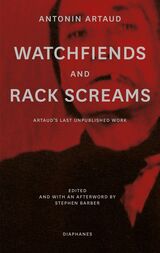 Watchfiends and Rack Screams: Artaud’s Last Unpublished Work
Antonin Artaud
Diaphanes, 2024 Antonin Artaud’s last large-scale work, published in its complete form in English for the first time.
Drawings on texts and letters dating from 1946, some of them written while he was still confined at the Rodez psychiatric hospital, Artaud devoted the months of November 1946 to February 1947 to completing his book through a long series of vocal improvisations titled Interjections, dictated at his pavilion on the edge of Paris. He cursed the assassins he believed were on their way there to steal his semen, to make his brain go “up in smoke as under the action of one of those machines created to suck up filth from the floor,” and finally to erase him. The publisher who had commissioned the book, Louis Broder, was horrified at reading its incandescent, fiercely obscene, and anti-religious manuscript and refused to publish it. Ambitious and experimental in scale, fragmentary and ferocious in intent, it was not published until 1978, in an edition prepared by Artaud’s close friend Paule Thévenin. Artaud commented that it was an “impossible” book, and that “nobody has ever read it from end to end, not even its own author.”
Clayton Eshleman, together with his translation collaborators such as David Rattray, began to work soon after 1978 on an English-language edition, with extracts appearing especially in Eshleman’s poetry magazine, Sulfur. This volume presents his translations with additional ones by Paul Buck, and Catherine Petit it in its complete form in English for the first time.
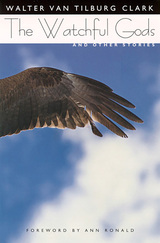 The Watchful Gods And Other Stories
Walter Van Tilburg Clark
University of Nevada Press, 2004 This edition of Walter Van Tilburg Clark’s collection of short stories—which includes “Hook,” Clark’s most renowned story—makes these pieces available again to a new generation of readers. Critic John R. Milton once said that Walter Van Tilburg Clark "did perhaps more than anyone else to define (in his fiction) the mode of perception, the acquisition of knowledge, and the style which we tend to call Western." In 1950, Walter Van Tilburg Clark, author of the acclaimed novel The Ox-Bow Incident, published a collection of short stories that had already won distinction in various national magazines. The collection was well received by reviewers, and subsequent critics have noted that these stories reflect both Clark’s literary power and the major concerns of his novels: the interior and intuitive complexities of good and evil, and the fragile, intricate web that connects humankind to the rest of the natural world. A foreword by Ann Ronald, one of the West’s most astute literary critics, sets the stories into the context of Clark’s oeuvre and illuminates the way they reveal crucial characteristics of this writer’s imagination.
 Watching Films: New Perspectives on Movie-Going, Exhibition and Reception
Edited by Albert Moran and Karina Aveyard
Intellect Books, 2013 Whether we stream them on our laptops, enjoy them in theaters, or slide them into DVD players to watch on our TVs, movies are part of what it means to be socially connected in the twenty-first century. Despite its significant role in our lives, the act of watching films remains an area of social activity that is little studied, and thus, little understood. In Watching Films, an international cast of contributors correct this problem with a comprehensive investigation of movie going, cinema exhibition, and film reception around the world. With a focus on the social, economic, and cultural factors that influence how we watch and think about movies, this volume centers its investigations on four areas of inquiry: Who watches films? Under what circumstances? What consequences and affects follow? And what do these acts of consumption mean? Responding to these questions, the contributors provide both historical perspective and fresh insights about the ways in which new viewing arrangements and technologies influence how films get watched everywhere from Canada to China to Ireland. A long-overdue consideration of an important topic, Watching Films provides an engrossing overview of how we do just that in our homes and across the globe.
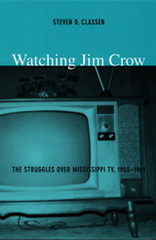 Watching Jim Crow: The Struggles over Mississippi TV, 1955–1969
Steven D. Classen
Duke University Press, 2004 In the early 1960s, whenever the Today Show discussed integration, wlbt-tv, the nbc affiliate in Jackson, Mississippi, cut away to local news after announcing that the Today Show content was “network news . . . represent[ing] the views of the northern press.” This was only one part of a larger effort by wlbt and other local stations to keep African Americans and integrationists off Jackson’s television screens. Watching Jim Crow presents the vivid story of the successful struggles of African Americans to achieve representation in the tv programming of Jackson, a city many considered one of the strongest bastions of Jim Crow segregation. Steven D. Classen provides a detailed social history of media activism and communications policy during the civil rights era. He focuses on the years between 1955—when Medgar Evers and the naacp began urging the two local stations, wlbt and wjtv, to stop censoring African Americans and discussions of integration—and 1969, when the U.S. Court of Appeals issued a landmark decision denying wlbt renewal of its operating license. During the 1990s, Classen conducted extensive interviews with more than two dozen African Americans living in Jackson, several of whom, decades earlier, had fought to integrate television programming. He draws on these interviews not only to illuminate their perceptions—of the civil rights movement, what they accomplished, and the present as compared with the past—but also to reveal the inadequate representation of their viewpoints in the legal proceedings surrounding wlbt’s licensing. The story told in Watching Jim Crow has significant implications today, not least because the Telecommunications Act of 1996 effectively undid many of the hard-won reforms achieved by activists—including those whose stories Classen relates here.
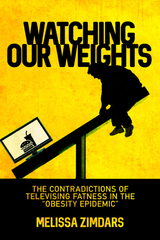 Watching Our Weights: The Contradictions of Televising Fatness in the “Obesity Epidemic”
Zimdars, Melissa
Rutgers University Press, 2019 Winner of the 2020 Gourmand Awards, Food Writing Section, USA
Watching Our Weights explores the competing and contradictory fat representations on television that are related to weight-loss and health, medicalization and disease, and body positivity and fat acceptance. While television—especially reality television—is typically understood to promote individual self-discipline and expert interventions as necessary for transforming fat bodies into thin bodies, fat representations and narratives on television also create space for alternative as well as resistant discourses of the body. Melissa Zimdars thus examines the resistance inherent within TV representations and narratives of fatness as a global health issue, the inherent and overt resistance found across stories of medicalized fatness, and programs that actively avoid dieting narratives in favor of less oppressive ways of thinking about the fat body. Watching Our Weights weaves together analyses of media industry lore and decisions, communication and health policies, medical research, activist projects, popular culture, and media texts to establish both how television shapes our knowledge of fatness and how fatness helps us better understand contemporary television.
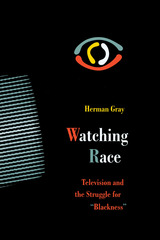 Watching Race: Television and the Struggle for Blackness
Herman Gray
University of Minnesota Press, 1997 A classic examination of the cultural relationship between television and race--with a new introduction!
In the late 1980s and early 1990s television representations of African Americans exploded on the small screen. Starting with the portrayal of blacks on series such as The Jack Benny Show and Amos 'n' Andy and continuing through The Cosby Show and In Living Color, Gray shows how the meaning of blackness on screen has changed through the years.
"Finally, a book that moves out of the prison house of stereotypes, beyond the common yet simplistic dichotomies of ‘positive' versus ‘negative' images. Herman Gray brilliantly and persuasively turns our attention to the more complicated issue of the politics of representation." --Robin D. G. Kelley, New York University
"This is a complex, subtle, and very important book. Gray argues that television is the site where key racial moments (Rodney King, Hill-Thomas hearings, Simpson trial, Los Angeles riots) have been staged and interpreted for the American public." --Contemporary Sociology
"Herman Gray's absorbing book offers incisive analysis of the important, often fierce battles being waged in the black-and-white representational landscape of commercial television." --Patricia Williams, author of The Alchemy of Race and Rights
Herman Gray is professor of sociology at the University of California, Santa Cruz. He is also the author of Producing Jazz and has appeared in the documentaries Color Adjustment and Signal to Noise.
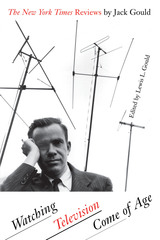 Watching Television Come of Age: The New York Times Reviews by Jack Gould
Edited by Lewis L. Gould
University of Texas Press, 2002 Providing video companionship for isolated housewives, afternoon babysitting for children, and nonstop evening entertainment for the whole family, television revolutionized American society in the post-World War II years. Helping the first TV generation make sense of the new medium was the mission of Jack Gould, television critic of The New York Times from 1947 to 1972. In columns noteworthy for crisp writing, pointed insights, and fair judgment, he highlighted both the untapped possibilities and the imminent perils of television, becoming "the conscience of the industry" for many people. In this book, historian Lewis L. Gould, Jack Gould's son, collects over seventy of his father's best columns. Grouped topically, they cover a wide range of issues, including the Golden Age of television drama, McCarthy-era blacklisting, the rise and fall of Edward R. Murrow, quiz show scandals, children's programming, and the impact of television on American life and of television criticism on the medium itself. Lewis Gould also supplies a brief biography of his father that assesses his influence on the evolution of television, as well as prefaces to each section.
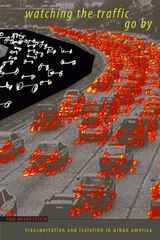 Watching the Traffic Go By: Transportation and Isolation in Urban America
By Paul Mason Fotsch
University of Texas Press, 2007 2007 — Jane Jacobs Urban Communication Publication Award – Urban Communication Foundation As twentieth-century city planners invested in new transportation systems to deal with urban growth, they ensured that the automobile rather than mass transit would dominate transportation. Combining an exploration of planning documents, sociological studies, and popular culture, Paul Fotsch shows how our urban infrastructure developed and how it has shaped American culture ever since. Watching the Traffic Go By emphasizes the narratives underlying our perceptions of innovations in transportation by looking at the stories we have built around these innovations. Fotsch finds such stories in the General Motors "Futurama" exhibit at the 1939 World's Fair, debates in Munsey's magazine, films such as Double Indemnity, and even in footage of the O. J. Simpson chase along Los Angeles freeways. Juxtaposed with contemporaneous critiques by Lewis Mumford, Theodor Adorno, and Max Horkheimer, Fotsch argues that these narratives celebrated new technologies that fostered stability for business and the white middle class. At the same time, transportation became another system of excluding women and the poor, especially African Americans, by isolating them in homes and urban ghettos. A timely, interdisciplinary analysis, Watching the Traffic Go By exposes the ugly side of transportation politics through the seldom-used lens of popular culture.
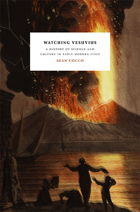 Watching Vesuvius: A History of Science and Culture in Early Modern Italy
Sean Cocco
University of Chicago Press, 2012 Mount Vesuvius has been famous ever since its eruption in 79 CE, when it destroyed and buried the Roman cities of Pompeii and Herculaneum. But less well-known is the role it played in the science and culture of early modern Italy, as Sean Cocco reveals in this ambitious and wide-ranging study. Humanists began to make pilgrimages to Vesuvius during the early Renaissance to experience its beauty and study its history, but a new tradition of observation emerged in 1631 with the first great eruption of the modern period. Seeking to understand the volcano’s place in the larger system of nature, Neapolitans flocked to Vesuvius to examine volcanic phenomena and to collect floral and mineral specimens from the mountainside. In Watching Vesuvius, Cocco argues that this investigation and engagement with Vesuvius was paramount to the development of modern volcanology. He then situates the native experience of Vesuvius in a larger intellectual, cultural, and political context and explains how later eighteenth-century representations of Naples—of its climate and character—grew out of this tradition of natural history. Painting a rich and detailed portrait of Vesuvius and those living in its shadow, Cocco returns the historic volcano to its place in a broader European culture of science, travel, and appreciation of the natural world.
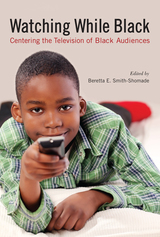 Watching While Black: Centering the Television of Black Audiences
Smith-Shomade, Beretta E
Rutgers University Press, 2013
2013 Choice Outstanding Academic Title
Television scholarship has substantially ignored programming aimed at Black audiences despite a few sweeping histories and critiques. In this volume, the first of its kind, contributors examine the televisual diversity, complexity, and cultural imperatives manifest in programming directed at a Black and marginalized audience.
Watching While Black considers its subject from an entirely new angle in an attempt to understand the lives, motivations, distinctions, kindred lines, and individuality of various Black groups and suggest what television might be like if such diversity permeated beyond specialized enclaves. It looks at the macro structures of ownership, producing, casting, and advertising that all inform production, and then delves into television programming crafted to appeal to black audiences—historic and contemporary, domestic and worldwide.
Chapters rethink such historically significant programs as Roots and Black Journal, such seemingly innocuous programs as Fat Albert and bro’Town, and such contemporary and culturally complicated programs as Noah’s Arc, Treme, and The Boondocks. The book makes a case for the centrality of these programs while always recognizing the racial dynamics that continue to shape Black representation on the small screen. Painting a decidedly introspective portrait across forty years of Black television, Watching While Black sheds much-needed light on under-examined demographics, broadens common audience considerations, and gives deference to the the preferences of audiences and producers of Black-targeted programming.
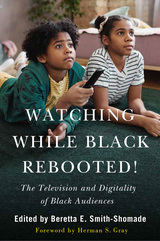 Watching While Black Rebooted!: The Television and Digitality of Black Audiences
Beretta E. Smith-Shomade
Rutgers University Press, 2024 Watching While Black Rebooted: The Television and Digitality of Black Audiences examines what watching while Black means in an expanded U.S. televisual landscape. In this updated edition, media scholars return to television and digital spaces to think anew about what engages and captures Black audiences and users and why it matters. Contributors traverse programs and platforms to wrestle with a changing television industry that has exploded and included Black audiences as a new and central target of its visioning. The book illuminates history, care, monetization, and affect. Within these frames, the chapters run the gamut from transmediation, regional relevance, and superhuman visioning to historical traumas and progress, queer possibilities, and how televisual programming can make viewers feel Black. Mostly, the work tackles what the future looks like now for a changing televisual industry, Black media makers, and Black audiences.
Chapters rethink such historically significant programs as Roots and Underground, such seemingly innocuous programs as Soul Food, and such contemporary and culturally complicated programs as Being Mary Jane and Atlanta. The book makes a case for the centrality of these programs while always recognizing the racial dynamics that continue to shape Black representation on the small screen. Painting a decidedly introspective portrait across forty years of Black television, Watching While Black Rebooted sheds much-needed light on under examined demographics, broadens common audience considerations, and gives deference to the preferences of audiences and producers of Black-targeted programming.
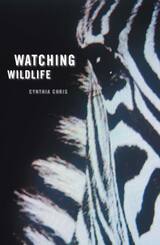 Watching Wildlife
Cynthia Chris
University of Minnesota Press, 2006 You and me baby ain't nothin' but mammalsSo let's do it like they do on the Discovery Channel.—Bloodhound GangIt has never been easier for Americans to observe wild and exotic animals from the comfort and safety of their couches. Several cable channels—Animal Planet, the Discovery Channel, the National Geographic Channel—provide around-the-clock wildlife programming while the traditional networks regularly broadcast animal documentaries, late-night appearances by zoologists and their animal charges, and sensationalistic specials about animals attacking hapless humans. Though the ubiquity of animals on television is new, the genre of the wildlife documentary is as old as cinema itself.In Watching Wildlife, Cynthia Chris traces the history of the wildlife genre from its origins in precinematic, colonial visual culture to its contemporary status as flagship programming on global television and explores evolving beliefs about, and attitudes toward, animal subjects. Nature programming and films are consistently presented as real and unmediated reflections of nature. But in Chris's analysis of specific shows (Mutual of Omaha's Wild Kingdom and cable television's Crocodile Hunter) and film and television history (the colonial cinema, the launch of Animal Planet), she points out how—particularly in the genre's preoccupation with mating and the favoritism bestowed on certain species—documentary images of animals are and always have been about prevailing ideologies about human gender, sexuality, and race.Ultimately, Chris's sweeping and cogent account of the wildlife documentary incorporates this frequently overlooked genre into broader debates about media globalization, human-animal relations, and popular scientific discourse.Cynthia Chris is assistant professor of media culture at the City University of New York's College of Staten Island.
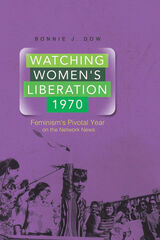 Watching Women's Liberation, 1970: Feminism's Pivotal Year on the Network News
Bonnie J. Dow
University of Illinois Press, 2014 In 1970, ABC, CBS, and NBC--the “Big Three” of the pre-cable television era--discovered the feminist movement. From the famed sit-in at Ladies’ Home Journal to multi-part feature stories on the movement's ideas and leaders, nightly news broadcasts covered feminism more than in any year before or since, bringing women's liberation into American homes.
In Watching Women's Liberation, 1970: Feminism's Pivotal Year on the Network News, Bonnie J. Dow uses case studies of key media events to delve into the ways national TV news mediated the emergence of feminism's second wave. First legitimized as a big story by print media, the feminist movement gained broadcast attention as the networks’ eagerness to get in on the action was accompanied by feminists’ efforts to use national media for their own purposes. Dow chronicles the conditions that precipitated feminism's new visibility and analyzes the verbal and visual strategies of broadcast news discourses that tried to make sense of the movement.
Groundbreaking and packed with detail, Watching Women's Liberation, 1970 shows how feminism went mainstream--and what it gained and lost on the way.
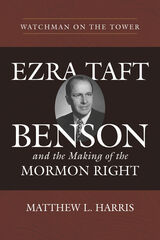 Watchman on the Tower: Ezra Taft Benson and the Making of the Mormon Right
Matthew L. Harris
University of Utah Press, 2020 Ezra Taft Benson is perhaps the most controversial apostle-president in the history of the Church of Jesus Christ of Latter-day Saints. For nearly fifty years he delivered impassioned sermons in Utah and elsewhere, mixing religion with ultraconservative right-wing political views and conspiracy theories. His teachings inspired Mormon extremists to stockpile weapons, predict the end of the world, and commit acts of violence against their government. The First Presidency rebuked him, his fellow apostles wanted him disciplined, and grassroots Mormons called for his removal from the Quorum of the Twelve. Yet Benson was beloved by millions of Latter-day Saints, who praised him for his stances against communism, socialism, and the welfare state, and admired his service as secretary of agriculture under President Dwight D. Eisenhower. Using previously restricted documents from archives across the United States, Matthew L. Harris breaks new ground as the first to evaluate why Benson embraced a radical form of conservatism, and how under his leadership Mormons became the most reliable supporters of the Republican Party of any religious group in America.
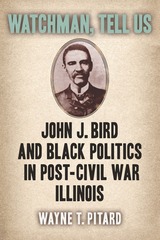 Watchman, Tell Us: John J. Bird and Black Politics in Post-Civil War Illinois
Wayne T. Pitard
Southern Illinois University Press, 2024 The most influential Black leader in 19th century southern Illinois
This key biography of John J. Bird unveils the forgotten story of a remarkable Black political figure in post-Civil War Illinois. Emerging as a leader in Cairo, the city with Illinois’ second-largest Black community, Bird played a pivotal role in advancing civil rights within the state, also becoming Illinois’ first Black elected judge and first Black trustee of the University of Illinois. Watchman, Tell Us deftly examines Bird’s lifetime of service and advocacy for a vulnerable community and the ways in which he successfully advocated for and protected voting rights, educational opportunity, and public access for the Black residents of southern Illinois.
Bird arrived in Cairo at age twenty during the Civil War to aid the 2,000 Black refugees from the South living there. By 1870, he had established the city’s substantial Black Republican wing, providing the Black community with unprecedented political influence in this hostile, majority white, Democratic town. Under Bird’s leadership, the Black Republicans pressed for policies that improved the well-being of the African American population, including the early establishment of a Black public school, the rise of an integrated judicial system, and the ability to access public and private businesses. Bird became influential across Illinois as a judge and university trustee, a leader in the Black convention movement, and a significant newspaper editor in Cairo and Springfield. When Bird died in 1912, the nation he loved had once again betrayed its Black citizens, and it appeared that most of the achievements he had fought for had collapsed. But the work of Bird and the other civil rights workers of the nineteenth century created the foundation upon which the movements of the twentieth century could stand.
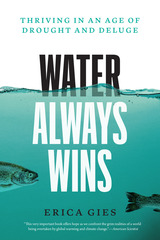 Water Always Wins: Thriving in an Age of Drought and Deluge
Erica Gies
University of Chicago Press, 2022 Winner of the Rachel Carson Award for Excellence in Environmental Journalism, Water Always Wins is a hopeful journey around the world and across time, illuminating better ways to live with water.
Nearly every human endeavor on the planet was conceived and constructed with a relatively stable climate in mind. But as new climate disasters remind us every day, our world is not stable—and it is changing in ways that expose the deep dysfunction of our relationship with water. Increasingly severe and frequent floods and droughts inevitably spur calls for higher levees, bigger drains, and longer aqueducts. But as we grapple with extreme weather, a hard truth is emerging: our development, including concrete infrastructure designed to control water, is actually exacerbating our problems. Because sooner or later, water always wins.
In this quietly radical book, science journalist Erica Gies introduces us to innovators in what she calls the Slow Water movement who start by asking a revolutionary question: What does water want? Using close observation, historical research, and cutting-edge science, these experts in hydrology, restoration ecology, engineering, and urban planning are already transforming our relationship with water.
Modern civilizations tend to speed water away, erasing its slow phases on the land. Gies reminds us that water’s true nature is to flex with the rhythms of the earth: the slow phases absorb floods, store water for droughts, and feed natural systems. Figuring out what water wants—and accommodating its desires within our human landscapes—is now a crucial survival strategy. By putting these new approaches to the test, innovators in the Slow Water movement are reshaping the future.
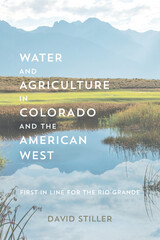 Water and Agriculture in Colorado and the American West: First in Line for the Rio Grande
David Stiller
University of Nevada Press, 2021 Water has always been one of the American West’s most precious and limited resources. The earliest inhabitants—Native Americans and later Hispanics—learned to share the region’s scant rainfall and snowmelt. When Euro-Americans arrived in the middle of the nineteenth century, they brought with them not only an interest in large-scale commercial agriculture but also new practices and laws about access to, and control of, the water essential for their survival and success. This included the concept of private rights to water, a critical resource that had previously been regarded as a communal asset.
David Stiller’s thoughtful study focuses on the history of agricultural water use of the Rio Grande in Colorado’s San Luis Valley. After surveying the practices of early farmers in the region, he focuses on the impacts of Euro-American settlement and the ways these new agrarians endeavored to control the river. Using the Rio Grande as a case study, Stiller offers an informed and accessible history of the development of practices and technologies to store, distribute, and exploit water in Colorado and other western states, as well as an account of the creation of water rights and laws that govern this essential commodity throughout the West to this day. Stiller’s work ranges from meticulously monitored fields of irrigated alfalfa and potatoes to the local and state water agencies and halls of Congress. He also includes perceptive comments on the future of western water as these arid states become increasingly urbanized during a period of worsening drought and climate change.
An excellent read for anyone curious about important issues in the West, Water and Agriculture in Colorado and the American West offers a succinct summary and analysis of Colorado’s use of water by agricultural interests, in addition to a valuable discussion of the past, present, and future of struggles over this necessary and endangered resource.
Water and Climate in the Western United States
W Lewis
University Press of Colorado, 2003 Water and Climate in the Western United States highlights the opportunity for and necessity of change in management of water, the West's most crucial resource. As old policies and institutions fail to meet changing demands for and availability of w
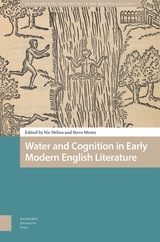 Water and Cognition in Early Modern English Literature
Nicholas Helms
Amsterdam University Press, 2024 Water and cognition seem unrelated things, the one a physical environment and the other an intellectual process. The essays in this book show how bringing these two modes together revitalizes our understanding of both. Water and especially oceanic spaces have been central to recent trends in the environmental humanities and premodern ecocriticism. Cognition, including ideas about the “extended mind” and distributed cognition, has also been important in early modern literary and cultural studies over the past few decades. This book aims to think “water” and “cognition” as distinct critical modes and also to combine them in what we term “watery thinking.” Water and Cognition brings together cognitive science and ecocriticism to ask how the environment influences how humans think, and how they think about thinking. The collection explores how water — as element, as environment, and as part of our bodies — affects the way early modern and contemporary discourses understand cognition.
Water and Light: A Diver's Journey to a Coral Reef
By Stephen Harrigan
University of Texas Press, 1999 This evocative account of the months Stephen Harrigan spent diving on the coral reefs off Grand Turk Island in the Caribbean was originally published by Houghton Mifflin in 1992.
Water and Politics: Clientelism and Reform in Urban Mexico
Veronica Herrera
University of Michigan Press, 2017 Most of the world’s population lives in cities in developing countries, where access to basic public services, such as water, electricity, and health clinics, is either inadequate or sorely missing. Water and Politics shows how politicians benefit politically from manipulating public service provision for electoral gain. In many young democracies, politicians exchange water service for votes or political support, rewarding allies or punishing political enemies. Surprisingly, the political problem of water provision has become more pronounced, as water service represents a valuable political currency in resource-scarce environments. Water and Politics finds that middle-class and industrial elites play an important role in generating pressure for public service reforms.
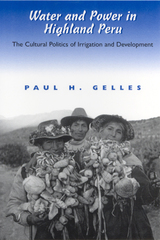 Water and Power in Highland Peru: The Cultural Politics of Irrigation and Development
Paul H Gelles
Rutgers University Press, 2000 Cabanaconde, a town of 5,000 people, is located in the arid Andean highlands. It is dominated by the foreboding Hualca Hualca mountain peak that is the source of this town’s much-needed water. How the villagers obtain this water, Paul Gelles writes, is not a simple process: the politics of irrigation in this area reflect a struggle for control of vital resources, deeply rooted in the clash between local, ritualized models of water distribution and the secular model put forth by the Peruvian state. Water and Power in Highland Peru provides an insightful case study on the intense conflicts over water rights, and a framework for studying ethnic conflict and the effects of “development,” not only in Peru, but in other areas as well. Most of the inhabitants of Cabanaconde do not identify themselves with the dominant Spanish-speaking culture found in Peru. And the Peruvian state, grounded in a racist, post-Colonial ethos, challenges the village’s long-standing, non-Western framework for organizing water management. Gelles demonstrates that Andean culture is dynamic and adaptive, and it is a powerful source of ethnic identity, even for those who leave the village to live elsewhere. Indigenous rituals developed in this part of the world, he states, have become powerful tools of resistance against interference by local elites and the present-day Peruvian state. Most importantly, the micropolitics of Cabanaconde provide a window into a struggle that is taking place around the world.
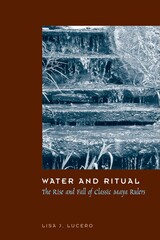 Water and Ritual: The Rise and Fall of Classic Maya Rulers
By Lisa J. Lucero
University of Texas Press, 2006 In the southern Maya lowlands, rainfall provided the primary and, in some areas, the only source of water for people and crops. Classic Maya kings sponsored elaborate public rituals that affirmed their close ties to the supernatural world and their ability to intercede with deities and ancestors to ensure an adequate amount of rain, which was then stored to provide water during the four-to-five-month dry season. As long as the rains came, Maya kings supplied their subjects with water and exacted tribute in labor and goods in return. But when the rains failed at the end of the Classic period (AD 850-950), the Maya rulers lost both their claim to supernatural power and their temporal authority. Maya commoners continued to supplicate gods and ancestors for rain in household rituals, but they stopped paying tribute to rulers whom the gods had forsaken. In this paradigm-shifting book, Lisa Lucero investigates the central role of water and ritual in the rise, dominance, and fall of Classic Maya rulers. She documents commoner, elite, and royal ritual histories in the southern Maya lowlands from the Late Preclassic through the Terminal Classic periods to show how elites and rulers gained political power through the public replication and elaboration of household-level rituals. At the same time, Lucero demonstrates that political power rested equally on material conditions that the Maya rulers could only partially control. Offering a new, more nuanced understanding of these dual bases of power, Lucero makes a compelling case for spiritual and material factors intermingling in the development and demise of Maya political complexity.
 Water and the Word, Volume I: Commentary
Susan A. Keefe
University of Notre Dame Press, 2002 Water and the Word focuses on a genre of literature written for the education of the Carolingian clergy: Carolingian baptismal instructions. This literature has never been brought together and studied collectively in the context of the books in which it circulated. As a corpus, read in comparison to one another, the baptismal tracts tell how baptism was celebrated and interpreted across Carolingian Europe. At the same time, in their manuscript context, they are an important new source of information regarding the nature and the success of the Carolingian Reform to educate the clergy.
This comprehensive study has three major objectives. One is to describe the codices in which the baptismal instructions are found, in order to show what other kinds of material the baptismal tracts were associated with and to show where, how, and by whom these codices were intended to be used. Another is to bring together the baptismal texts and study them systematically. Finally, a third objective is to interpret the Carolingian Reform in light of the baptismal instructions and the manuscripts in which they were copied.
Volume 1 of this two-volume set is devoted to analysis and interpretation of the material in volume 2. It is divided into three parts. The first part is concerned with the manuscript context of the baptismal instructions. In the second, the baptismal expositions themselves are analyzed. Part 3 of volume 1 offers some conclusions about the Carolingian Reform. Volume 2 contains the Latin text of sixty-six manuscripts, as well as descriptions, introductions, and a topical survey of the contents of these manuscripts. In its broadest context this study is about the Christianization of Europe--not the superficial conversion of conquered peoples, but the slow replacement of one mindset with another that came about through the education of the people under the care of pastors.
SUSAN A. KEEFE is associate professor of church history at Duke University.
 Water and the Word, Volume II: Texts and Notes
Susan A. Keefe
University of Notre Dame Press, 2002 Water and the Word focuses on a genre of literature written for the education of the Carolingian clergy: Carolingian baptismal instructions. This literature has never been brought together and studied collectively in the context of the books in which it circulated. As a corpus, read in comparison to one another, the baptismal tracts tell how baptism was celebrated and interpreted across Carolingian Europe. At the same time, in their manuscript context, they are an important new source of information regarding the nature and the success of the Carolingian Reform to educate the clergy.
This comprehensive study has three major objectives. One is to describe the codices in which the baptismal instructions are found, in order to show what other kinds of material the baptismal tracts were associated with and to show where, how, and by whom these codices were intended to be used. Another is to bring together the baptismal texts and study them systematically. Finally, a third objective is to interpret the Carolingian Reform in light of the baptismal instructions and the manuscripts in which they were copied.
Volume 1 of this two-volume set is devoted to analysis and interpretation of the material in volume 2. It is divided into three parts. The first part is concerned with the manuscript context of the baptismal instructions. In the second, the baptismal expositions themselves are analyzed. Part 3 of volume 1 offers some conclusions about the Carolingian Reform. Volume 2 contains the Latin text of sixty-six manuscripts, as well as descriptions, introductions, and a topical survey of the contents of these manuscripts. In its broadest context this study is about the Christianization of Europe--not the superficial conversion of conquered peoples, but the slow replacement of one mindset with another that came about through the education of the people under the care of pastors.
SUSAN A. KEEFE is associate professor of church history at Duke University.
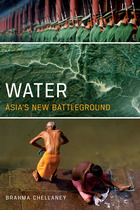 Water: Asia's New Battleground
Brahma Chellaney
Georgetown University Press, 2011 Winner of the Asia Society's Bernard Schwartz 2012 Book Award The battles of yesterday were fought over land. Those of today are over energy. But the battles of tomorrow may be over water. Nowhere is that danger greater than in water-distressed Asia. Water stress is set to become Asia’s defining crisis of the twenty-first century, creating obstacles to continued rapid economic growth, stoking interstate tensions over shared resources, exacerbating long-time territorial disputes, and imposing further hardships on the poor. Asia is home to many of the world's great rivers and lakes, but its huge population and exploding economic and agricultural demand for water make it the most water-scarce continent on a per capita basis. Many of Asia’s water sources cross national boundaries, and as less and less water is available, international tensions will rise. The potential for conflict is further underscored by China’s unrivaled global status as the source of transboundary river flows to the largest number of countries, ranging from India and Vietnam to Russia and Kazakhstan; yet a fast-rising China has declined to enter into water-sharing or cooperative treaties with these states, even as it taps the resources of international rivers. Water: Asia’s New Battleground is a pioneering study of Asia’s murky water politics and the relationships between fresh water, peace, and security. In this unique and highly readable book, Brahma Chellaney expertly paints a larger picture of water across Asia, highlights the security implications of resource-linked territorial disputes, and proposes real strategies to avoid conflict and more equitably share Asia’s water resources.
The Water Between Us
Shara McCallum
University of Pittsburgh Press, 1999 1998 Agnes Lynch Starrett Prize winner.
The Water Between Us is a poetic examination of cultural fragmentation, and the exile's struggle to reconcile the disparate and often conflicting influences of the homeland and the adopted country. The book also centers on other kinds of physical and emotional distances: those between mothers and daughters, those created by being of mixed racial descent, and those between colonizers and the colonized. Despite these distances, or perhaps because of them, the poems affirm the need for a multilayered and cohesive sense of self. McCallum's language is precise and graceful. Drawing from Anancy tales, Greek myth, and biblical stories, the poems deftly alternate between American English and Jamaican patois, and between images both familiar and surreal.
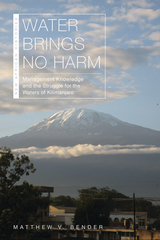 Water Brings No Harm: Management Knowledge and the Struggle for the Waters of Kilimanjaro
Matthew V. Bender
Ohio University Press, 2019 In Water Brings No Harm, Matthew V. Bender explores the history of community water management on Mount Kilimanjaro in Tanzania. Kilimanjaro’s Chagga-speaking peoples have long managed water by employing diverse knowledge: hydrological, technological, social, cultural, and political. Since the 1850s, they have encountered groups from beyond the mountain—colonial officials, missionaries, settlers, the independent Tanzanian state, development agencies, and climate scientists—who have understood water differently. Drawing on the concept of waterscapes—a term that describes how people “see” water, and how physical water resources intersect with their own beliefs, needs, and expectations—Bender argues that water conflicts should be understood as struggles between competing forms of knowledge. Water Brings No Harm encourages readers to think about the origins and interpretation of knowledge and development in Africa and the global south. It also speaks to the current global water crisis, proposing a new model for approaching sustainable water development worldwide.
The Water Carrier
Steve Straight
Northwestern University Press, 2002 Steve Straight's skillfully crafted poems cover a wide range of topics—love, marriage, family, work, and class issues. Not since E. A. Robinson has anyone captured the essence of the New England town with such keen observation. What gives this volume its distinctive voice is a Buddhist calm, tinged with irony and humor. Steve Straight touches the ordinary things of life with a magical whimsy and a delightful self-deprecating humor.
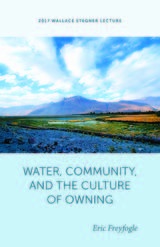 Water, Community, and the Culture of Owning
Eric T. Freyfogle
University of Utah Press, 2018 In this timely work, Eric Freyfogle probes the long-simmering struggles in the American West to address water-related problem. The big challenge is to resolve water shortages and meet high-valued water needs while also improving river ecosystems. These water conflicts, he suggests, have less to do with our contentious political differences than they do with longstanding core elements of American culture—inherited, shared ways of understanding our place in nature that no longer make good sense. Particularly troublesome are the ways we fragment it, valuing its parts as discrete commodities. Also at play is our cultural inability to think clearly about how best to draw the line between the legitimate use of nature and the abuse of it.
Building on these cultural critiques, Freyfogle takes up the issue of private property rights, highlighting the longstanding flexibility of this key American institution as well as the moral imperative to ensure that property rights aren’t used in ways that harm communities. Outdated understandings about private property, he concludes, have further confused our understanding and made sensible solutions to water problems even harder to imagine. Water-policy reform won’t happen, Freyfogle argues, until we reconsider how we understand nature and take charge of the institution of ownership, recasting it so as to increase the benefits it generates for everyone. If we can do that, solutions to water troubles could prove easier than we expect. The work concludes with an original, sweeping policy proposal to resolve the West’s water shortages and meet environmental needs in ways fair to all.
This lecture was presented on March 22, 2017, at the 22nd annual symposium sponsored by the Wallace Stegner Center for Land, Resources and the Environment at the S. J. Quinney College of Law, University of Utah.
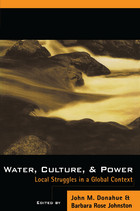 Water, Culture, and Power: Local Struggles In A Global Context
Edited by John M. Donahue and Barbara Rose Johnston
Island Press, 1997 According to some estimates, at least 1.7 billion people do not have an adequate supply of drinking water and as many as 40% of the world's population face chronic shortages. Yet water scarcity is more than a matter of terrain, increased population, and climate. It can also be a byproduct or end result of water management, where the building of dams, canals, and complicated delivery systems provide water for some at the cost of others, and result in short-term gains that wreak long-term ecological havoc. Water scarcity can also be a product of the social systems in which we live. Water, Culture, and Power presents a series of case studies from around the world that examine the complex culture and power dimensions of water resources and water resource management. Chapters describe highly contested and contentious cases that span the continuum of water management concerns from dam construction and hydroelectric power generation to water quality and potable water systems. Sections examine: impact of water resource development on indigenous peoples varied cultural meanings of water and water resources political process of funding and building water resource projects tensions between culture and power as they structure perceptions and experiences of water scarcity, transforming water from natural resource to social constructio. Case studies include Lummi nation challenges to water rights in the northwest United States; drinking water quality issues in Oaxaca de Juarez, Mexico; the effects of tourism development in the Bay Islands, Honduras; water scarcity on St. Thomas, the Virgin Islands; the role of water in the Arab-Israeli conflict; and other national and regional situations including those from Zimbabwe, Japan, and Bangladesh. While places and cases vary, all chapters address the values and meanings associated with water and how changes in power result in changes in both meaning and in patterns of use, access, and control. Water, Culture, and Power provides an important look at water conflicts and crises and is essential reading for students, researchers, and anyone interested in the role of cultural factors as they affect the political economy of natural resource use and control.
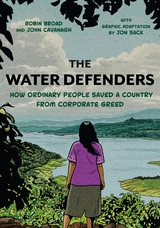 The Water Defenders: How Ordinary People Saved a Country from Corporate Greed
Robin Broad and John Cavanagh with Graphic Adaptation by Jon Sack
Ohio State University Press, 2026 In their acclaimed book The Water Defenders, Robin Broad and John Cavanagh told the story of activists in San Isidro, El Salvador, who fought multinational mining corporation OceanaGold and won—protecting their drinking water and environment from irreparable harm—despite great personal danger. Now, Jon Sack’s captivating graphic adaptation brings the story to new audiences and with new urgency, as environmental progress and human rights remain under assault around the world. The book is also updated to address Salvadoran dictator Nayib Bukele's ascent and the subsequent arrests of five water defenders.
Initially excited by the company’s promises of jobs and prosperity, farmer Vidalina Morales, brothers Marcelo and Miguel Rivera, and others soon realized that the trade-off was catastrophic contamination of El Salvador’s main source of fresh water. Facing corporate machinations and violence, the ordinary people of San Isidro and surrounding communities built a transnational coalition that prevailed over powerful adversaries to score an environmental victory with worldwide repercussions.
Broad and Cavanagh draw on over a decade of research, interviews, and experience as allies and experts in international development to recount the harrowing saga. A blueprint for civic bravery and local-to-global activism, as well as a rich history of Central America’s political conflicts and people’s fights against environmental and economic exploitation, this story will inspire anyone who feels helpless against corporate malfeasance.
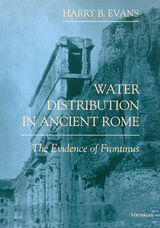 Water Distribution in Ancient Rome: The Evidence of Frontinus
Harry B. Evans
University of Michigan Press, 1997 Water Distribution in Ancient Rome examines the nature and effects of Rome's system of aqueducts, drawing on the difficult but important work of the Roman engineer Frontinus. Among other questions, the volume considers how water traveled to the many neighborhoods of hilly Rome, which neighborhoods were connected to the water system, and how those connections were made. A consideration of Frontinus' writing reveals comprehensive planning by city officials over long periods of time and the difficulties these engineering feats posed. Water Distribution in Ancient Rome is essential reading for students and scholars of Frontinus, of Roman engineering and imperial policy, and of Roman topography and archaeology.
"Clear style, good maps and photographs, notes, and bibliography make this work accessible and valuable for students at every level. An admirable contribution to knowledge of the Roman Empire." --Choice
Harry B. Evans is Professor of Classics, Fordham University. He is a recipient of the Rome Prize and is past Secretary-Treasurer of the American Philological Association.
This book was published with the assistance of a grant from the National Endowment for the Humanities.
The Water Diviner and Other Stories
Ruvanee Pietersz Vilhauer
University of Iowa Press, 2018 In this thought-provoking collection, Sri Lankan immigrants grapple with events that challenge perspectives and alter lives. A volunteer faces memories of wartime violence when she meets a cantankerous old lady on a Meals on Wheels route. A lonely widow obsessed with an impending apocalypse meets an oddly inspiring man. A maidservant challenges class divisions when she becomes an American professor’s wife. An angry tenant fights suspicion when her landlord is burgled. Hardened inmates challenge a young jail psychiatrist’s competence. A father wonders whether to expose his young son’s bully at a basketball game. A student facing poverty courts a benefactor. And in the depths of an isolated Wyoming winter, a woman tries to resist a con artist. These and other tales explore the immigrant experience with a piercing authenticity.
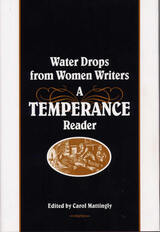 Water Drops from Women Writers: A Temperance Reader
Edited by Carol Mattingly
Southern Illinois University Press, 2001 The temperance movement was the largest single organizing force for women in American history, uniting and empowering women seeking to enact social change. By the end of the century, more than two hundred thousand women had become members of the Woman’s Christian Temperance Union (WCTU), and numerous others belonged to smaller temperance organizations. Despite the impact of the movement, its literature has been largely neglected. In this collection of nineteen temperance tales, Carol Mattingly has recovered and revalued previously unavailable writing by women. Mattingly’s introduction provides a context for these stories, locating the pieces within the temperance movement as well as within larger issues in women’s studies. The temperance movement was essential to women’s awareness of and efforts to change gender inequalities in the United States during the nineteenth and early twentieth centuries. In their fiction, temperance writers protested physical and emotional abuse at the hands of men, argued for women’s rights, addressed legal concerns, such as divorce and child custody, and denounced gender-biased decisions affecting the care and rights of children. Temperance fiction by women broadens our understanding of the connections between women’s rights and temperance, while shedding light on women’s thinking and behavior in the nineteenth century. Water Drops from Women Writers features biographical sketches of each writer as well as thirteen illustrations.
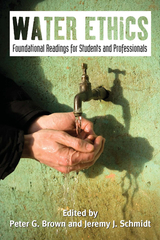 Water Ethics: Foundational Readings for Students and Professionals
Peter G. Brown and Jeremy J. Schmidt
Island Press, 2010 Having manipulated water for irrigation, energy, and burgeoning urban centers, humans are facing the reality that although fresh water is renewable, it is as finite as any other resource. Countries, states, and cities are now scrambling to develop an intelligent, well-informed approach to mitigate the growing global water crisis. Water Ethics is based on the belief that responding to contemporary water problems requires attending to questions of value and culture. How should we capture, store, and distribute water? At what cost? For whom? How do we reconcile water's dual roles as a practical resource and spiritual symbol?
According to the editors of this collection of foundational essays, questions surrounding water are inherently ethical. Peter Brown and Jeremy Schmidt contend that all approaches to managing water, no matter how grounded in empirical data, involve value judgments and cultural assumptions. Each of the six sections of the book discuses a different approach to thinking about the relationship between water and humanity, from utilitarianism to eco-feminism to religious beliefs, including Islam, Hinduism, and Christianity. Contributors range from Bartholemew, Ecumenical Patriarch of the Orthodox Church to Nobel Laureate economist Elinor Ostrom and water policy expert Sandra Postel. Each section is framed by an original introductory essay written by the editors.
Water Ethics will help readers understand how various moral perspectives, even when unstated, have guided and will continue to guide water policy around the globe.
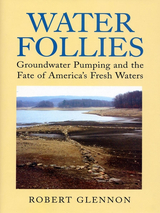 Water Follies: Groundwater Pumping and the Fate of America's Fresh Waters
Robert Glennon
Island Press, 2002 The Santa Cruz River that once flowed through Tucson, Arizona is today a sad mirage of a river. Except for brief periods following heavy rainfall, it is bone dry. The cottonwood and willow trees that once lined its banks have died, and the profusion of birds and wildlife recorded by early settlers are nowhere to be seen. The river is dead. What happened? Where did the water go.
As Robert Glennon explains in Water Follies, what killed the Santa Cruz River -- and could devastate other surface waters across the United States -- was groundwater pumping. From 1940 to 2000, the volume of water drawn annually from underground aquifers in Tucson jumped more than six-fold, from 50,000 to 330,000 acre-feet per year. And Tucson is hardly an exception -- similar increases in groundwater pumping have occurred across the country and around the world. In a striking collection of stories that bring to life the human and natural consequences of our growing national thirst, Robert Glennon provides an occasionally wry and always fascinating account of groundwater pumping and the environmental problems it causes.
Robert Glennon sketches the culture of water use in the United States, explaining how and why we are growing increasingly reliant on groundwater. He uses the examples of the Santa Cruz and San Pedro rivers in Arizona to illustrate the science of hydrology and the legal aspects of water use and conflicts. Following that, he offers a dozen stories -- ranging from Down East Maine to San Antonio's River Walk to Atlanta's burgeoning suburbs -- that clearly illustrate the array of problems caused by groundwater pumping. Each episode poses a conflict of values that reveals the complexity of how and why we use water. These poignant and sometimes perverse tales tell of human foibles including greed, stubbornness, and, especially, the unlimited human capacity to ignore reality.
As Robert Glennon explores the folly of our actions and the laws governing them, he suggests common-sense legal and policy reforms that could help avert potentially catastrophic future effects. Water Follies, the first book to focus on the impact of groundwater pumping on the environment, brings this widespread but underappreciated problem to the attention of citizens and communities across America.
 Water Guest
Caroline M. Mar
University of Wisconsin Press, 2025 Lake Tahoe: home of the Washoe Tribe, a shining blue jewel that crowns the Sierra Nevada, and a beloved American vacation destination made accessible by the transcontinental railroad built largely by Chinese laborers. This gorgeous location forms the site from which Caroline M. Mar’s stunning collection, Water Guest, seeks to reconcile issues of identity, ownership, and place. Mar’s attempts to locate herself geographically, genealogically, and etymologically echo throughout the poems. A direct ancestor was a railroad laborer; is that why her love for the land feels older than herself? Or is it the siren call of the deep, clear water?
Raising questions of inheritance, the conundrum of land ownership, and the violence of history, Mar gives voice to the lost writing of Chinese laborers and silent communion to those of us still here—immigrant and Indigenous, settler and resister. This engaging collection finds acceptance, if not resolution, through the questions themselves.
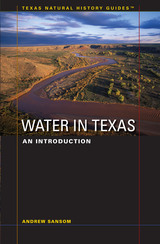 Water in Texas: An Introduction
By Andrew Sansom
University of Texas Press, 2008 No natural resource issue has greater significance for the future of Texas than water. The state's demand for water for municipal, industrial, agricultural, and recreational uses continues to grow exponentially, while the supply from rivers, lakes, aquifers, and reservoirs is limited. To help Texans manage their water resources today and plan for future needs, one of Texas's top water experts has compiled this authoritative overview of water issues in Texas. Water in Texas covers all the major themes in water management and conservation: - Living with a Limited Resource
- The Molecule that Moves Mountains
- A Texas Water Journey
- The Gulf Shores of Texas
- Who's Who in Water
- Texas Water Law: A Blend of Two Cultures
- Does Texas Have Enough Water?
- Planning for the Future
- What's in Your Water?
- How Much is Water Worth?
- Water is Our Legacy
Illustrated with color photographs and maps, Water in Texas will be the essential resource for landowners, citizen activists, policymakers, and city planners.
 Water in the Arab World: Perspectives and Prognoses
Peter Rogers
Harvard University Press, 1994 This set of eleven essays addresses the tightening water resource problems of the Arab region’s twenty countries. The authors discuss themes of water conflict and provide detailed looks at four sub-areas: the Maghreb, the Nile countries, the Arabian Peninsula, and the Mashrek.
This century has seen a technological drive to enlarge traditional surface and groundwater supplies and to expand irrigated farming for rapidly growing and progressively more prosperous populations. But now the region is facing absolute limits on its fresh water. Water in the Arab World focuses on today’s need to move toward rationalized new patterns of using water within the national economies, a transition often described as moving from supply to demand management. The change calls for intensified national legislative and planning efforts concerning water, with serious consideration of desalination and conservation, as well as of pricing and market approaches to the allocation of a very constrained supply.
Water in the Hispanic Southwest: A Social and Legal History, 1550-1850
Michael C. Meyer
University of Arizona Press, 1984 When Spanish conquistadores marched north from Mexico's interior, they encountered one harsh reality that eclipsed all others: the importance of water in an arid land. Covering a time when legal precedents were being set for many water rights laws, this study contributes much to an understanding of the modern Southwest, especially disputes involving Indian water rights. The paperback edition includes a new afterword by the author which discusses the results of recent research.
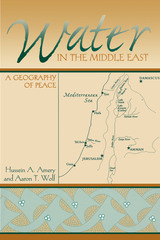 Water in the Middle East: A Geography of Peace
Edited by Hussein A. Amery and Aaron Wolf
University of Texas Press, 2000 Finding "streams in the desert" has never been more urgent for the peoples of the Middle East. Rapid population growth and a rising standard of living are driving water demand inexorably upward, while the natural supply has not increased since Biblical times. Ensuring a fair and adequate distribution of water in the region is vitally important for building a lasting peace among the nations of the Middle East. Addressing water needs from a geographical perspective, the contributors to this book analyze and assess the impact of scarce water resources in the Jordan River basin countries and territories (Israel, Jordan, Lebanon, Palestine, and Syria) as these long-time antagonists work toward peace. After geographical and historical overviews, the authors envision the future-what the water issues may be when Israel and Syria begin negotiating, the "hydro-security" needs of each nation, and the difficulties of planning for uncertainty. Without proposing any one ideal scheme, they discuss the possibilities for cooperative sharing of water resources, while honestly acknowledging the political constraints that may limit such projects. The final essay speaks to the needs of the one party so rarely represented at the negotiating table—the Jordan River itself.
Water in Times of Climate Change: A Values-driven Dialogue
Jan Jorrit Hasselaar
Amsterdam University Press, 2021 This book on water and climate change goes beyond the usual and predictable analyses, by bringing religion and values into a discussion that is often dominated by technocratic solutions. The three case studies of Jakarta, Cape Town, and Amsterdam demonstrate the challenges of water management in urban areas and the role religion can play in addressing them. With representatives from science, politics, economics, and religion, as well as young voices, the book stimulates a values-driven dialogue on issues of water in times of climate change.
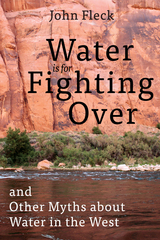 Water is for Fighting Over: and Other Myths about Water in the West
John Fleck
Island Press, 2019 "Illuminating." —New York Times
WIRED's Required Science Reading 2016
When we think of water in the West, we think of conflict and crisis. In recent years, newspaper headlines have screamed, “Scarce water and the death of California farms,” “The Dust Bowl returns,” “A ‘megadrought’ will grip U.S. in the coming decades.” Yet similar stories have been appearing for decades and the taps continue to flow. John Fleck argues that the talk of impending doom is not only untrue, but dangerous. When people get scared, they fight for the last drop of water; but when they actually have less, they use less.
Having covered environmental issues in the West for a quarter century, Fleck would be the last writer to discount the serious problems posed by a dwindling Colorado River. But in that time, Fleck has also seen people in the Colorado River Basin come together, conserve, and share the water that is available. Western communities, whether farmers and city-dwellers or US environmentalists and Mexican water managers, have a promising record of cooperation, a record often obscured by the crisis narrative.
In this fresh take on western water, Fleck brings to light the true history of collaboration and examines the bonds currently being forged to solve the Basin’s most dire threats. Rather than perpetuate the myth “Whiskey's for drinkin', water's for fightin' over," Fleck urges readers to embrace a new, more optimistic narrative—a future where the Colorado continues to flow.
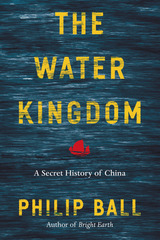 The Water Kingdom: A Secret History of China
Philip Ball
University of Chicago Press, 2017 From the Yangtze to the Yellow River, China is traversed by great waterways, which have defined its politics and ways of life for centuries. Water has been so integral to China’s culture, economy, and growth and development that it provides a window on the whole sweep of Chinese history. In The Water Kingdom, renowned writer Philip Ball opens that window to offer an epic and powerful new way of thinking about Chinese civilization.
Water, Ball shows, is a key that unlocks much of Chinese culture. In The Water Kingdom, he takes us on a grand journey through China’s past and present, showing how the complexity and energy of the country and its history repeatedly come back to the challenges, opportunities, and inspiration provided by the waterways. Drawing on stories from travelers and explorers, poets and painters, bureaucrats and activists, all of whom have been influenced by an environment shaped and permeated by water, Ball explores how the ubiquitous relationship of the Chinese people to water has made it an enduring metaphor for philosophical thought and artistic expression. From the Han emperors to Mao, the ability to manage the waters ― to provide irrigation and defend against floods ― was a barometer of political legitimacy, often resulting in engineering works on a gigantic scale. It is a struggle that continues today, as the strain of economic growth on water resources may be the greatest threat to China’s future.
The Water Kingdom offers an unusual and fascinating history, uncovering just how much of China’s art, politics, and outlook have been defined by the links between humanity and nature.
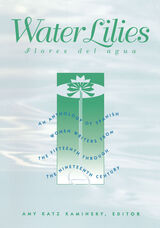 Water Lilies: An Anthology of Spanish Women Writers from the Fifteenth through the Nineteenth Century
Amy Kaminsky
University of Minnesota Press, 1995 Poetry and prose by Spanish women presented here in both English and Spanish. A dazzling sampler, Water Lilies brings to light a rich and until now largely invisible version of Spanish literary history. These hard-to-find works, most translated for the first time, are printed on facing pages in Spanish and English and located within a critical, biographical, and historical overview. Here are five centuries of writing by Spanish women, the unknown recovered from obscurity, the well-known seen as they rarely have been-in the context of a women’s literary history. Some of these writers, like Rosalía de Castro in “The Bluestockings” and Teresa de Cartagena in Wonder at the Work of God, question the relationship between the woman writer and the act of writing. Some, like the poet Carolina Coronado in “The Twin Geniuses: Sappho and Saint Teresa of Jesus,” overtly seek a literary tradition. Others, like Saint Teresa in her Life and Luisa Sigea in her poetry, provide touchstones for women in search of such a tradition.Legends and stories of women’s friendships, the inconstancy of men, and the love of God; Spain’s first autobiographical text; secular and religious poetry from medieval through recent times; an excerpt from one of the few chivalresque novels written by a woman; a full-length Golden Age comedia: this is the wide range of works Water Lilies comprises. Brought together for the first time, the writers articulate their resistance to, and their complicity in, a literary history that, until now, has tried to exclude them.
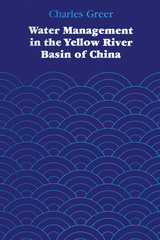 Water Management in the Yellow River Basin of China
By Charles Greer
University of Texas Press, 1979 Throughout history the Yellow River, or Huang Ho, has repeatedly broken through its levees to rampage over the densely populated North China Plain. In spite of its importance as the major river of China, little has been written on the Yellow River and its management. Charles Greer fills this gap with his comprehensive and thoroughly researched book. This work deals with the technological problems faced by the Chinese in taming the destructive river and also focuses on cultural attitudes that have governed the Chinese response to nature. For example, water control was not highly regarded by the Taoists, who preferred to let nature take its course; but the Buddhists sought to harness the river against devastating floods and also to benefit their crops. Greer traces water use and management in the Yellow River Basin through Chinese history and discusses early Western interest in the flood problem and Soviet assistance in Yellow River development. He analyzes traditional methods of control as well as newer strategies and their implications. The author of this book is one of a small number of social scientists able to master the original Chinese-language historical materials necessary to this undertaking. He has also examined Chinese water management methods first-hand as part of a delegation of water management specialists in 1976. In addition to geographers and conservationists, China scholars will find this book valuable because of the axial role the control of the Yellow River plays in the fundamental economic health of the People’s Republic of China. Water management engineers will find much useful comparative material.
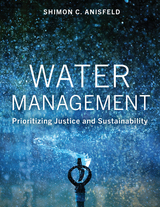 Water Management: Prioritizing Justice and Sustainability
Shimon C. Anisfeld
Island Press, 2024 Flooding in California. Drought and famine in the Horn of Africa. Massive fish kills in Texas and Australia. “Forever chemicals” in US drinking water. Similar headlines are sure to dominate the news in the years ahead. What is sometimes missing from the headlines, though, is an understanding that these diverse problems are related: manifestations of serious underlying stresses on our water systems. These stresses require sustained attention from water managers, scientists, policymakers, and the public, even after the headlines have faded. That attention, in turn, requires a shared understanding of how water systems function, the problems facing them, and the tools available to increase their resilience.
This text fills that need by providing the necessary knowledge base for understanding and managing complex water problems. It is geared primarily towards students in water management courses at the undergraduate and graduate levels but will also be a helpful resource for practicing water professionals who want to get new ideas or a broader view of the subject.
Rather than focusing on one type of water problem (as many water books do), this text explores the entire gamut of water issues, from dams to desalination, from flooding to famine, from prior appropriation to pumped storage, from sanitation to stormwater. And rather than teaching from one disciplinary perspective (as many water books do), it looks at water problems through a variety of lenses: hydrology, climate science, ecology, and engineering, but also law, economics, history, and environmental justice. The result is a concise yet comprehensive introduction to one of the most critical and demanding challenges of our time: developing just and sustainable solutions to water management.
Water Mask
Monica Devine
University of Alaska Press, 2019 Water Mask is an adventurous memoir from Monica Devine, an itinerant therapist who travels to villages throughout Alaska and builds a life in this vast, captivating landscape. She traverses mountains, navigates sea ice with whalers, and whirls two thousand feet above tundra with a rookie bush pilot; she negotiates the death of her father, and the near-loss of her family’s cabin on the Copper River. Her journey is exhilarating—but not without reminders of the folly of romanticizing a northern landscape that both rejects and beguiles. Reflections on family, place, and culture are woven into a seductive tapestry of a life well-lived and well-loved.
Water Panthers, Bears, and Thunderbirds: Exploring Wisconsin's Effigy Mounds
Bobbie Malone and Amy Rosebrough
Wisconsin Historical Society Press, 2003
Based on recent archaeological interpretation, this standards-based resource enriches material covered in Native People of Wisconsin. Water Panthers, Bears, and Thunderbirds introduces young readers to effigy mound sites in five southern Wisconsin counties. Suggested activities encourage students to graph, compare, contrast, and analyze the ways these mound groups vary from county to county.
Water Politics in Northern Nevada: A Century of Struggle
Leah J. Wilds
University of Nevada Press, 2010 Nevada’s Newlands Project, completed in 1915, was the first federally subsidized water reclamation scheme in the U.S. Water Politics in Northern Nevada examines its construction and its many unintended consequences, including deterioration of water quality, destruction of vital wetlands, interruption of ecosystems, and pollution of waterways and ground water. The project also resulted in decades of litigation involving water allocation and the abatement of environmental, social, and economic problems. This book traces the long course of negotiation between competing users that resulted in the signing of the Truckee River Operating Agreement in 2008. It illustrates the challenges of sharing a scarce resource to meet diverse needs and of preserving the resource and the environment for future generations.
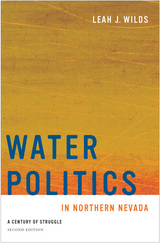 Water Politics in Northern Nevada: A Century of Struggle, Second Edition
Leah J. Wilds
University of Nevada Press, 2014 In northwestern Nevada, the waters of the Truckee, Carson, and Walker river systems are fought over by competing interests: agriculture, industry, Native Americans and newer residents, and environmentalists. Much of the conflict was caused by the Newlands Project, completed in 1915, the earliest federal water reclamation scheme. Diverting these waters destroyed vital wetlands, polluted groundwater, nearly annihilated the cui-ui and the Lahontan cutthroat trout, and threatened the existence of Pyramid Lake.
Water Politics in Northern Nevada examines the Newlands Project, its unintended consequences, and decades of litigation over the abatement of these problems and fair allocation of water. Negotiations and federal legislation brought about the Truckee River Operating Agreement in 2008. This revised edition brings the reader up to date on the implementation of the agreement, including ongoing efforts to preserve and enhance Pyramid Lake. The second edition now also includes a discussion of the Walker River basin, following a major project undertaken to address concerns about the health and viability of Walker Lake. The approaches taken to save these two desert treasures, Pyramid Lake and Walker Lake, are offered as models for resolving similar water-resource conflicts in the West.
Leah J. Wilds’s study is crucial reading for students and scholars of water politics and environmental issues, not just in Nevada but throughout the western United States.
Water Puppets
Quan Barry
University of Pittsburgh Press, 2011
Winner of the 2010 Donald Hall Prize in Poetry
In her third poetry collection, Quan Barry explores the universal image of war as evidenced in Afghanistan and Iraq as well as Vietnam, the country of her birth. In the long poem “meditations” Barry examines her own guilt in initially supporting the invasion of Iraq. Throughout the manuscript she investigates war and its aftermath by negotiating between geographically disparate landscapes—from the genocide in the Congo—to a series of pros poem “snapshots” of modern day Vietnam. Despite the gravity of war, Barry also turns her signature lyricism to other topics such as the beauty of Peru or the paintings of Ana Fernandez.
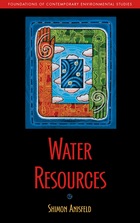 Water Resources
Shimon Anisfeld
Island Press, 2011 In this concise introduction to water resources, Shimon Anisfeld explores the fundamental interactions between humans and water, including drinking, sanitation, irrigation, and power production. The book familiarizes students with the current water crisis and with approaches for managing this essential resource more effectively in a time of rapid environmental and social change. Anisfeld addresses both human and ecological problems, including scarcity, pollution, disease, flooding, conflicts over water, and degradation of aquatic ecosystems. In addition to providing the background necessary to understand each of these problems, the book discusses ways to move towards better management and addresses the key current debates in the water policy field.
In the past, water development has often proceeded in a single-sector fashion, with each group of users implementing its own plans without coordination with other groups, resulting in both conflict and inefficiency. Now, Anisfeld writes, the challenge of water management is figuring out how to balance all the different demands for water, from sanitation to energy generation to ecosystem protection.
For inquiring students of any level, Water Resources provides a comprehensive one-volume guide to a complex but vital field of study.
Water Resources: Efficient, Sustainable and Equitable Use
Wolfram Mauser
Haus Publishing, 2008 Water is a vital part of every ecosystem on the planet. It is a prerequisite for the basic function and productive efficiency of life on Earth. Today, approximately a third of the earth's population suffers because of water scarcity, and by the year 2025, this percentage is likely rise to two-thirds. Water Resources: Efficient, Sustainable and Equitable Use shows what conflicts this will entail, and provides a basis for possible solutions.
 Water Security: The Water-Food-Energy-Climate Nexus
The World Economic Forum Water Initiative
Island Press, 2011 The world is on the brink of the greatest crisis it has ever faced: a spiraling lack of fresh water. Groundwater is drying up, even as water demands for food production, for energy, and for manufacturing are surging. Water is already emerging as a headline geopolitical issue—and worsening water security will soon have dire consequences in many parts of the global economic system.
Directed by UN Secretary General Ban Ki-Moon at the 2008 Davos Annual Meeting, the World Economic Forum assembled the world’s foremost group of public, private, non-governmental-organization and academic experts to examine the water crisis issue from all perspectives. The result of their work is this forecast—a stark, non-technical overview of where we will be by 2025 if we take a business-as-usual approach to (mis)managing our water resources. The findings are shocking. Perhaps equally stunning are the potential solutions and the recommendations that the group presents. All are included in this landmark publication.
Water Security contains compelling commentary from leading decision-makers, past and present. The commentary is supported by analysis from leading academics of how the world economy will be affected if world leaders cannot agree on solutions. The book suggests how business and politics need to manage the energy-food-water-climate axis as leaders negotiate the details of the climate regime that replace Kyoto Protocols.
Water Societies and Technologies from the Past and Present
Edited by Mark Altaweel and Yijie Zhuang
University College London, 2018 Today, our societies face great challenges with water, both in terms of quantity and quality, but many of these challenges also existed at points in the past. Focusing on Asia, Water Societies and Technologies from the Past and Present seeks to highlight the issues that emerge or reemerge across different societies and periods and asks what they can tell us about water sustainability. Incorporating cutting-edge research and pioneering field surveys on past and present water management practices, the interdisciplinary contributors together identify how societies managed water resource challenges and utilized water in ways that allowed them to evolve, persist, or drastically alter their environment.
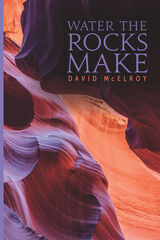 Water the Rocks Make
David McElroy
University of Alaska Press, 2021 The poems of Water the Rocks Make commit into words the turbulence of emotion and thought stirred up by life’s events: family trauma, psychiatric instability, the legal system, the death of a loved one, identity, cultural displacement, work, loss, creativity, and through everything, love.
Set primarily in Alaska, where author David McElroy has lived most of his life, the real action in these poems is in thought—the mind coming to terms (words) with consciousness, the mixing and rendering of reality and imagination. McElroy delves down the many rapid turns toward meaning through these contemplations on personification of a long-tailed boat in Asia; Adam tasked with naming the creatures; synthesizing the agony of accident, disease, and death; Descartes musing about an oilfield bridge; the excitement of sensual love; or the history and creativity emerging from a landfill.
There is sadness here, but through the rigorous manipulation of imagery, rhythm, and sound, Water the Rocks Make strives to “…contribute their daily/ details in our remarkable trick of happiness…to rise from the mulch/ of dreams like seedling teak goofy with life/ and floppy leaves.”
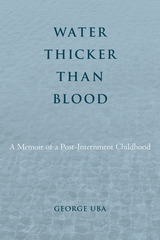 Water Thicker Than Blood: A Memoir of a Post-Internment Childhood
George Uba
Temple University Press, 2022 “I thought my life began in Chicago. I was mistaken. That is where my body first made its appearance, but the contours of my life…had their start much sooner.” In Water Thicker Than Blood, poet and professor George Uba traces his life as a Japanese American born in the late 1940s, a period of insidious anti-Japanese racism. His beautiful, impressionist memoir chronicles how he, like many Sansei (and Nisei) across the United States, grappled with dislocation and trauma while seeking acceptance and belonging. Uba’s personal account of his efforts to achieve normality and assuage guilt unfolds as racial demographics in America are shifting. He struggled with inherently violent midcentury educational and childrearing practices and a family health crisis, along with bullying. Uba describes boy scouts and yogore (community rebels and castoffs) with vivid detail, using these vignettes to show how margins were blurred and how both sets of youth experienced injury through the same ideological pressures. Water Thicker Than Blood is not a conventional story about recovery or family reconciliation. But itoffers an intimate look at the lasting—in some ways irreversible—damage caused by post-internment ideologies of “being accepted” and “fitting in inconspicuously.” It speaks volumes for the greater Sansei post-internment experience.
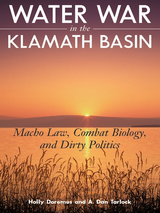 Water War in the Klamath Basin: Macho Law, Combat Biology, and Dirty Politics
Holly Doremus and A. Dan Tarlock
Island Press, 2008 In the drought summer of 2001, a simmering conflict between agricultural and environmental interests in southern Oregon’s Upper Klamath Basin turned into a guerrilla war of protests, vandalism, and apocalyptic rhetoric when the federal Bureau of Reclamation shut down the headgates of the Klamath Project to conserve water needed by endangered species. This was the first time in U.S. history that the headgates of a federal irrigation project were closed—and irrigators denied the use of their state water rights—in favor of conservation. Farmers mounted a brief rebellion to keep the water flowing, but ultimately conceded defeat.
In Water War in the Klamath Basin, legal scholars Holly Doremus and A. Dan Tarlock examine the genesis of the crisis and its fallout, offering a comprehensive review of the event, the history leading up to it, and the lessons it holds for anyone seeking to understand conflicts over water use in the arid West. The authors focus primarily on the legal institutions that contributed to the conflict—what they call “the accretion of unintegrated resource management and environmental laws” that make environmental protection so challenging, especially in politically divided regions with a long-standing history of entitlement-based resource allocation.
Water War in the Klamath Basin explores common elements fundamental to natural resource conflicts that must be overcome if conflicts are to be resolved. It is a fascinating look at a topic of importance for anyone concerned with the management, use, and conservation of increasingly limited natural resources.
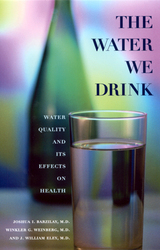 The Water We Drink: Water Quality and Its Effects on Health
Joshua I. Barzilay, M.D., Winkler G. Weinberg, M.D. and J.William Eley, M.D.
Rutgers University Press, 1999 We all drink water and water-based fluids, yet most of us take water for granted. We assume that when we turn on the tap to fill our glass, bathtub, or washing machine, clean water will flow. But is it really safe? And if it is not, what can we do about it? The doctors who have written The Water We Drink provide readers with practical information on the health issues relating to water quality and suggest ways we can improve the quality and safety of our drinking water. Most of us do not realize that any small amount of contaminants found in drinking water may, over time, increase our susceptibility to many of the chronic illnesses that are becoming increasingly prevalent in our society as the population ages, illnesses such as Alzheimer’s disease and cancer. Contaminants have also been linked to increased rates of infertility. TheWater We Drink begins with a review of the history of water, disease, and drinking water as it relates to disease and sanitation. The manner in which drinking water is currently regulated is described, along with information on water sources and treatment. The authors then examine health issues relating to drinking water, including infectious diseases, cancer risks, estrogens and fertility, and the effects of mineral and heavy metal content. They look at the benefits and risks of bottled waters and of water purification systems currently available to consumers. The book also provides clear, understandable lists of contaminants levels in drinking water both regulated and unregulated by law, cancer causing contaminants of drinking water and their sources, and the mineral and sodium contents of commonly used bottled waters. A helpful glossary of terms, as well as a bibliography of additional agencies, books, and web sites to consult for more information on drinking water and health, are also provided.
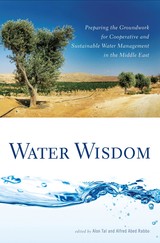 Water Wisdom: Preparing the Groundwork for Cooperative and Sustainable Water Management in the Middle East
Abed Rabbo, Alfred
Rutgers University Press, 2010 Israel and Palestine are, by international criteria, water scarce. As the peace process continues amidst ongoing violence, water remains a political and environmental issue. Thirty leading Palestinian and Israeli activists, water scientists, politicians, and others met and worked together to develop a future vision for the sustainable shared management of water resources that is presented in Water Wisdom. Their essays explore the full range of scientific, political, social, and economic issues related to water use in the region; acknowledge areas of continuing controversy, from access rights to the Mountain Aquifer to utilization of waters from the Jordan River; and identify areas of agreement, disagreement, and options for resolution. Water Wisdom is model for those who believe that water conflict can be an opportunity for cooperation rather than violence.
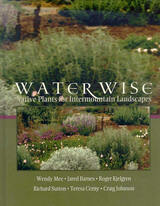 Water Wise: Native Plants for Intermountain Landscapes
Wendy Mee, Jared Barnes, Roger Kjelgren, Richard Sutton, Teresa Cerny, and Craig Johnson
Utah State University Press, 2003 Today, native plants and water conservation are subjects of vital interest to cities, offices, homeowners, and agriculture alike, as all are affected by the growing shortage of water in the Intermountain region. This comprehensive volume provides specific information about shrubs, trees, grasses, forbs, and cacti that are native to most states in the Intermountain West, and that can be used in landscaping to conserve water, reflect and preserve the region's landscape character, and help protect its ecological integrity. The book is an invaluable guide for the professional landscaper, horticulturist, and others in the Intermountain nursery industry, as well as for the student, general reader, gardener, and homeowner. Water Wise is both convenient and comprehensive. The heart of the book presents hundreds of species, devoting a full page to each, with a description of appearance, habitat, landscape use, and other comments. Color photographs illustrate each plant described. A reader-friendly introduction provides important background on the ecology of the Intermountain West, along with full descriptions of native plant habitats and associations. An accessible resource of accurate native plant information for all readers, Water Wise will be indispensable to professional landscapers and amateurs alike.
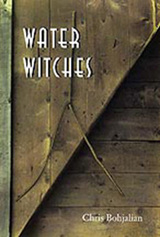 Water Witches
Chris. Bohjalian
University Press of New England, 1995 Vermont is drying up. The normally lush, green countryside is in the grip of the worst drought in years: stunted cornstalks rasp in the hot July breeze, parched vegetable gardens wither and die, the Chittenden River shrinks to a trickle, and the drilling trucks are booked solid as one by one the wells give out. Patience Avery, known nationwide as a gifted "water witch," is having a busy summer, too. Using the tools of the dowser's trade -- divining sticks, metal rods, bobbers, and pendulums -- she can locate, among other things, aquifers deep within the earth. In the midst of this crisis, Scottie Winston lobbies for permits to expand Powder Peak, a local ski area that's his law firm's principal client. As part of the expansion, the resort seeks to draw water for snowmaking from the beleaguered Chittenden, despite opposition from environmentalists who fear that the already weakened river will be damaged beyond repair. What ensues in Chris Bohjalian's fourth novel is a struggle between conservation and development, rugged tradition versus inevitable progress. But it is also a tale of the clash between science and mystery, a chronicle of one man's transformation from cynic to believer. Vivid with the texture of New England ways, alive with characters both quirky and real, informed by the ongoing, real-life battles between environmentalism and economic expansion in Vermont, Water Witches is a story of ineffable forces, tenuous balances, "and perhaps something about our abilities as a people to heal and forgive and to love."
Water Witching U.S.A.
Evon Z. Vogt and Ray Hyman
University of Chicago Press, 2000 Despite advanced technology, the practice of water witching—using a forked stick to indicate an underground source of water—persists in both rural and urban areas. Water Witching U.S.A. is a lively look at "dowsing," full of personal accounts, historical background, and data from controlled experiments and a nationwide survey. This study includes a collection of photographs, drawings, and historical woodcuts showing the tools, techniques, and early instances of dowsing, as well as cross-sectional views contrasting the dowser's explanation of groundwater with the geologist's.
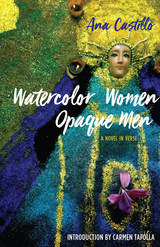 Watercolor Women Opaque Men: A Novel in Verse
Ana Castillo, introduction by Carmen Tafolla
Northwestern University Press, 2017 2006 Independent Publisher Book Award for Story Teller of the Year
In this updated edition of Ana Castillo’s celebrated novel in verse, featuring a new introduction by Poet Laureate of Texas Carmen Tafolla, we revisit the story’s spirited heroine, known only as “Ella” or “She,” as she takes us through her own epic journey of self-actualization as an artist and a woman. With a remarkable combination of tenderness, lyricism, wicked humor, and biting satire, Castillo dramatizes Ella’s struggle through poverty as a Chicano single mother at the threshold of the twenty-first century, fighting for upward mobility while trying to raise her son to be independent and self-sufficient. Urged on by the gods of the ancients, Ella’s life interweaves with those of others whose existences are often neglected, even denied, by society’s status quo. Castillo’s strong rhythmic voice and exploration of such issues as love, sexual orientation, and cultural identity will resonate with readers today as much as they did upon the book’s original publication more than ten years ago. This expanded edition also includes a short preface by the author, as well as a glossary, a reader’s guide, and a list of additional suggested readings.
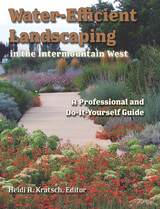 Water-Efficient Landscaping in the Intermountain West: A Professional and Do-It-Yourself Guide
Heidi Kratsch
Utah State University Press, 2011 This working manual provides complete information on the technical aspects of designing, building, and maintaining waterwise landscapes in the Mountain West. Written particularly for professionals, including landscape designers, architects, contractors, and maintenance and irrigation specialists, it has an attractive, well-illustrated, user-friendly format that will make it useful as well to DIY homeowners and to educators, plant retailers, extension agents, and many others. The manual is organized according to landscape principles that are adapted to the climate of the intermountain region. Beginning with planning and design, the topical principles proceed through soil preparation, appropriate plant selection, practicalities of turfgrass, use of mulch, and irrigation planning, winding up with landscape maintenance. Designed for onsite, handy use, the book is illustrated with color images of landscapes, plants, and materials. Tables, charts, diagrams, landscape plans, plant lists, checklists, and other graphic resources are scattered throughout the manual, which is written in an accessible but information-rich style. Water-Efficient Landscaping in the Intermountain West answers, more comprehensively than any other single book, the need for professional information that addresses both growing awareness of the necessity for water conservation and the desire for beautiful, healthy yards and properties.
 Waterfowl in Winter
Milton W. Weller, Editor
University of Minnesota Press, 1988 Waterfowl in Winter was first published in 1988. Minnesota Archive Editions uses digital technology to make long-unavailable books once again accessible, and are published unaltered from the original University of Minnesota Press editions. The emphasis in research on waterfowl has traditionally focused on breeding as opposed to migrant or wintering birds. Scientists have long been interested in courtship, nest sites, laying, and brood-rearing, and they have also been concerned about losses of eggs, young, nesting hens, and breeding habitats, especially as they have affected the goal of increasing populations. But lately there has been an upsurge of interest and research on the migratory and wintering phases, and this volume offers ample evidence of the knowledge gained. The authors—105 waterfowl biologists—have contributed 47 chapters that range geographically from Alaska to northern South America, and from the Pacific Northwest to Nova Scotia and Florida. Their subjects include: distributional changes due to human influence; population trends and concerns over less common species; pairing and other behavior that occurs in the wintering areas and is vital to the success of the species; feeding ecology and body condition during winter; new habitats created by such activities as aquaculture and park development; losses of habitat due to development and drainage for alternate uses; lead poisoning and pollutants that are detrimental to waterfowl; habitat management for maintenance of successful populations now and in the future. Also presented are reports of workshop discussions outlining current issues and future research needs. Preparation of this volume was assisted by an editorial board comprising Bruce J. J. Batt, Robert H. Chabreck, Leigh H. Fredrickson, and Dennis G. Raveling.
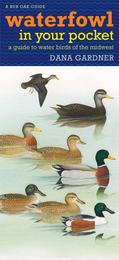 Waterfowl in Your Pocket: A Guide to Water Birds of the Midwest
Dana Gardner
University of Iowa Press, 2008 Waterfowl in Your Pocket is a welcome aid to identifying the many colorful and intriguing water birds of the midwestern states, from the Great Lakes west to the Dakotas, east to Ohio, and south to Kansas and Missouri. Illustrator Dana Gardner has created fourteen panels showing fifty-one species of ducks, geese, swans, grebes, pelicans, coots, cormorants, moorhens, and loons swimming and flying with complete plumage variations—dark phases, light phases, and juvenile and adult male and female forms in summer and winter. The text also includes length, common and scientific names, and frequency and distribution.
Whether flying high overhead in the fall or swimming in a nearby lake in the summer, waterfowl are notoriously difficult to identify, and Gardner has worked hard to make this guide useful for beginning birders as well as those more experienced in the field. Keep binoculars and Waterfowl in Your Pocket in your car or backpack—or pocket!—during spring and fall migration and summer nesting season for help in identifying such captivating water birds as greater white-fronted geese and tundra swans during spring and fall migration, male wood ducks and mallards in breeding plumage, immature and female red-breasted mergansers and snow geese, and uncommon winter visitors such as eiders and scoters.
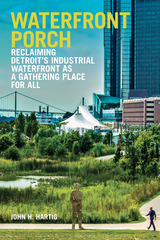 Waterfront Porch: Reclaiming Detroit's Industrial Waterfront as a Gathering Place for All
John H. Hartig
Michigan State University Press, 2019 Detroit was the epicenter of the fur trade era, an unparalleled leader of shipbuilding for one hundred years, the Silicon Valley of the industrial age, and the unquestioned leader of the arsenal of democracy. This unique history depicts Detroit as a city of innovation, resilience, and leadership in responding to change, and examines the current sustainability paradigm shift to which Detroit is responding, pivoting as the city has done in the past to redefine itself and lead the nation and world down a more sustainable path. This book details the building of a new waterfront porch alongside the Detroit River called the Detroit RiverWalk to help revitalize the city and region and promote sustainability practices. It is a story of one of the largest, by scale, urban waterfront redevelopment projects in the United States, and gives hope and proves that Detroit and its metropolitan region have a bright future.
Waterfront Workers: New Perspectives on Race and Class
Edited by Calvin Winslow
University of Illinois Press, 1998 Few work settings compete with the waterfront for a long, rich history of multi-ethnic and multiracial interaction. Irish dockers from Chelsea to Ashtabula to Tacoma labored side-by-side with African Americans, Poles, Germans, Scandinavians, and Italians. Eastern Europeans worked with the Irish and black workers in Philadelphia. Farther south, African Americans were the majority on the Baltimore waterfront in the 1930s. On the Pacific Coast, where laws excluded Chinese workers and African Americans remained relatively few in number until World War II, white dockers and longshoremen dominated. In Waterfront Workers, five scholars explore the complex relationships involved in this intersection of race, class, and ethnicity. Contributors: Eric Arneson, Colin Davis, Howard Kimeldorf, Bruce Nelson, and Calvin Winslow.
Waterfront Workers of New Orleans: Race, Class, and Politics, 1863-1923
Eric Arnesen
University of Illinois Press, 1991 Winner of the John H. Dunning Prize in United States History During the nineteenth century, American and foreign travelers often found New Orleans a delightful, exotic stop on their journeys. Few failed to marvel at the riverfront, the center of the city's economic activity. But historical memory overlooks the immigrants and Black migrants who served in the riverfront's army of laborers and provided the essential human power that kept the cotton, sugar, and other goods flowing. Eric Arnesen examines the diverse group of 10,000 to 15,000 cotton screwmen, longshoremen, cotton and round freight teamsters, cotton yardmen, railroad freight handlers, and Mississippi River roustabouts that formed the backbone of the Crescent City's trade and economic life.
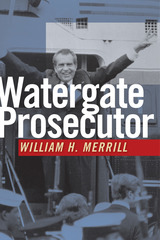 Watergate Prosecutor
William H. Merrill
Michigan State University Press, 2008 This is the inside story of the Watergate trials. Written by the ultimate insider who helped change the course of history: William Merrill was the Special Prosecutor who sent the "plumbers" to jail. Not just any plumbers, but the "Nixon plumbers," hired by the White House to "stop leaks" by any means necessary. Officially, they were the Special Investigation Unit. Unofficially, they were the "dirty tricks squad," whose illegal actions eventually caused the President to resign his office. Bill Merrill prosecuted the plumbers. Here, more than thirty years later, he reveals how he did it. On September 4, 1971, two burglars — later identified as E. Howard Hunt and G. Gordon Liddy — broke into the office of Lewis Fielding, a Beverly Hills psychiatrist, among whose patients was Daniel Ellsberg, a prominent antiwar activist who had recently released to the press the formerly top-secret "Pentagon Papers." On June 13, 1972, five burglars entered the offices of the Democratic National Committee, which were located in the Watergate complex in Washington,
DC. Both of these crimes were eventually traced back to the "plumbers unit," which was directed by John Ehrlichman, President Nixon's top domestic aide. As he convincingly recounts, Merrill sought the job as Assistant Special Prosecutor for one reason: to bring these criminals to justice. In addition, as this revelatory account makes clear, he pursued that goal tenaciously. Merrill wrote this book in 1978, but never published it. Today, at the age of 83, he is confined to a VA hospital in Michigan, the victim of a debilitating stroke. In 1974, Merrill was mentioned in the media almost every day during the Watergate trials. Directing a team of attorneys and assistants, he constructed cases against all of the plumbers—and he won every case. "Watergate" continues to reverberate in the American consciousness today. Revelations that the White House had planned and carried out illegal acts fundamentally rocked the nation. In his response to these unprecedented crimes, William Merrill literally changed the course of history. This is his story.
Watergate's Legacy and the Press: The Investigative Impulse
Jon Marshall
Northwestern University Press, 2011 Did two reporters really change the course of history? And what impact did they actually have on American journalism and government? Jon Marshall explores different answers to those questions by charting the past and the possible future of the critical public service provided by investigative reporters. Bob Woodward and Carl Bernstein symbolize an era when investigative reporters were seen as courageous fighters of corruption and injustice. Although many mainstream news outlets no longer have the resources to support expensive investigative reporters on staff, journalists have found other ways to support themselves Marshall’s discussion of the opportunities they have found in blogs, crowd-sourcing, and nonprofit institutions offers hope for the future of investigative journalism.
 Waterhouses: Landscapes, Housing, and the Making of Modern Lagos
Mark Duerksen
Ohio University Press, 2024 This sweeping history of urban change in Lagos, Nigeria, reveals how its landscapes of waterways and houses have together shaped the modern city. Waterhouses is about the places the people of Lagos have inhabited, imagined, and made home for the past two centuries. It asks what a house in Lagos is and explores how the answer to that question has been historically constructed and reconstructed in turn with the city’s changing landscapes. Written for historians of African and Atlantic history, scholars and practitioners of urbanism, and anyone looking to make sense of Africa’s most populous metropolis today, the book is an approachable history of how houses and water have formed modern Lagos. The book argues that in the coastlands from which Lagos rose, housing architectures were the single most important social, material, and political instruments for people hoping to contour the city’s landscapes—both its ecology and its image—and its historical course. The forms and meanings of houses in Lagos have shifted dramatically over time and in ways that reveal how power, house making, visual perception, and the environment are entangled in modern cities. The book’s chapters encompass six eras and six waterscapes: sandbars, canals, swamps, lagoons, oceans, and floods. These spaces guide the book’s exploration of how people saw and attempted to remake Lagos’s environs in a process that invariably involved housing architectures. At its core, Lagos is a city built through the materials, relations, and powers contained in the dry, solid, and hospitable spaces of homes, which have long been scarce and culturally celebrated resources in the city’s water-constricted setting. While shelter is integral to any city’s development, houses have been particularly important and sought after in Lagos because of the city’s land shortages and because of the societal influence and physical footprint of traditional Yoruba ilé (family compounds), in which activities were historically organized and centered. Through dozens of maps, photographs, and housing plans found in British and Nigerian archives, this book traces the relationship between Lagos’s residential spaces and its urban landscapes across the rise, fall, and aftermath of British colonization. By showing how Yoruba visions of home—though often forgotten or misunderstood today—coexisted with European notions, Waterhouses offers urban planners, policy makers, and architects ideas for how the definingly human act of inhabiting a place might be grounded in practices of continuous custodianship rather than extractive possession.
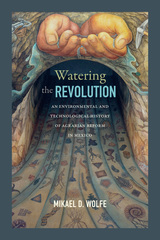 Watering the Revolution: An Environmental and Technological History of Agrarian Reform in Mexico
Mikael D. Wolfe
Duke University Press, 2017 In Watering the Revolution Mikael D. Wolfe transforms our understanding of Mexican agrarian reform through an environmental and technological history of water management in the emblematic Laguna region. Drawing on extensive archival research in Mexico and the United States, Wolfe shows how during the long Mexican Revolution (1910-1940) engineers’ distribution of water paradoxically undermined land distribution. In so doing, he highlights the intrinsic tension engineers faced between the urgent need for water conservation and the imperative for development during the contentious modernization of the Laguna's existing flood irrigation method into one regulated by high dams, concrete-lined canals, and motorized groundwater pumps. This tension generally resolved in favor of development, which unintentionally diminished and contaminated the water supply while deepening existing rural social inequalities by dividing people into water haves and have-nots, regardless of their access to land. By uncovering the varied motivations behind the Mexican government’s decision to use invasive and damaging technologies despite knowing they were ecologically unsustainable, Wolfe tells a cautionary tale of the long-term consequences of short-sighted development policies.
Waterlings
Veno Taufer
Northwestern University Press, 2000 Waterlings are the mysterious beings at the center of Veno Taufer's collection of poems. Employing his trademark concise language with hypercondensed imagery and rhythmic drive, Taufer presents a world that at once invokes shamanistic rituals and children's games and riddles. Lyric poetry has long been the most celebrated branch of literature in Slovenia, and Taufer is considered one of the strongest poets of his generation.
 Water-Resource Development: The Economics of Project Evaluation
Otto Eckstein
Harvard University Press This book is a critique of the procedures used by the federal government to justify and evaluate public works in the water resource field. The methods of measuring benefits and costs that have been devised for projects in the fields of flood control, irrigation, navigation, and electric power are examined from the point of view of the theory of welfare economics. The major sources of bias are identified, and suggestions are made to improve the evaluation practices.
The author concludes that benefit-cost analysis could become a reliable test for measuring the effect of projects on economic welfare, but that the present procedures overstate benefits and understate costs to such an extent that the economic justification of many of the projects in the present program must be called into question. The suggestions for changes which are made are designed to raise the standards of project evaluation to a point where the public and the Congress can have some assurance that the projects will raise the economic welfare of the country.
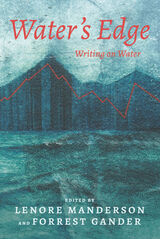 Water's Edge: Writing on Water
Edited by Lenore Manderson and Forrest Gander
Northwestern University Press, 2023 A wide-ranging consideration of water’s plenitude and paucity—and of our relationship to its many forms
Water is quotidian, ubiquitous, precious, and precarious. With their roots in this element, the authors of Water’s Edge reflect on our natural environment: its forms, textures, and stewardship. Born from a colloquium organized by the editors at the Institute at Brown for Environment and Society, the anthology features a diverse group of writers and artists from half a dozen countries, from different fields of scholarship and practice: artists, biologists, geologists, poets, ecocritics, actors, and anthropologists. The contributors explore and celebrate water while reflecting on its disturbances and pollution, and their texts and art play with the boundaries by which we differentiate literary forms.
In the creative nonfiction, poetry, and visual art collected here, water moves from backdrop to subject. Ashley Dawson examines the effects of industrial farming on the health of local ecosystems and economies. Painter Kulvinder Kaur Dhew captures water’s brilliance and multifaceted reflections through a series of charcoal pieces that interlace the collection. Poet Arthur Sze describes the responsibility involved in the careful management of irrigation ditches in New Mexico. Rather than concentrating their thoughts into a singular, overwhelming argument, the authors circulate moments of apprehension, intimation, and felt experience. They are like tributaries, each carrying, in a distinctive style, exigent and often intimate reports concerning a substance upon which all living organisms depend.
The Waters of Star Lake: A Novel
Sara Rath
University of Wisconsin Press, 2012
Newly widowed Natalie Waters expects only nostalgia and solitude at her quiet, rustic cabin. But the wilderness conceals more than one perilous mystery. Where in Wisconsin’s Northwoods did the notorious gangster John Dillinger hide $210,000 following a violent FBI shootout? And why do the local timberwolves incite so much rage among Natalie’s neighbors?
As predators circle and howl in the dark, Ginger, the bartender at the nearby Star Lake Saloon, draws Natalie deep into the secrets not only of Dillinger but of the ecologies of family, forest, and heart. With the reluctant support of her granddaughter and advice from a handsome wolf biologist, Natalie is forced to choose between adversity and adventure.
Sara Rath continues her popular Northwoods saga in this affirming and often humorous tale of romance, betrayal, and danger.
 Waters of the United States: POTUS, SCOTUS, WOTUS, and the Politics of a National Resource
Royal C. Gardner
Island Press, 2024 In 2023, the Supreme Court made one of its most devastating rulings in environmental history. By narrowing the legal definition of ‘waters of the United States’ (WOTUS), the court opened the floodgates to unregulated pollution. But while tremendously consequential, the decision was also simply the latest in a long series of battles over WOTUS, and which rivers, streams, lakes, ponds, wetlands, and perhaps even farm fields were to be protected by the Clean Water Act of 1972.
Waters of the United States is an unprecedented exploration of this history—and its importance for today’s efforts to conserve a critical natural resource. The book not only examines how bodies of water are legally defined (and therefore protected), but who gets to decide on these definitions. The result is a fascinating look at the ongoing power struggle between the president and federal agencies, the courts, the states, and Congress, over water quality.
Waters of the United States offers the detailed analysis necessary for any lawyer or environmental advocate to understand the nuances of water policy, while spinning a compelling narrative for readers who have never cracked a law book. The unique mix of insights into environmental law, history, and politics is required reading for anyone who cares about the future of the nation’s water.
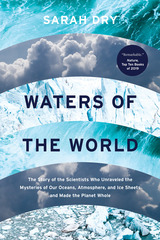 Waters of the World: The Story of the Scientists Who Unraveled the Mysteries of Our Oceans, Atmosphere, and Ice Sheets and Made the Planet Whole
Sarah Dry
University of Chicago Press, 2019 The compelling and adventurous stories of seven pioneering scientists who were at the forefront of what we now call climate science.
From the glaciers of the Alps to the towering cumulonimbus clouds of the Caribbean and the unexpectedly chaotic flows of the North Atlantic, Waters of the World is a tour through 150 years of the history of a significant but underappreciated idea: that the Earth has a global climate system made up of interconnected parts, constantly changing on all scales of both time and space. A prerequisite for the discovery of global warming and climate change, this idea was forged by scientists studying water in its myriad forms. This is their story.
Linking the history of the planet with the lives of those who studied it, Sarah Dry follows the remarkable scientists who summited volcanic peaks to peer through an atmosphere’s worth of water vapor, cored mile-thick ice sheets to uncover the Earth’s ancient climate history, and flew inside storm clouds to understand how small changes in energy can produce both massive storms and the general circulation of the Earth’s atmosphere. Each toiled on his or her own corner of the planetary puzzle. Gradually, their cumulative discoveries coalesced into a unified working theory of our planet’s climate.
We now call this field climate science, and in recent years it has provoked great passions, anxieties, and warnings. But no less than the object of its study, the science of water and climate is—and always has been—evolving. By revealing the complexity of this history, Waters of the World delivers a better understanding of our planet’s climate at a time when we need it the most.
 Waterscapes: Reservoirs, Environment and Identity in Modern England and Wales
Andrew McTominey
University of London Press, 2025 How did reservoirs alter the countryside and city life? The answer is a riveting story of water and identity in modern Britain.
Carving vast lakes into the countryside, reservoirs have long reshaped the landscapes and communities of England and Wales. Waterscapes evaluates how these feats of engineering transformed rural and urban environments between the late nineteenth and early twentieth centuries, altering local ecologies and economies. Through studies of Leeds’s Washburn Valley, Liverpool’s Vyrnwy Reservoir, and Birmingham’s Elan Reservoir, Andrew McTominey addresses the environmental consequences of dam construction and the surprising ways in which reservoirs became sites of leisure and tourism.
McTominey explains that water management has never been a simple question of supply and demand, but a story of contested landscapes and the complex interplay between nature and human ambition. Drawing on environmental history and urban studies, Waterscapes demystifies the reservoirs that continue to shape Britain’s countryside and city life.
 A Watershed Moment: The American West in the Age of Limits
Edited by Robert Frodeman, Evelyn Brister, and Luther Propst
University of Utah Press, 2024 The American West is often portrayed as a place of rugged, unending landscapes presenting us with boundless opportunities. But the land is more fragile and resources more finite than popular perceptions acknowledge. This collection of essays, A Watershed Moment, reveals tensions between a culture of economic growth and personal freedom and the ecological, economic, and social constraints set by community values and the land itself. As Westerners and their communities come up against these limits, the volume editors highlight issues of sustainability endemic to the region and to the nation as a whole.
The volume presents practical approaches to land use, land management, and community planning that are motivated by philosophical views on justice, quality of life, and sustainability in the American West. The contributors are policymakers, government employees, land and water managers, urban planners, biologists, tribal members, writers, and academics from a variety of backgrounds and perspectives. The result is a compelling vision of place-based, policy-oriented sustainability across the West.
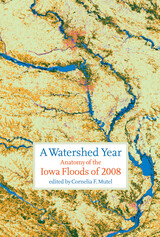 A Watershed Year: Anatomy of the Iowa Floods of 2008
Cornelia F. Mutel
University of Iowa Press, 2010 In June 2008, the rivers of eastern Iowa rose above their banks to create floods of epic proportions; their amazing size—flowing in places at a rate nearly double that of the previous record flood—and the rapidity of their rise ruined farmlands and displaced thousands of residents and hundreds of businesses. In Cedar Rapids, the waters inundated more than nine square miles of the downtown area; in Iowa City, where the flood was also the most destructive in history, the University of Iowa’s arts campus was destroyed. By providing a solid base of scientific and technical information presented with unusual clarity and a wealth of supporting illustrations, the contributors to this far-reaching book, many of whom dealt firsthand with the 2008 floods, provide a detailed roadmap of the causes and effects of future devastating floods. The twenty-five essays fall naturally into four sections. “Rising Rivers, Spreading Waters” begins by comparing the 2008 floods with the midwestern floods of 1993, moves on to trace community responses to the 2008 floods, and ends by illuminating techniques for forecasting floods and determining their size and frequency. “Why Here, Why Now?” searches for possible causes of the 2008 floods and of flooding in general: annual crops and urban landscapes, inflows into and releases from reservoirs, and climate change. “Flood Damages, Flood Costs, Flood Benefits” considers the complex mix of flood costs and effects, emphasizing damages to cities and farmlands as well as potential benefits to natural communities and archaeological sites. “Looking Back, Looking Forward” lays out approaches to managing the floods of the future that are sure to come. While the book draws most of its examples from one particular region, it explains flooding throughout a much larger region—the midwestern Corn Belt—and thus its sobering yet energizing lessons apply well beyond eastern Iowa. By examining the relationships among rivers, floodplains, weather, and modern society; by stressing matters of science and fact rather than social or policy issues; and by addressing multiple environmental problems and benefits, A Watershed Year informs and educates all those who experienced the 2008 floods and all those concerned with the larger causes of flooding.
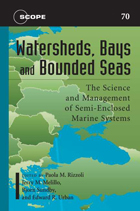 Watersheds, Bays, and Bounded Seas: The Science and Management of Semi-Enclosed Marine Systems
Edited by Edward R. Urban, Jr., Bjørn Sundby, Paola Malanotte-Rizzoli, and Jerry M. Melilllo
Island Press, 2009 Some of the world’s most important bodies of water, from the Black Sea to the Bay of Bengal, are classified as “semi-enclosed marine systems” (SEMS). Separated from the open seas by a strait, island archipelago, or physical process, SEMS are particularly vulnerable to environmental damage and particularly difficult to fully understand and manage.
Watersheds, Bays, and Bounded Seas provides state-of-the-science information about these complex systems and identifies best management practices to preserve them. With contributions by natural and social scientists, the book examines both the political and biophysical forces affecting semi-enclosed marine systems.
SEMS comprise a substantial portion of the coasts—areas with high population density—and we rely on them for often-competing services such as navigation and transport, disposal of waste, provision of food, extraction of minerals, and leisure. The book describes how human activities could irrevocably alter these fragile ecosystems, exploring threats from runoff to climate change. It also addresses the unique challenges of managing SEMS, including cooperation between multiple nations.
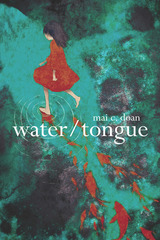 water/tongue
mai c. doan
Omnidawn, 2019 Grappling with the shock of her grandmother’s suicide, mai c. doan undertook a writing project that might give voice to her loss as well as to grapple with memory, and the challenge of articulation and of documentation, in all of their contradictions and (im)possibilities. In the poems that comprise water/tongue, doan conjures visceral and intuitive elements of experience to articulate the gendered and intergenerational effects of violence, colonialism, and American empire. Breaking the silence surrounding these experiences, doan conjures a host of voices dispersed across time and space to better understand the pain that haunted her family—made tragically manifest in her grandmother’s death. Looking not only to elements of Vietnamese history and culture, but to the experience of migration and racism in the United States, this book charts a path for both understanding and resistance. Indeed, doan does not merely wish to unearth the past, but also to change the future. If we want to do so, she shows, we must commune with the voices of sufferers both past and present. doan demonstrates how even the form of a work of poetry can act as a subversion of what a reader expects from the motion of the act of reading a line of type or a page of text. doan disarms and unsettles the ways a reader is led to levels of comprehension, and thus disrupts what “comprehension” might mean, as the reader follows the flow of a work, providing an opportunity to sense, and to confront hierarchies that structure ordinary reading and writing. doan brings a reader to conscious appraisal of the hierarchies that affect us, and how these hierarchies can constrain our insights and our mobility. water/tongue is a critical read for anyone interested in the long effects of gendered and cultural violence, and the power of speech to forge new and empowering directions.
 Waterways of Bangkok: Memory, Landscape and Twilight
Michael Hurley
National University of Singapore Press, 2025 The Chao Phraya River is a maternal being at the heart of Bangkok. Long before the invention of Thailand, the river shaped life in Siam. In the 19th century, Bangkok had an extensive canal system, numerous floating dwellings, and people traveled primarily by water. Even now, although many canals have become roads, the river remains a vital artery of the metropolis. Furthermore, the waterways are full of meaning.
This ethnographic study explores memory along the waterways, a realm of boats and hovels, merchants and war captives, temples and ghosts. The river also flows into the dissonant realities of Thailand, a country of deep conflicts over power and national ideology. Based on research in a time of political turmoil, centered on the late years of the long-reigning monarch, Rama IX, this book invites readers to look beyond established images of Thai society. More broadly, this work will speak to readers interested in water, cities, and the bonds of memory and landscape.
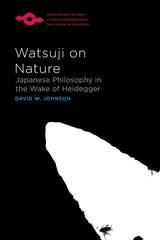 Watsuji on Nature: Japanese Philosophy in the Wake of Heidegger
David W. Johnson
Northwestern University Press, 2019 In the first study of its kind, David W. Johnson’s Watsuji on Nature reconstructs the astonishing philosophy of nature of Watsuji Tetsuro (1889–1960). Johnson situates Watsuji’s philosophy in relation to his reception of the thought of Heidegger and to his renewal of core ontological positions in classical Confucian and Buddhist philosophy. He shows that for Watsuji we have our being in the lived experience of nature, one in which nature and culture compose a tightly interwoven texture called fūdo(<風土). By fully unfolding Watsuji’s novel and radical claim that this is a setting that is neither fully external to human subjectivity nor merely a product of it, this book also sets out what still remains unthought in this concept, as well as in the relational structure that underwrites it. Johnson argues that what remains unarticulated is nothing less than the recovery of a reenchanted conception of nature and an elucidation of the wide-ranging implications of a relational conception of the self for questions about the disclosive character of experience, the distinction between fact and value, and the possibility of a place-based ecological ethics. In an engagingly lucid and deft analysis, Watsuji on Nature radically expands our appreciation of twentieth-century Japanese philosophy and shows what it has to offer to a global philosophical conversation.
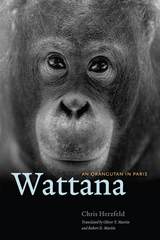 Wattana: An Orangutan in Paris
Chris Herzfeld
University of Chicago Press, 2016 She likes tea, sews, draws on papers and is a self-taught master of tying and untying knots. But she is not a crafty woman of the DIY set: she is Wattana, an orangutan who lives in the Jardin des Plantes Zoo in Paris. And it is in Paris where Chris Herzfeld first encounters and becomes impressed by Wattana and her exceptional abilities with knots. In Wattana: An Orangutan in Paris Herzfeld tells not only Wattana’s fascinating story, but also the story of orangutans and other primates—including bonobos, chimpanzees, and gorillas—in captivity.
Offering a uniquely intimate look at the daily lives of captive great apes, Herzfeld uses Wattana’s life to trace the history of orangutans from their first arrival in Europe in 1776 to the inhabitants of the Zoo of Paris and other zoos today. She provides a close look at the habits, technical know-how, and skills of Wattana, who, remarkably, uses strings, paper rolls, rope, and even pieces of wood to make things. And she thoughtfully explores how apes individually—and often with ingenuity—come to terms with and adapt to their captive environments and caretakers. Through these stories, Wattana sympathetically reveals the extraordinary psychology and distinctive personalities of great apes as well as the interconnections between animal and human lives, especially in zoos.
Scientists predict that orangutans will disappear from the wild by 2030, and captive animals like Wattana may, as a result, provide our best chance to understand and appreciate their astonishing intelligence and abilities. Wattana, the accomplished maker of knots, is the hero of this poignant book, which will enthrall anyone curious about the lives of our primate cousins.
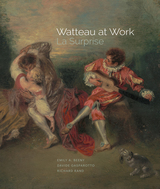 Watteau at Work: La Surprise
Emily A. Beeny
J. Paul Getty Trust, The, 2022 Marking the three hundredth anniversary of Jean Antoine Watteau’s death, this publication takes a close, revealing look at his recently rediscovered painting La Surprise.
The painting La Surprise by Jean Antoine Watteau (1684–1721) belongs to a new genre of painting invented by the artist himself—the fête galante. These works, which show graceful open-air gatherings filled with scenes of courtship, music and dance, strolling lovers, and actors, do not so much tell a story as set a mood: one of playful, wistful, nostalgic reverie. Esteemed by collectors in Watteau’s day as a work that showed the artist at the height of his skill and success, La Surprise vanished from public view in 1848, not to reemerge for more than a century and a half. Acquired by the Getty Museum in 2017, it has never before been the subject of a dedicated publication. Marking the three hundredth anniversary of Watteau’s death, this book considers La Surprise within the context of the artist’s oeuvre and discusses the surprising history of collecting Watteau in Los Angeles.
This volume is published to accompany an exhibition on view at the J. Paul Getty Museum at the Getty Center from November 23, 2021, to February 20, 2022.
Watteau's Shepherds: The Detective Novel in Britain, 1914–1940
LeRoy Lad Panek
University of Wisconsin Press, 1979 Detective stories should be examined from a literary point of view, with special attention to literary history and to materials and patterns from which the writers created their fictions. This book sheds new light into the fascinating field of detective fiction.
Watunna: An Orinoco Creation Cycle
By Marc de Civrieux
University of Texas Press, 1997 Originally published in Spanish in 1970, Watunna is the epic history and creation stories of the Makiritare, or Yekuana, people living along the northern bank of the Upper Orinoco River of Venezuela, a region of mountains and virgin forest virtually unexplored even to the present. The first English edition of this book was published in 1980 to rave reviews. This edition contains a new foreword by David Guss, as well as Mediata, a detailed myth that recounts the origins of shamanism.
Wave and Tidal Generation Devices: Reliability and availability
Peter Tavner
The Institution of Engineering and Technology, 2017 There are many wave and tidal devices under development but as yet very few are actually in revenue earning production. However the engineering problems are gradually being solved and there is an appetite to invest in these renewable generation technologies for harsher environments. To some extent the wave and tidal generation industry is following in the wake of the wind industry, particularly learning from the growing experience of offshore wind farm deployment. This book combines wind industry lessons with wave and tidal field knowledge to explore the main reliability and availability issues facing this growing industry.
Wave and Tidal Generation Devices: Reliability and availability
Peter Tavner
The Institution of Engineering and Technology, 2024 The potential of wave power lies in waves' kinetic energy. Waves have a far greater energy density than wind or solar and can generate between 24-70 kW per meter of wave. The global tidal energy potential is estimated to be 3 TW, with approximately 1 TW in comparably shallow waters. The challenge for the development of marine energy converters (MEC) is to achieve an investment cost and rate of return that will make marine energy devices viable, compared to other sources of electrical power.
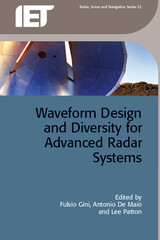 Waveform Design and Diversity for Advanced Radar Systems
Fulvio Gini
The Institution of Engineering and Technology, 2012 The phrase 'waveform design and diversity' refers to an area of radar research that focuses on novel transmission strategies as a way to improve performance in a variety of civil, defense and homeland security applications. Three basic principles are at the core of waveform diversity. First is the principle that any and all knowledge of the operational environment should be exploited in system design and operation. Second is the principle of the fully adaptive system, that is, that the system should respond to dynamic environmental conditions. Third is the principle of measurement diversity as a way to increase system robustness and expand the design trade space. Waveform design and diversity concepts can be found dating back to the mid-twentieth century. However, it has only been in the past decade or so, as academics and practitioners have rushed to exploit recent advances in radar hardware component technology, such as arbitrary waveform generation and linear power amplification, that waveform diversity has become a distinct area of research. The purpose of this book is to survey this burgeoning field in a way that brings together the diverse yet complementary topics that comprise it. The topics covered range from the purely theoretical to the applied, and the treatment of these topics ranges from tutorial explanation to forward-looking research discussions. The topics treated in this book include: classical waveform design and its extensions through information theory, multiple-input multiple-output systems, and the bio-inspired sensing perspective; the exploration of measurement diversity through distributed radar systems, in both cooperative and non-cooperative configurations; the optimal adaptation of the transmit waveform for target detection, tracking, and identification; and more. This representative cross-section of topics provides the reader with a chance to see the three principles of waveform diversity at work, and will hopefully point the way to further advances in this exciting area of research.
Waveguide Handbook
N. Marcuvitz
The Institution of Engineering and Technology, 1986 The Waveguide Handbook is an unabridged reprint of the book first published in 1951 by McGraw Hill as Volume 10 of the MIT Radiation Laboratory Series.
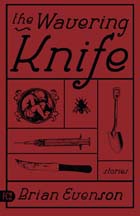 The Wavering Knife: Stories
Brian Evenson
University of Alabama Press, 2004 Replete with the brutality, primordial waste, and savage blankness familiar to readers of his earlier works, Evenson's Kafkaesque allegories entice the mind while stubbornly disordering it. In the title story an obsessive consciousness folds back on itself, creating a vertiginous mélange of Poe and Borges, both horrific and metaphysical. Here, as in "Moran's Mexico," and "Greenhouse," the solitary nature of reading and writing leads characters beyond human limits, making the act of putting words to paper a monstrous violation opening onto madness. In "White Square" the representation of humans by dimly colored shapes confirms our feeling that something lies behind these words, while seeming to mock us with the futility of seeking it. Evenson's enigmatic names-Thurm, Bein, Hatcher, Burlun-placeable landscapes, and barren rooms all combine to create a semblance of conceptual abstraction, as though the material universe had come to exist inside someone's head.
Small wonder that Evenson's work has attracted so much attention among philosophers, literary critics, and other speculative intelligences, for it continuously projects a tantalizing absence, as though there were some key or code that, if only we knew it, would illuminate everything. However, the blade of discernment wavers, and we are left to our own groping interpretations.
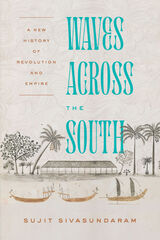 Waves Across the South: A New History of Revolution and Empire
Sujit Sivasundaram
University of Chicago Press, 2020 This is a story of tides and coastlines, winds and waves, islands and beaches. It is also a retelling of indigenous creativity, agency, and resistance in the face of unprecedented globalization and violence. Waves Across the South shifts the narrative of the Age of Revolutions and the origins of the British Empire; it foregrounds a vast southern zone that ranges from the Arabian Sea and southwest Indian Ocean across to the Bay of Bengal, and onward to the South Pacific and the Tasman Sea. As the empires of the Dutch, French, and especially the British reached across these regions, they faced a surge of revolutionary sentiment. Long-standing venerable Eurasian empires, established patterns of trade and commerce, and indigenous practice also served as a context for this transformative era. In addition to bringing long-ignored people and events to the fore, Sujit Sivasundaram opens the door to new and necessary conversations about environmental history, the consequences of historical violence, the legacies of empire, the extraction of resources, and the indigenous futures that Western imperialism cut short. The result is nothing less than a bold new way of understanding our global past, one that also helps us think afresh about our shared future.
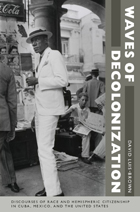 Waves of Decolonization: Discourses of Race and Hemispheric Citizenship in Cuba, Mexico, and the United States
David Luis-Brown
Duke University Press, 2008 In Waves of Decolonization, David Luis-Brown reveals how between the 1880s and the 1930s, writer-activists in Cuba, Mexico, and the United States developed narratives and theories of decolonization, of full freedom and equality in the shadow of empire. They did so decades before the decolonization of Africa and Asia in the mid-twentieth century. Analyzing the work of nationalist leaders, novelists, and social scientists, including W. E. B. Du Bois, José Martí, Claude McKay, Luis-Brown brings together an array of thinkers who linked local struggles against racial oppression and imperialism to similar struggles in other nations. With discourses and practices of hemispheric citizenship, writers in the Americas broadened conventional conceptions of rights to redress their loss under the expanding United States empire. In focusing on the transnational production of the national in the wake of U.S. imperialism, Luis-Brown emphasizes the need for expanding the linguistic and national boundaries of U.S. American culture and history. Luis-Brown traces unfolding narratives of decolonization across a broad range of texts. He explores how Martí and Du Bois, known as the founders of Cuban and black nationalisms, came to develop anticolonial discourses that cut across racial and national divides. He illuminates how cross-fertilizations among the Harlem Renaissance, Mexican indigenismo, and Cuban negrismo in the 1920s contributed to broader efforts to keep pace with transformations unleashed by ongoing conflicts over imperialism, and he considers how those transformations were explored in novels by McKay of Jamaica, Jesús Masdeu of Cuba, and Miguel Ángel Menéndez of Mexico. Focusing on ethnography’s uneven contributions to decolonization, he investigates how Manuel Gamio, a Mexican anthropologist, and Zora Neale Hurston each adapted metropolitan social science for use by writers from the racialized periphery.
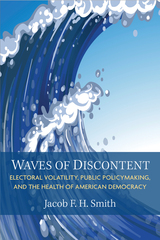 Waves of Discontent: Electoral Volatility, Public Policymaking, and the Health of American Democracy
Jacob F.H. Smith
University of Michigan Press, 2025 After a period of relative calm in congressional elections prior to 2006, America has experienced a series of highly competitive, volatile national elections. Since then, at least one of the US House, US Senate, and presidency has flipped party control—often with a large House or Senate seat swing—with the exception of the 2012 election. In Waves of Discontent, Jacob F. H. Smith argues that a pervasive feeling of displeasure in the American public has caused this increase in electoral volatility.
Conducting statistical analyses of a wide array of surveys, Smith found that these feelings of displeasure translate to lower turnout among voters from the president’s party and a higher percentage of independents voting for the other party. Subsequently, he conducted a content analysis of New York Times articles to look at the connection between unrest in American society and seat swings in congressional elections, even before the existence of polling. Examining the consequences of volatility in congressional elections reveals that political amateurs are more likely to win in wave years than in normal years. Based on this data, Smith presents a new theory about the policy process—the policy doom loop—in which frustration among voters at both the inability of Congress to pass policy and anger at policies that actually do pass results in even more churn in congressional elections. Waves of Discontent offers some suggestions to promote constructive policymaking efforts in Washington to reduce frustration in the electorate.
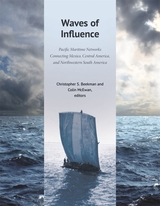 Waves of Influence: Pacific Maritime Networks Connecting Mexico, Central America, and Northwestern South America
Christopher S. Beekman
Harvard University Press The Pacific Coast of the Americas linked Pre-Columbian complex societies from Mexico to Peru, facilitating exploration, communication, and transportation in a way that terrestrial routes could not match. Yet West Mexico, the Isthmo-Colombian Area, and Ecuador, with their great stretches of coastline, were marginalized by the definition of the Mesoamerican and Andean culture areas in the 1940s. Waves of Influence seeks to renew the inquiry into Pacific coastal contacts and bring fresh attention to connections among regions often seen as isolated from one another.
This volume reassesses the evidence for Pre-Columbian maritime contacts along the Pacific Coast, from western Mexico to northwestern South America. The authors draw upon recent models of globalization, technological style, and ritual commensality alongside methods such as computer simulation, iconographic analysis, skeletal studies, and operational chains. No single model can characterize the coastal network over 4,000 km of coastline and over 4,000 years of interaction, and authors present individual case studies to demonstrate how each region participated in its own distinct networks. Essays address the difficulty of maritime movement, the transfer of crops, technology, and knowledge, the identification of different modalities of contact, and the detection of important nodes and social actors within the coastal network.
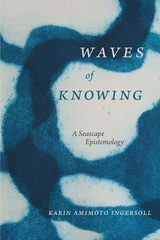 Waves of Knowing: A Seascape Epistemology
Karin Amimoto Ingersoll
Duke University Press, 2016 In Waves of Knowing Karin Amimoto Ingersoll marks a critical turn away from land-based geographies to center the ocean as place. Developing the concept of seascape epistemology, she articulates an indigenous Hawaiian way of knowing founded on a sensorial, intellectual, and embodied literacy of the ocean. As the source from which Kānaka Maoli (Native Hawaiians) draw their essence and identity, the sea is foundational to Kanaka epistemology and ontology. Analyzing oral histories, chants, artwork, poetry, and her experience as a surfer, Ingersoll shows how this connection to the sea has been crucial to resisting two centuries of colonialism, militarism, and tourism. In today's neocolonial context—where continued occupation and surf tourism marginalize indigenous Hawaiians—seascape epistemology as expressed by traditional cultural practices such as surfing, fishing, and navigating provides the tools for generating an alternative indigenous politics and ethics. In relocating Hawaiian identity back to the waves, currents, winds, and clouds, Ingersoll presents a theoretical alternative to land-centric viewpoints that still dominate studies of place-making and indigenous epistemology.
 Waves of Opposition: Labor and the Struggle for Democratic Radio
Elizabeth Fones-Wolf
University of Illinois Press, 2006 Radio sparked the massive upsurge of organized labor during the Great Depression. The powerful new medium became an important weapon in the ideological war between labor and business. Corporations used radio to sing the praises of individualism and consumerism, while unions emphasized equal rights, industrial democracy, and social justice. Elizabeth Fones-Wolf analyzes the battle to utilize, and control, the airwaves in radio's early era. Working chronologically, she explores the advent of local labor radio stations such as WCFL and WEVD, labor's campaigns against corporate censorship, and union experiments with early FM broadcasting. Using union archives and broadcast industry records, Fones-Wolf demonstrates radio's key role in organized labor's efforts to fight business's domination of political discourse throughout the 1930s, 1940s, and 1950s. She concludes with a look at how labor's virtual disappearance from today's media helps explain why unions have become so marginalized, and offers important historical lessons for revitalizing organized labor.
|
|
